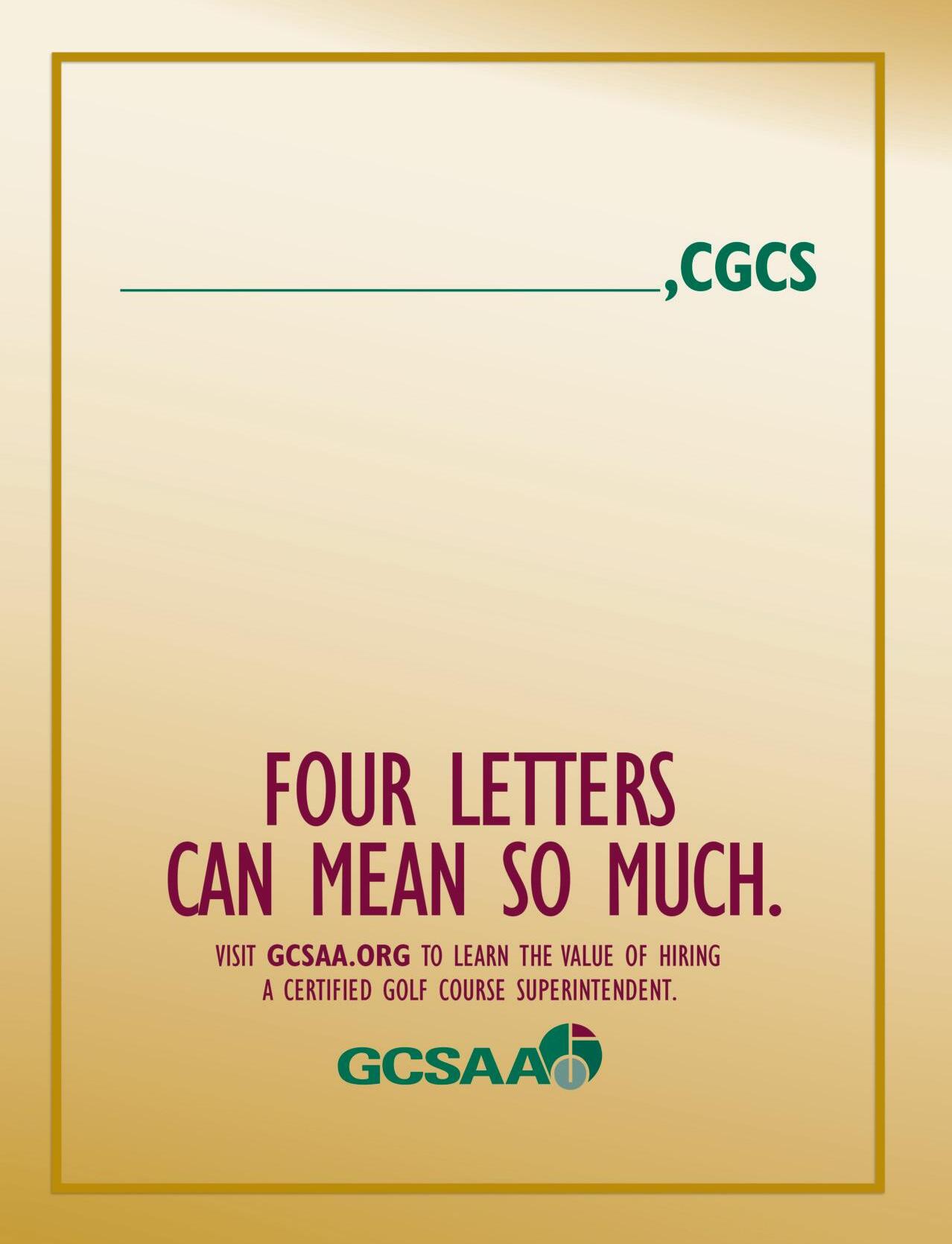
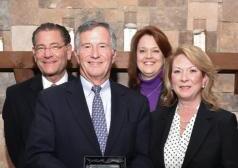










When BoardRoom magazine first made a splash in the private club industry, BoardRoom espoused the philosophy of educating boards of directors… private club decision makers.
Our target market has been and continues to be the industry’s decision makers…the club’s board of directors and senior management.
“Replace emotion with facts…raise a problem and suggest a solution” or “take away a pain,” has been our operating philosophy.
Now 20 years later BoardRoom’s mission hasn’t changed, but as we kick off another year, we are reinforcing our commitment to inform and educate the club’s decision makers. Thus you will see some changes in our January/February 2016 issue.
BoardRoom was established based on the structure of a club…a board of directors, senior management, surrounded by various committees offering advice to the board. Now we want to reinforce this concept and there’s a sharpened focus on providing information through this committee structure.
In BoardRoom 2016, you will find stories under the executive, finance, house, membership, green, insurance, technology, law and legislation, strategic and long range planning, tennis, wine, human resources and wellness and fitness committees, as well as others throughout the year.
Yes, the private club industry has adapted to better meet the requirements of its members and this is reflected in newer committees such as wellness and fitness, which at many clubs has developed into a major draw for new club members. These club programs better reflect what their members want today.
The intent is to give our readers articles focusing on these committees, raising questions and providing solutions within 600 words. We want takeaways clubs and decision makers can put into practice.
Our featured writers remain front and center, with current, informative topics within their realm of understanding. General managers will offer their thoughts and opinions under our ‘On the Frontline’ feature, and BoardRoom’s Distinguished Club package will pass along ideas that the country’s top clubs are using with great effect for their members.
John Fornaro’s Publisher’s Perspective will continue to raise current and poignant issue and
our cover stories will focus on what’s happening in the private club industry and heaven knows the industry faces key issues, including water, insurance, healthcare, and membership – growth and retention.
BoardRoom Briefs (a feature in earlier years) gets a reincarnation this year. These shorter, to the point stories give readers a quick read on specific topics. The purpose of BoardRoom Briefs is to offer content that goes beyond the buzz, by uncovering and summarizing important industry information. It will offer practical insights from hundreds of industry experts with a focus on fit for boards, board presidents and paid management.
As well, our other recognition programs – the industry’s most outstanding club presidents, our Lifetime Achievement awards and the BoardRoom Award of Dedication continue.
In fact, this year, three people – Jeffrey P. McFadden, Dan Denehy and Gregg Patterson – are being recognized with the BoardRoom Award of Dedication.
Patterson, who retired January 31 after 34 years as general manager at the Beach Club of Santa Monica, is being recognized in this issue. Andrea Curthoys, Beach Club assistant manager who has worked with Patterson for over 20 years, in her story gives us insight into the whirlwind known as Gregg Patterson.
Gregg, of course, isn’t going quietly into the night. He’ll keep his dibs in the industry working with clubs and groups throughout the world, while enjoying his many ‘passions.’
McFadden is general manager of the Union League of Philadelphia, founded in 1862 as a Patriotic Society to support the policies of Abraham Lincoln. Today with about 3,300 members, the Union League of Philadelphia is recognized as one of America’s most outstanding clubs. Dan Denehy heads up Denehy – Club Thinking Partners, one of the country top search firms. Both McFadden’s and Denehy’s achievements will be featured in BoardRoom stories this year.
BoardRoom’s Lifetime Achievement recipients – Donna Coyne and Linda Blair also will be recognized with stories in later issues BR
Got a comment?
Drop us a note: dave@boardroommag.com
Publisher/CeO
John G. Fornaro
editor/Co-Publisher
Dave White
assoc. editor/vP Creative/Co-Publisher
Heather Arias de Cordoba
aPCD executive Director
Bill Thomas
editorial & Marketing Director
Dee Kaplan
account Manager
Dina Alleluia-Carr
Contact information www.BoardRoomMagazine.com www.apcd.com (949) 376-8889 or (949) 365-6966
subscriptions and Website
Heather Arias de Cordoba
www.BoardRoomMagazine.com (949) 365-6966
Featured Columnists
ronald banaszak
henry Delozier
John G. Fornaro

Co-Founder/CeO
John G. Fornaro
President
Keith Jarrett
Chief analyst Frank Gore
Chief information Officer
Jeff Briggs
executive Director
Bill Thomas
Contact information www.DistinguishedClubs.com (949) 376-8889
bonnie J. Knutson richard Kopplin nancy M. Levenburg
Contributing Writers
bill amick
heather arias de Cordoba
bob bodman
Chris boettcher bill boothe
boyd Carr
Lisa Carroll
Dr. ronald F. Cichy
terry Clark
Gregg Patterson Kevin reilly bill schwartz Dave White
rick Coyne andrea Curthoys
Dave Doherty
John embree
rhett evans
rick Ladendorf
Lynne LaFond Deluca
steve Mona Macdonald niven
Craig smith robyn nordin stowell
steven Poe
Mitchell stump Charlie turner
Frank vain bruce Williams
Dean Wochaski
endorsements, strategic Partners and allied associations











BoardRoom magazine is published by APCD Inc.
1100 S. Coast Hwy. #309 Laguna Beach, California 92691
The BoardRoom magazine (USPS 022516, ISSN 15537684) is a bi-monthly trade publication. Issue 262 Periodical postage paid at Laguna Beach, Calif. and additional mailing offices. POSTMASTER: Send address changes to THE BOARDROOM magazine, P.O. Box 9455, Laguna Beach, Calif. 92652.
Reach The BoardRoom magazine at (949) 376-8889 ext. 2 or fax (949) 376-6687, email heather@boardroommag.com or johnf@apcd.com or visit the website at www.BoardRoomMagazine.com.


PubLisher’s PersPeCtive | 10

HoW MuCH Do you APPReCiATe youR GeneRAl MAnAGeR?
JoHn G. FoRnARo
So the question is: Why must the general manager be seen and heard at the club to be relevant? And do general managers get their boards and members to realize and appreciate the work they do? And what works at one club might be different for another GM at another club. PLiGhts anD
exeCutive COMMittee | 16

THe BeneFiTS oF A CoMMon lAnGuAGe
RonAlD BAnASzAK
“The single biggest problem in communication is the illusion that it has taken place,” George Bernard Shaw once said. And, of course, communication is fundamental to success in a private club.

oPen ADMiSSion in PRivATe CluBS
nAnCy M. levenBuRG
Open admission is a term that’s often batted about in higher education, particularly community colleges and those institutions that only grant associate degrees. It generally means that the admission process is unselective and non-competitive.

GolF CouRSe ConSeRvATion eASeMenTS
Kevin Reilly
Conservation easements came under fire in a verdict issued recently by the United States Tax Court. Two sections of St. James Plantation, The Members Club and The Reserve Club were denied the ability to claim charitable contribution deductions for their conservation easements, by the IRS.

STRATeGiC GoveRnAnCe
THe BASe oF THe leADeRSHiP TRiAnGle
RiCHARD KoPPlin
14
GLObaL PersPeCtives | 98

iMAGinATive iDeAS CReATe SoluTionS
HenRy DelozieR
Ideas are the currency of our times and of the people who have them. A great idea has the ability to turn an industry on its head. Look what Uber has done to the taxi industry and what Airbnb has done to lodging. Our business is no different. FOOD FOr thOuGht | 102

THe ClouD BRinGS HiGH-enD F&B SoFTWARe DoWn To eARTH
Bill SCHWARTz
Until recently, club operators looking to implement food and beverage procurement, inventory and culinary control systems needed to purchase systems that would run on their in-house computers. The cloud has changed all that.
In his seminal work, Governance as Leadership (Reframing the Work of Nonprofit Boards) author Richard Chait presents governance leadership as a triangle with one governing arm being fiduciary, another being strategic and the final generative.
MeMbershiP MusinGs | 86

DinKS, SinKS, AnD HenRyS Too
Bonnie J. KnuTSon
Acronyms are labels. They’re sometimes thought of as a lazy marketer’s way out because they give businesses an excuse to put a lot of consumers into a single box. But let’s be honest here. Acronyms are also kind of cute and can be fun to use.

THe STAy – oR Be Gone – RevieW GReGG PATTeRSon
The time has arrived for the board’s annual review of the general manager. Mr. Long Time Manager has been asked to create a “review template” he and the board members can use in evaluating him. This year Mr. Long Time Manager decided to create a Stay, or Be Gone Review to determine whether the incoming board should keep him, or send him packing.

SeCTionS
leADeRS on BoARD.
The Next Generation of Club Leaders By Frank Vain
on THe FRonTlineS.
The Tour By
Macdonald Niven
BoARDRooM ReCoGniTion.
Gregg Patterson By Andrea Curthoys
TeCHnoloGy PeRSPeCTiveS.
Technology Vendor News By Bill Boothe
DiSTinGuiSHeD iDeAS.
The Landings Club
24
66
76
assOCiatiOn OF Private CLub DireCtOrs
David Mackesey and Hank Salvo BoardRoom’s 2015 Distinguished Club Presidents By Dave White, editor

82

88
Junior Chef Camp Inspires Young Members
DiSTinGuiSHeD iDeAS. .
The Reserve Club
Geocaching: A Club Fitness Program
GoveRnAnCe.
Owner of My Club By
Dr. Ronald F. Cichy
GoveRnAnCe.
Interim Management By
Terry Clark
CluB SeRviCe.
Do You Want a Professional Club Manager? By
Chris Boettcher
CASe STuDieS
C2 liMiTeD DeSiGn ASSoCiATeS.
CHAMBeRS. .
CluBeSSenTiAl.
FeRRy, HAyeS & Allen DeSiGneRS. .
FooD-TRAK.
GASSeR CHAiRS.
HARRiS inTeRioRS.
ReSoRTSuiTe.
euSTiS CHAiR.
JAMeS G. RoGeRS.
KeCAMPS.
PeACoCK + leWiS.
ReiD ConSulTinG SeRviCeS.
26,
John Embree

89
92
100



114
Rhett Evans
Lynne LaFond Deluca
48 & 49
50 & 51
52 & 53
54 & 55
56 & 57
58 & 59
60 & 61
62 & 63
94
95
96
97
107
Steve Mona
Mitchell Stump
Robyn Nordin Stowell
Dean Wochaski
Rick Ladendorf
There’s Always A Reason By Dave Doherty
The Case For A Wine Committee By Steven Poe
Considering the Cloud? By Boyd Carr
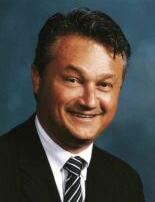
“On a weekend morning a few years ago as I sat in my office preparing for the day ahead, a young housekeeping employee stopped by to clean my office. I asked him about his plans for the future. He replied, “I want a job like yours!”
I asked him to elaborate. His response, “I want a job where I can wear nice suits, sit in a big chair and drink coffee all morning.”
Sometimes I wonder how many members have the same perspective.”
- Frank Cordeiro
“That’s a fun story but it might shed some light as to why some people within a club are less than knowledgeable about what a general manager/COO actually does on a daily basis,” expressed Frank Cordeiro, general manager of Diablo Country Club in Danville, CA.
unfortunately, many club members and even boards of directors are not clear about the GM/COO/CeO’s role, what they do every day or what they are responsible for, often because neither the board members nor the general manager have clearly articulated roles.
And it might explain why private club general managers feel they need to be seen and heard to be relevant. Why they need to be around the club for that late night dinner party…around the club for the holiday season celebrations…for the summer golf tournament.
So the question is: Why must the general manager be seen and heard at the club to be relevant? And do general managers get their
boards and members to realize and appreciate the work they do? And what works at one club might be different for another GM at another club.
“I believe that you need to be relevant in order to be seen and heard,” explained Mac Niven, general manager at La Rinconada Country Club in Los Gatos, California.
“We should be seen because we are seeing what the membership is up to. We should be hearing what the membership is saying in order to understand their perspectives, which then allows us to have relevant discussions. It’s very hard to tell what is and is not relevant to members.
“Just the other day a member sent me a series of three emails and responses, copied to our president, about the Hole-in-One (HIO) program that has been a staple for decades. The member’s concern was that it had lost its intent because it was too successful!
“Who’d a thunk that a CEO of a billion-dollar business would not only take the time to write and answer three emails, but set up a call with me to discuss the philosophy of the HIO program, which costs him $2 each time a member gets a HIO. Not only that, he scheduled the call for some time between 1 and 2 p.m., and I picked up the phone at 1:04 – seriously!
“Some things are relevant to members, and we, as managers, should not presuppose what those things might be. A joke to one may be a serious matter to another.
“Visibility is a function of relevance, as is seeing what the members are doing. You can’t really understand the culture of the membership unless you are among them, at least from time – to –time, looking and listening, so if you’re looking, then they are seeing – you,” Niven added.
To Brett Morris, CEO at the Polo Club of Boca Raton, Florida, “visibility is a crucial way of com-
See PuBliSHeR’S PeRSPeCTive |106

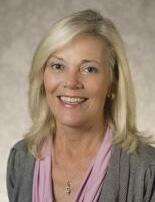
open admission is a term that’s often batted about in higher education, particularly community colleges and those institutions that only grant associate degrees.
It generally means that the admission process is unselective and non-competitive. The only criteria for admission are that the student has a high school diploma or GED certificate.
An open door policy, in contrast, is one that generally allows admission to anyone who can pay tuition, regardless of their educational background.
Open admission and open door policies were introduced decades ago to reduce barriers to higher education for some groups of students, notably those from lower income or underprivileged backgrounds. The goal was to increase access to education – to offer a college education to all who sought it, regardless of their background.
In recent years, many – if not most – private clubs have experienced a decline in their membership levels because of economic downturns, and a shrinking waiting list of people who want to join. In response, clubs have been offering significantly discounted memberships to attract new members and free services and additional amenities to members, such as fitness centers and classes, spa and massage services, and so on.
And, as clubs have reached out to the public to stay afloat, hosting weddings and receptions, bridal showers, bachelor parties, corporate events, golf outings, community meetings and conferences, and private family events, some private club members contend that the open admission/open door policy has now been extended to private clubs. Their formerly exclusive and upper-crust golf club has now become a “community club.”
As one long-time country club member snarked, “Open admission is great for all the people who aren’t members. If they can play golf at a private club for free – because they’re exempt from the special assessments – I’m the one who’s pay all the dues and operational costs! So, why would they want to join – or even play – anywhere else?”
BRAnD AnD loyAlTy
Past research studies have demonstrated a positive relationship between club members’ “prestigious image” of their club and their longterm loyalty. In short, brand prestige has a positive effect on brand loyalty, which holds true whether on the golf course, in the retail store, or aboard a luxury cruise-liner.
However, the reverse is also true. According to one 2015 study, when the private country club loses its prestigious image – a likely consequence of open admission / open door policies – its members’ loyalty level dissipates.
This is precisely what the private club does not want to have happen… because loyal customers tend to spend more (and are more willing to pay high prices) and cost less to serve.
Open admission/open door policies may succeed in recruiting new members who are attracted by discounts. But, will there be a cost in terms of erosion of loyal, full-price members?
“You just have to get used to the fact that the importance and value of your 26-year-long membership has greatly diminished. I just hope we won’t see Budweiser cans overflowing the trash bins on the course, or people getting dressed or putting on their golf shoes in the parking lot.”
Price discounting and an “open membership” policy will work well as a short-term strategy to bring in new members and revenue. But, seasoned marketers also know that loyalty levels are low for products and services acquired through price discounts over time.
Thus, price discounting cannot be a long-term strategy unless the club/organization is prepared to become the Wal-Mart of the private club industry. BR
Nancy Levenburg, Ph.D., is a professor in the Seidman College of Business at Grand Valley State University in Grand Rapids, Michigan. She is the president of Edgewater Consulting, and is a member of Spring Lake Country Club in Spring Lake, Michigan. For more information, contact her at: levenbun@gvsu.edu or (616) 331-7475.


in his seminal work, Governance as leadership (Reframing the Work of nonprofit Boards) author Richard Chait presents governance leadership as a triangle with one governing arm being fiduciary, another being strategic and the final generative.
It’s one of the very best books on nonprofit board governance (including private club boards) that my partner Kurt Kuebler and I have been recommending to those with whom we work.
It’s clear to all of us who work in the private club environment that the fiduciary arm of the triangle is a given and it is certainly the one area typically focused on by most boards. However, it is the other two I will address – the strategic arm here and the generative arm in the next article.
The strategic mode is where boards create a strategic partnership with management. It all begins with the commitment of the club board and most importantly the club president. The commitment is to engage strategic thinking at every board meeting and to embed that philosophy within all of the key governance discussions.
Most private club boards recognize that a strategic process will form the framework for how issues are addressed on the agenda and ultimately resolved. For many years we assisted clubs in developing five-year strategic plans only to find that the next year’s board ignored the recommendations.
Most plans collected dust on the shelf and were never implemented. We now encourage boards to engage in a “strategic process”, which is revised annually and provides a clear roadmap for tackling the key issues most relevant to the ongoing success of the club.
Once the board has experienced the satisfaction of creating a “strategic process” and the pride of ownership that accompanies the plan, it becomes far easier to adapt strategic thinking as a consistent operational philosophy that permeates every board discussion.
When conversations at the board meetings begin to drift into never, never land – which happens more often than it should – the club president can bring everyone back to the agenda with a simple question, “How is this discussion relevant to the strategic process we have all agreed to?”
As Richard Chait says, “Non-profit boards should have the desire to serve a socially valuable mission, have a positive impact and create communities of interest. For these reasons non-profits (clubs) need strategy.” He says that board members need a new “mental map” to enlighten and guide their thinking and discussion. I believe that emanates from a successful strategic process.
In our private club world a key factor in “strategic board thinking” is the leadership and participation of the club general manager/chief executive. By creating a strategic partnership with management the board is clearly communicating to the general manager/chief executive and the management team that they have high expectations of performance based on the expectations created in the strategic process. These expectations can be reviewed on an ongoing basis.
What also becomes clear in this exercise are the roles of board members and how they relate to the management team. If there is truly a strategic partnership in achieving common goals, the focus of both the board and the management team can be easily understood.
I will elaborate on this partnership next time and discuss how private club boards can effectively engage the third arm of the governance triangle, “generative thinking.” BR
Dick Kopplin is a partner in Kopplin & Kuebler, LLC an executive recruiting firm providing services to the private club industry. The company has offices in Scottsdale, Arizona and Jupiter, Florida. He can be contacted at (480) 443-9102 or at www.kopplinandkuebler.com


“The single biggest problem in communication is the illusion that it has taken place,” George Bernard Shaw once said. And, of course, communication is fundamental to success in a private club.
As a leader of your club, you will be most effective when all the vested parties (employees, members, and the board of directors) understand where the club is today and where it is going in the future.
Having a common language for the club’s finances/member satisfaction (and how it compares to the club’s strategy and goals) benefits everyone. Using key performance indicators – a business metric used to evaluate factors crucial to the success of the club –is one strong tool to accomplish this.
It is recommended that each club have not more than two true overall key performance indicators (KPIs) that are monitored monthly by the board of directors and chief operating officer, based on each of the following:
1. Financial performance, and
2. Membership satisfaction/quality of service.
Driving these KPIs are general performance indicators, GPIs, (sometimes called performance drivers), which are broken down by department in the same two categories, and monitored by volunteer committees and department heads.
Simplicity will position these parties to make quality daily decisions to improve what is being measured.
These GPIs also function as:
1. A leading indicator…an early warning system indicating that a situation exists that if not addressed will lead to poor results. For example, membership satisfaction is a GPI for the KPI called membership retention.
2. A metric that contributes directly to a KPI and may be a component of the way the KPI is calculated. For example, the KPI is a percentage overall financial performance, then a GPI may show overall revenue per member, without dues.
3. A preceding step in a value stream, for example might be a KPI based on financial performance. Thus the time it takes for a member to receive their food in the dining room would affect the number of times a member dines at
the club, which also affects the overall revenue, and whether or not the member feel comfortable bringing guests to dine at the club.
Imagine the conversation at the club’s social hubs turning from a detailed analysis of a minor one line negative variance of the financial statement (such as food cost) to a centralized and common conversation about the excellent job the club is doing.
It might focus on the fact revenue per full member equivalent is up 10 percent or that the monthly membership satisfaction ratings are trending positively, and that there is a wait to join the club. Once again, it is vital that both the financial performance and the membership satisfaction are taken into account together.
I’m reminded about one club past president where I had worked. He was convinced the club was wasting money on hiring too many employees, and requested a meeting to discuss his concerns. We met, I listened and after preparing some reports for him outlining the facts about the club’s revenue compared to the number of full time equivalent employees (revenue without dues/FTE). It showed a very positive trend.
He wasn’t impressed. Fact is, he really didn’t understand the concept. So, we scheduled another meeting, and I prepared even more information with the hope that he would understand more clearly.
He showed up for the meeting with a copy of the membership directory from the year he was president 13 years earlier. He asked me to open up my current year staff directory while he did the same with his 13 year-old directory. He pointed out that his year as president only one page of employee names, and the current year had two pages of employee names listed.
His perception was based on his reality, not the facts and financial reality of the club as might be shown by using key performance indicators. So the question to be answered by you is this:
“What is the perception you are creating with your membership?” BR
Ronald Banaszak is a consultant with Club Advisors. He can be reached via email: rbanaszak@clubadvisors.com www.clubadvisors.com
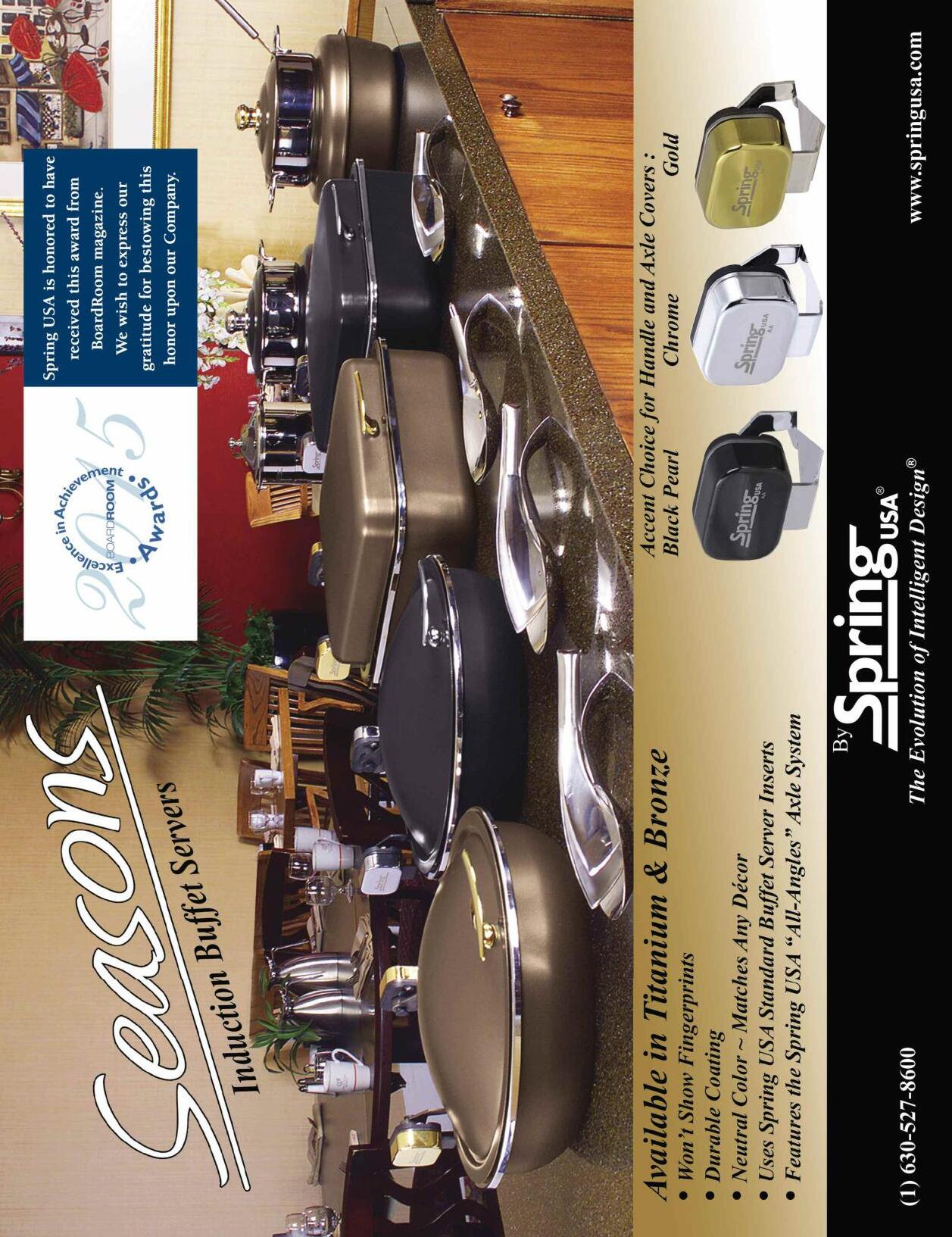

Conservation easements came under fire in a verdict issued recently by the united States Tax Court.
Two sections of St. James Plantation, The Members Club and The Reserve Club were denied the ability to claim charitable contribution deductions for their conservation easements, by the IRS.
St. James Plantation is a gated community with a staffed guardhouse on each of the three roads into and out of the development. Located within the community are two 18-hole golf courses, The Members Club and The Reserve Club, along with a nine-hole course called the Cate 9.
In 2003, a conservation easement was created around the community’s Cate 9 course in cooperation with the North American Land Trust (NALT). At the time the easement was created, the deed identified two conservation purposes covered under section 170 of the Internal Revenue Codethat the easements had a relatively natural habitat for endangered or protected species, and that they contributed to nearby conservation areas.
In the easement deeds, the golf course was given permission to use easement land to maintain the course in specific ways. These included:
• Using insecticides and fertilizer to maintain the greens
• Cutting down trees 30-feet into the easement to build shelters and restrooms, and
• Creating a paved road for golf carts to traverse the easement.
By providing for a 30-foot perimeter wherein the club could remove the trees, a significant number of the trees in the easement fall into this area. If alterations on the property were completed within the terms of the deed, there would be no habitat left to conserve. Even if the property was not altered, the pine tree the easement is designed to protect is not being cared for in a way that maintains a natural habitat. In this case, the pine tree must have controlled burns of the undergrowth in order to have the nutrients it needs to thrive. The golf course does not have plans for maintaining the undergrowth this way.
While laws allow for the creation of man-made ponds and streams to simulate a natural habitat for wildlife, St. James Plantation failed to create a pond bank wide enough for wildlife to access the water.
To compound problems, the use of insecticides, herbicides, and fertilizers has compromised the ponds’ abilities to maintain fish and amphibian life in them. The lack of food, shelter and access to water for wildlife eliminated the ability of the courses to designate the easements as “natural habitats.” This, in turn, meant that they could not contribute to nearby conservation areas.
The last area the easements could have qualified for section 170 pertained to the courses preserved open space for the “scenic enjoyment of the general public.” In order to access any of the golf courses, a visitor must be a member of St. James Plantation or an invited guest of a member.
The general public can drive onto St. James Plantation, but have to pass through one of three guarded gatehouses to do so. Since the guards had no criteria for allowing the general public into the area, there was no reason to believe that the general public could access the easements let alone enjoy them.
The judgment stopped short of saying that golf courses are inherently against conservation purposes as described in section 170. In this case, the easements did not have a relatively natural habitat, nor did they contribute to a conservation area nearby, making it unnecessary to make such a broad ruling. However, as more charitable contribution and expense deductions come under scrutiny, it is reasonable to believe that a judge will eventually determine whether golf courses are naturally incongruent with conservation easements.
Ultimately, if a course is to use section 170, it needs to ensure that all of the qualifications for conservation are met. This may mean courses have to alter their future plans for development, or the treatment of their greens in certain areas to preserve natural water habitats. BR
Kevin F Reilly, an attorney and CPA, has been involved in the hospitality area and clubs in particular, for more than 30 years. He is a partner in the firm of PBMares, LLP and currently serves as treasurer of the National Club Association. Kevin is located in the Fairfax, VA office. He may be reached at (703) 385-8809 or by email at kreilly@pbmares.com.
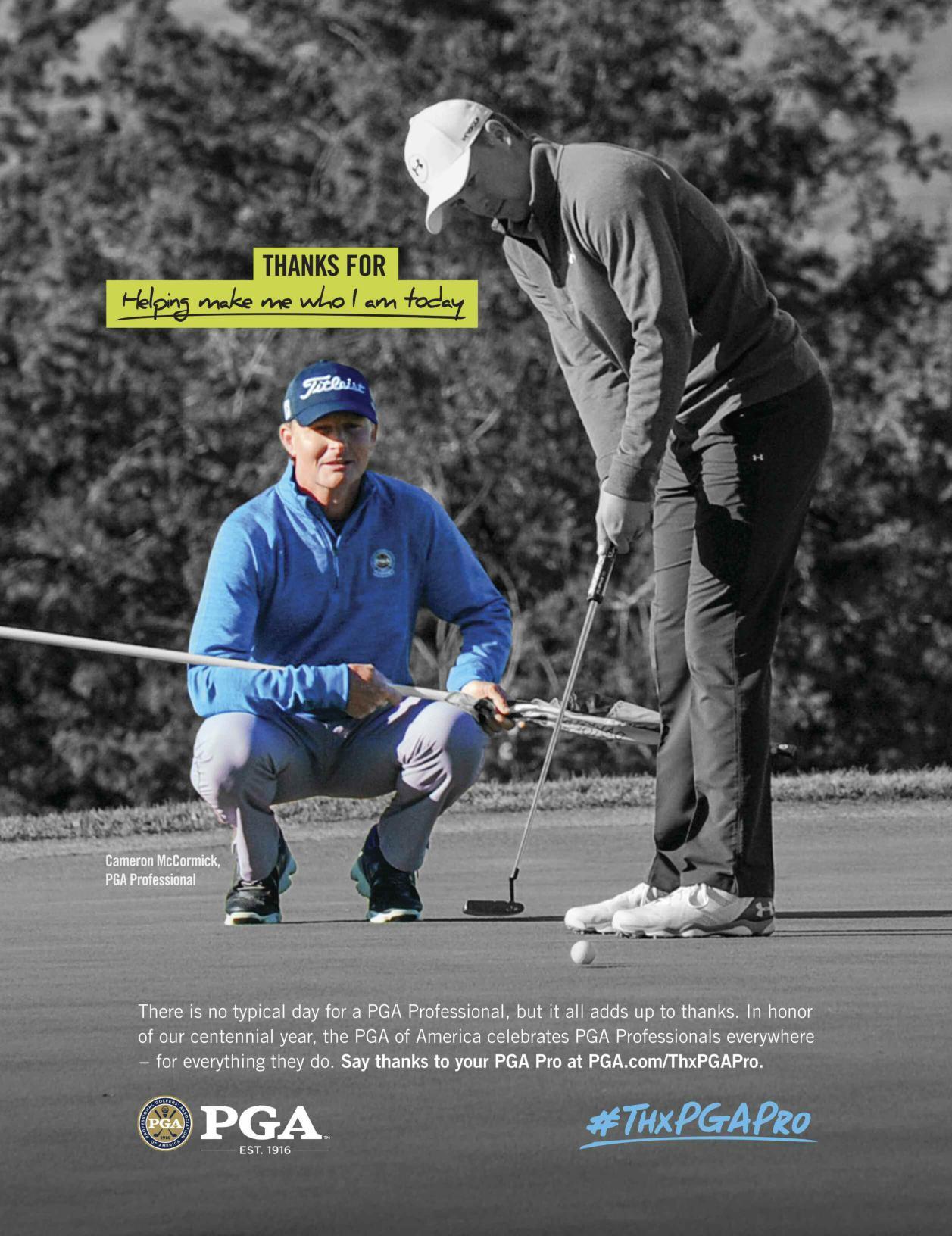
by Dave White

“sometimes,” the old adage goes, “necessity is the mother of invention.”
that’s been the story for Diablo Country Club, a unique private club nestled at the foot of Mt. Diablo, just outside Danville in the east bay region of san Francisco, Ca.
and the achievements of the Diablo Country Club in the past couple of years have culminated in the recognition of the club’s two most recent presidents – David Mackesey and hank salvo, as BoardRoom magazine’s Distinguished Club Presidents for 2015
Their achievements revolving around a scarce water resource – not unexpected for California country clubs – governance, a fascinating history, and updated board technology emphasize just how visionary presidents can work for the benefit of a club and its members.
“Through the efforts and leadership of Hank Salvo and David Mackesey, the colorful and rich history of Diablo Country Club has been brought to life. The results have instilled a new sense of pride amongst its members and achieved an elevated status as a club of distinction in the state of California,” exclaimed Rick Steffens, long time Diablo member and a past president.
BoardRoom magazine this year is recognizing 22 Private Club Presidents of the Year –2015, for practicing what they preach – leadership for the betterment of their clubs –board presidents or chairs who serve as the volunteer leaders of their club.

It’s the eighth year the industry’s top private club presidents have been honored by BoardRoom magazine for their outstanding work. Including the Distinguished Presidents, there are three double entry recipients being honored this year.
“More than 400 applications from clubs in several countries flooded in this year. Including our distinguished presidents, there are 22 board presidents representing 18 clubs from around the world that we’re honoring for 2015,” explained BoardRoom magazine’s publisher and CEO John Fornaro. “Our selection of the top 22, including David Mackesey and Hank Salvo as our Distinguished Club Presidents, signifies another successful search for leaders who have contributed so much to their private clubs and their member experience.”
“Our firm continues to assist BoardRoom magazine in the quest to identify some of the top club presidents,” expressed Dick Kopplin, partner in Kopplin and Kuebler, LLC with Kurt Kuebler. The firm continues as one of the major supporters of this BoardRoom magazine recognition program.
“It is encouraging to see how many of these club presidents recognize the need, today more than ever, for engaging qualified general managers/chief executives to lead their private club management teams.
“As one club president explained to me, ‘We didn’t see the last downturn in the economy as a reason to scale back our services at the club, but rather an opportunity to encourage our talented general manager to engage his creativity and leadership. The results have been more than we could have hoped for. Our participation at the club actually went up and memberships increased in all categories as members understood the value of private club membership. That’s the benefit of having a strong executive in the GM/CE role,’” Kopplin related.
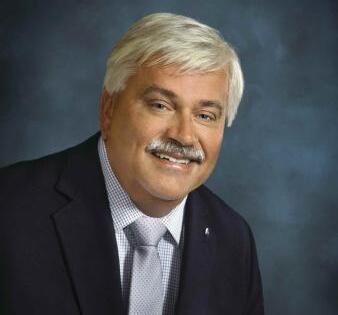
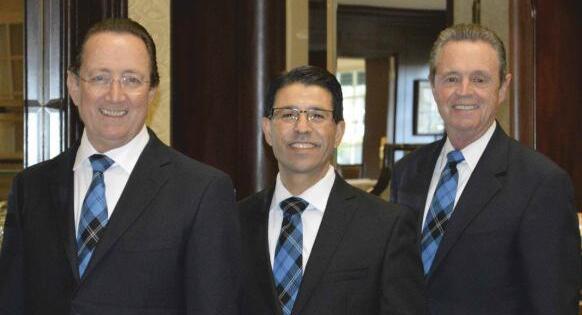
“Club presidents are also embracing the concept of strategic planning, not just for capital asset purposes, but as a way of thinking about governance and operational issues at the club,” injected Kuebler.
“Many club presidents realize that the purpose of a strategic process is not to produce a plan but to produce results, and they are engaging an annual process to keep the board focused on the most important priorities.
“Additionally, club presidents, leading progressive clubs, understand the value of the ongoing education and development of their GM/CE and other key department managers. They support the work of CMAA and take an active interest in the programs, data, trends and publications relevant to the private club industry,” commented Kuebler.
“BoardRoom magazine continues to provide a valuable service in recognizing these unpaid volunteers who serve as club presidents and who continue to better their clubs for the entire membership,” added Kopplin.
viSionARy leADeRSHiP
“This has been an intense and very successful time for Diablo Country Club,” exclaimed Fornaro, “and much credit goes to these two presidents, working in tandem over a period of years, for their vision, insight and leadership in tackling specific issues that undoubtedly will impact the club’s future, engage its board of directors, and foster a spirit of cooperation among members. It certainly enhances the club’s member experience.”
Club governance can be either an impediment or the road to excellence, and that’s where it started for Larry Marx, previously Diablo’s general manager, now general manager at Bellerive Country Club, outside St. Louis, Missouri. Frank Cordeiro has succeeded Marx as Diablo’s general manager.
See CoveR SToRy |22

from Cover Story |21
During Marx’s tenure, the club successfully changed the governance model, now focusing on two-year terms for president.
David Mackesey served as club’s president 2013-14 with Hank Salvo taking over in 2015. He’s finishing the second year of his term this year, as well as chairing the club’s water committee, with its daunting task of finding water resources for the club.
“Shortly after my arrival in 2008, the board of directors made it a ‘best practice’ instituting two-year terms for presidents and followed that throughout my tenure,” Marx related. “Before that the club did not have two-year consecutive presidents terms. As a result each president took on a strategic project.” In other words, the continuity of governance was missing, something that’s changed with two-year terms.
“We also instituted an all-day eight-hour orientation and tour for incoming board members, and the nominating committee follows the best practice of nominating only the number of directors for the number of available seats on the board.”
The club also started committee orientations and best practices for committee replacement. The club’s committees have a clearly defined role in that they are advisory to the board and make recommendations only. A chair and co-chair from the board heads each committee, ensuring good succession plan for committee chairs whereby the co-chair becomes chair the following year.
The board holds a two-day strategic long range planning retreat each year. The strategic plan is reviewed, strategic goals are established and the GM/COO’s role is reviewed with emphasis on the fact the GM runs the club’s daily operations with the board of directors in charge of policy and long-range issues.
GoinG DiGiTAl
There’s another aspect of the board’s operation that GM Marx helped streamline.
In preparation for monthly board meetings, an agenda is developed. In the past, board binders were collated…with documents, letters, contacts, committee reports etc., equating to a couple of hundred pages per binder each month. As the year progressed, binders grew, massively and becoming hard to manage.
Management decided to go digital.
“We purchased iPads for each board member to be used for the board binder. All documents are now loaded to a remote server, and each board member using an ereader service can download and view the binder with ease. It took a little getting used to on both sides, but it was definitely the way to go,” former GM Marx related.
Board members on their iPads now have easy access to the current board binder and any past/supporting items whenever they like. The information is held on secure servers and password protected so information is even more secure than the physical binders, and it’s more efficient and economical for Diablo Country Club.
As David Mackesey says, “Our job is to hire a great GM and get the hell out of the way.” In other words, micromanagement be gone.
The club’s history has also been an impetus for change, spearheaded by Mackesey, to the benefit of the club’s members.
Opened 100 years ago as California’s original family oriented golf club, Diablo’s traditions of excellence and sportsmanship for generations of members have stood the test of time. The club’s founder Robert Noble Burgess converted the grounds, originally an 1874 country estate for the families of railroad barons and gold mining icons, to a world-class golf and country club in 1914.
For decades there had been a debate over who designed the club’s original course – Willie Watson or Jack Neville. Information has been more easily found about Watson, but there’s still been evidence suggesting Neville as the original designer.
With the club’s 100th anniversary approaching in 2014, the club’s board, in 2010, decided to publish a history book. While searching about information about the course designer, president Mackesey “uncovered a much larger story than ever imagined.”
The real journey was about to begin as Mackesey volunteered for the task of producing the club’s history book…a project that would take three years, lead him down many paths he had never walked before, and resolved the designer question.
It seems Diablo is the only course in the world designed by both Neville and Watson. They each designed nine holes at different times, just before designing the iconic works at Pebble Beach and Olympic Club.
The club began collecting photos, stories, and information related to Diablo’s history from everywhere including the founding families. “Members were asked to share their stories, documents and photos with us, and we quickly acquired an archive of over 1,000 items,” explained Marx.
“David Mackesey poured his heart and soul into finding out everything he possibly could about Diablo Country Club, and all the families

that had passed through over the years. Needless to say, Diablo is in a much better position today then it was before all this started.
“Now Diablo is no longer a club that is over 100 years old, it is a club with over 100 years of history,” Marx added.
“The farther back you can look, the farther forward you are likely to see,” Mackesey expressed. “It sets a tone for decision-making, and brings greater meaning to our traditions. It sets us apart from other historic clubs and from newer ones. It clarifies the brand and clarifies our guiding principles.”
After an exhaustive research effort, tacking stories on the clubhouse walls for members to read, and partnering with member families as financial sponsors, it all culminated with the club’s Centennial celebration in 2014 and delivery of the club’s history book to all members in December 2014.
“Everything seems to mean much more when members pour their hearts into their club,” remarked Mackesey. So with an accurate, important and relevant history program, member families and their guests enjoy a quality experience that is uniquely Diablo, all because of questions raised about who designed the club’s original course.
SCARCe WATeR
Water, as with many clubs around the country, is an issue for Diablo Country Club. Recent increasing water use restrictions have been the impetus for Diablo Country Club, and the water committee headed by President Salvo, to initiate a project that is not only beneficial to Diablo, but emphasizes the club’s social responsibility and position as an outstanding community citizen.
As far back as anyone can remember water has been a scarce resource for Diablo. There are stories about pipelines being built to carry water in, and drilling of wells for water… all of which have been short-lived or unsuccessful projects.
As a result of Northern California’s drought in 2007-2009 (without consideration for the drought conditions in California today) Diablo experienced a 30 percent mandatory restriction in water use. So the club began to look at the possibility of recycled water for irrigation, meeting with local government agencies etc. to search for long term answers.
The club discovered that because of its location, the unincorporated community of Diablo was not included in the East Bay Municipal Utility District’s 40-year long-range plan for recycled water. What to do?
Diablo enlisted the help of knowledgeable members. As research was gathered, and California’s drought persisted, support for a Diablo water recycling project under President Hank Salvo grew.
“Hank is a superb example of the dedication of Diablo’s members, working within an effective governance system. This has allowed Hank the perspective and experience to effectively drive one of our biggest and most strategic programs ever, implementing an onsite recycled water project,” explained Jeffrey Miller, chair of the club’s nominating committee.
The club is now in the planning and design phases for the satellite water treatment facility on the club’s property. Diablo Country Club will receive effluent sources from the Central Contra Costa County Sewer District to be treated on club property.
“It is the first of its kind for private clubs – a privately funded, onsite water recycling facility project that secures a reliable and sustainable
now Diablo is no longer a club that is over 100 years old, it is a club with over 100 years of history.
water source for future generations and conserves valuable potable water for our community. Other projects that we’re aware of serve a different purpose and exist in a multitude of other industries. Our project is unique both in its ownership structure as well as it purpose,” added Diablo’s GM Cordeiro.
“We are working with local and state agencies on a partnership that will result in a benefit for the club and community. Completion target date is 2017, but that’s subject to change.”
The plan is in the final stages of due diligence before a member vote. If approved by Diablo’s membership, the satellite recycling water facility becomes a multi-million dollar investment, likely paid for by generations of members over the useful life of the project…about 40 years.
But as it is with water resources today, this is not necessarily about cost savings, but a longterm sustainable source of water the club owns 100 percent. Over time, cost savings will kick in.
“The club’s commitment to this project is driven entirely on the basis of sustainability and water conservation,” Cordeiro explained.
Yes, sometimes necessity is the mother of invention, and that’s certainly an old adage proven true, under Diablo’s presidents Mackesey and Salvo. BR
BoARDRooM MAGAzine’S DiSTinGuiSHeD CluB PReSiDenTS BioS AnD CoMPleTe liST oF All 2015 ToP PRivATe CluB PReSiDenTS - 26 & 27

Many club members just want to be members. They aren’t all that interested in directing the club or being part of the governance structure.
The club is the place they come to relax and have fun, not take on a part-time job or get mixed up in the politics of it all.
As long as the golf course is in good shape, the drinks are country club strength, and the food is tasty, they’re happy campers.
It’s great to have loyal members who just want to have fun, of course, but without the group who is willing to step up and help lead the club, we would be missing out on what makes a private club a special place.
These are the people who keep the culture alive and spur the club to adapt and change when necessary. By contributing their time and energy, they make the club a special place, separate and distinct from so many commercial endeavors.
The club leaders who are featured in this issue of BoardRoom are part of a special group that not only stepped up, but who overcame major challenges and led their club to new heights. They are the best of the best.
As we move into 2016, it is a good time to think about ways to make even better use of the volunteers that you have at your club, and how to grow the next generation of directors.
These people have put up their hand and indicated they are willing to help find new members, create new programs, set the standard in their department and guide the club. They are willing to help, and it is the duty of the board to support them and make them successful.
uPGRADe CoMMiTTeeS
Developing a strong board starts by upgrading your committee process. This includes the steps you take to form the groups in the first place and then the effort you put into nurturing them.
Resolve to make committee selection a robust process. Set standards for maintaining some
degree of continuity, but push committee chairs to reach out and include new people in the process, especially younger ones and recent joiners.
These folks are your window to the world of prospective members as they are closest to it in age and inclination. Rely on veteran leaders, but don’t let old guard cliques build up and impede progress.
Club boards could go a long way to improving the effectiveness and performance of their committees by taking the time to educate them about the club’s overall strategy and direction. All too often, committees function in silos without insight into where the club is going and what the board and management is working toward.
A good start in this direction is to have a Committee Day. This is an event where members of all the standing committees are invited to a meeting to be thanked for their service, but also to learn about the board’s vision and goals and gain an understanding of how they can help.
Another benefit of mingling with all committee members is that it helps the current board identify the up and coming leaders of the organization. The people who really do care about the club and are willing to put in the time to make it a better place.
Specifically tasking a leadership development group to oversee this process can pay big dividends. It is important and beneficial for this team to get to know the next generation, maybe even mentor them as they continue on the pathway to increased responsibilities. Who knows, but with a little care and nurturing, one of these folks might someday end up on the cover of BoardRoom magazine. BR
Frank Vain is president of McMahon Group, a consulting and planning firm service to private clubs. He can be reached at fvain@mcmahongroup.com

Boardroom magazine’s Distinguished Club Presidents for 2016 – David Mackesey and Hank Salvo – can be recognized for their own distinguished careers, both with connections to California’s wine industry.
Henry Salvo (pictured left) and his wife Nancy joined Diablo Country Club in 1990 and have lived in Diablo since 1998. They have two sons, Andy and John.
Now in the second year of his presidency, Salvo in past has served on the club’s finance, long range planning committees and is spearheading the club’s water recycling facility as head of the water and energy conservation committee.
Professionally, Hank is currently a partner with Scion Advisors specializing in helping family businesses through transition, primarily in the wine sector. He has also been chairman for the Patz & Hall Wine Company since 2005. From 2000 to 2005, Hank was Executive VP and CFO for the Robert Mondavi Corporation. Before Mondavi, Hank spent over 27 years with The Clorox Company in various financial and accounting roles including VP Controller and VP Treasurer.
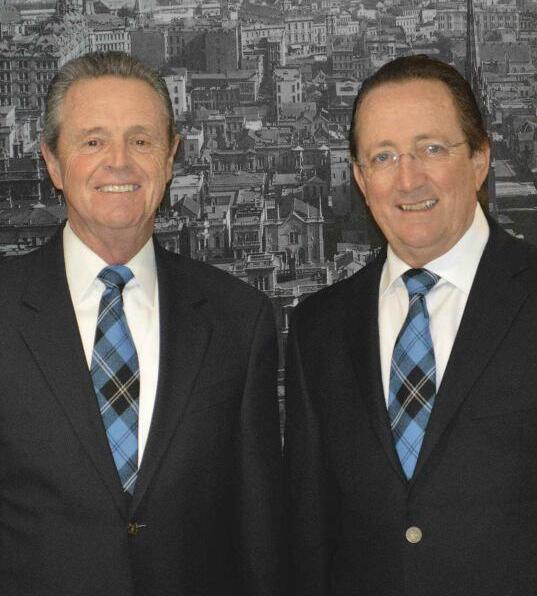

Salvo graduated from UC Berkeley with a BS in finance and an MBA in finance from California State University, East Bay and has also served with a number of arts, education and economic advisory boards and foundations over the years.
David Mackesey has served on Diablo’s finance, house, marketing and history committees, as well as his two-year term as president. David has been instrumental in uncovering Diablo Country Club’s rich golf history, and oversees all aspects of its introduction to the membership, including the history articles for the Inferno, which he authors.
David is a partner and retired president of The Wine Group, Inc., the third largest wine company globally, measured by volume. The Wine Group owns and produces brands such as Franzia, Glen Ellen, Concannon, Almaden, Inglenook, and Corbett Canyon.
David Mackesey and his wide Lynda reside in Diablo. Members of DCC since 2007, both are avid golfers. He graduated from the University of Wisconsin, Madison, earning his BA in Business with a double major in marketing and management. BR
Private club board presidents play a huge role in the professional operations of their club as volunteers working diligently with their board of directors and general managers, striving for well informed, but not emotional decisions.
boardroom magazine’s outstanding private club presidents for 2015 exemplify the focus on the leadership responsibilities, the accountability and the management of the board, while providing a healthy respect for the club’s macromanagement.
they understand the importance of working, effectively and efficiently, with their volunteer boards and the dedication that’s required from everyone with whom they work. they practice what they preach – outstanding leadership to maintain best practices and an extraordinary member experience for their members clubs.
David Mackesey
Hank Salvo
Paul Basquin
Gail i. Bernstein
laura Biagiotti
Rusty Cagle
Paul Douglas
Dr. Bruce Haber
Steven e. Heydt
Robert Kelleher
John MacDonald
Anthony J. Magdowski
Peter Miller
Greg Miarecki
Gregory P. Montanaro
Heather nagle
Frances Peck
Thomas Quirk Jr
Randy Sinnott
irwin Tepper
Fabio virgilli
zhang Wei
Diablo Country Club.
Diablo Country Club.
these points are exemplified by the selection of 2015’s Distinguished Club Presidents, David Mackesey and Hank Salvo of Diablo Country Club in Danville, CA.
systems along do not insure a good board. Key elements include commitment, competence, diversity, collective decision making, openness, transparency, effective communication with management and the membership, fiscal responsibility, development and establishment of the club’s mission, vision and policy direction, especially through establishment of a strategic plan. successful board presidents draw upon the expertise of other board members, the club’s institutional memory and stewardship of the club’s resources. as well, board presidents provide new board members and future presidents with information they need to perform effectively as board members. Congratulations to BoardRoom’s outstanding private club board presidents for 2015.
ballantyne Country Club.
Greensboro Country Club.
Marco simone Golf & Country Club.
the thornblade Club.
Corning Country Club.
Fenway Golf Club.
Mizner Country Club.
yucatan Country Club.
Kansas City Country Club.
Detroit athletic Club.
ibis Golf & Country Club.
Chicago yacht Club.
the union League of Philadelphia.
ballantyne Country Club.
aberdeen Golf and Country Club.
huntingdon valley Country Club.
Jonathan Club.
Wycliffe Golf & Country Club.
Marco simone Golf & Country Club.
yalong bay Golf Club.
ToP PRivATe CluB PReSiDenTS MAJoR SPonSoR

Mexico
usa























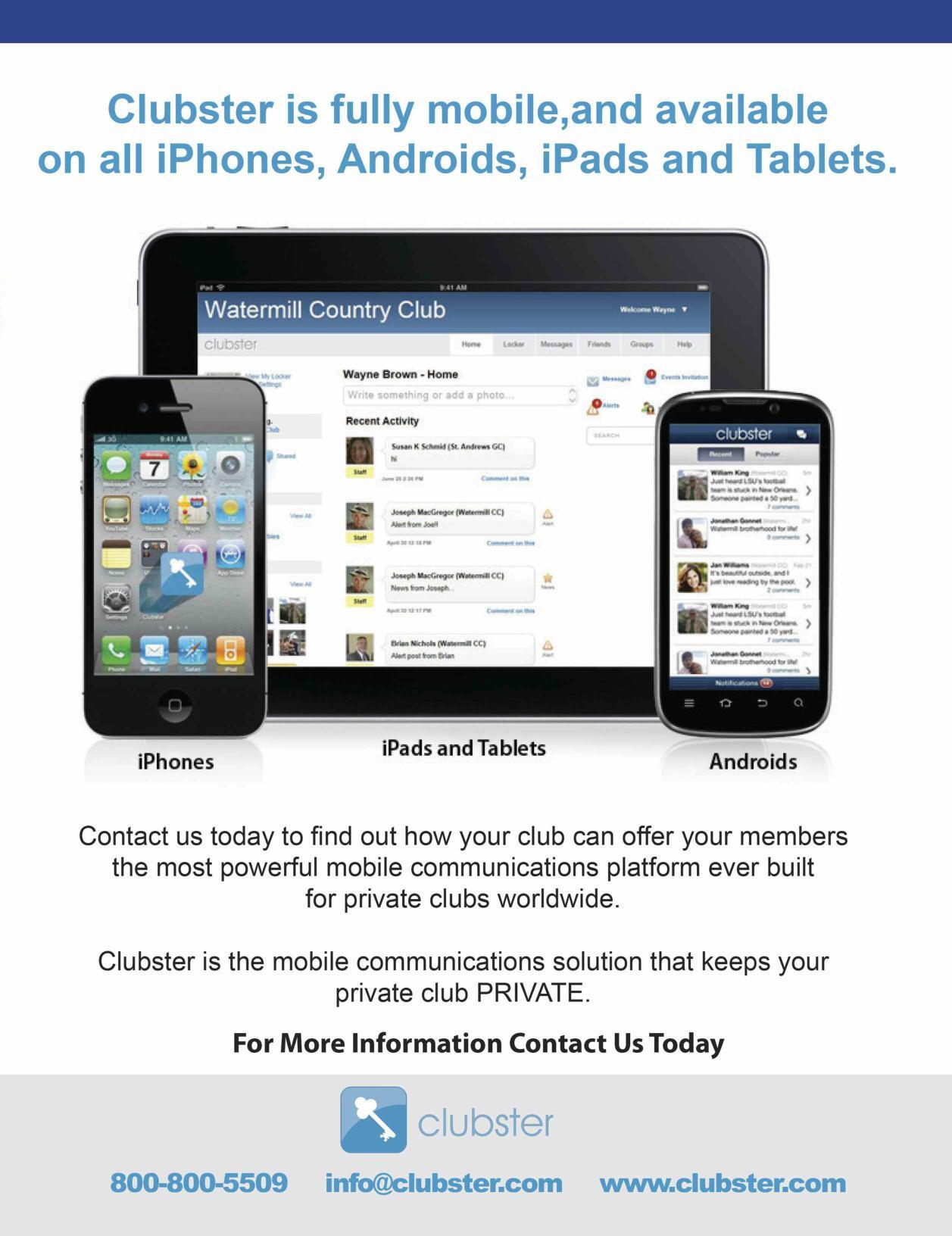
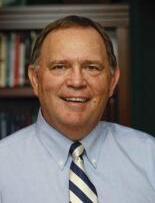
over the past 30 to 40 years, many private clubs have transformed themselves from not-for-profit entities dedicated to “exclusively” serving the needs of club members, to entities much more interested in serving the needs of both members and non-members.
Is your club addicted to non-member revenue?
Facts: Up to the year 1976, 501(c)(7) taxexempt clubs were required to be organized and operated exclusively for pleasure, recreation, and other nonprofitable purposes. The IRS tested this “exclusive” requirement by using a five percent non-member gross receipts test.
In 1976, Congress changed the rules for 501(c)(7) tax-exempt clubs, replacing the “exclusive” wording to “substantially all.” The IRS interpreted this “substantially all” requirement to allow these clubs to have up to 15 percent of its gross receipts from nonmembers.
Today, many 501(c)(7) tax-exempt clubs are approaching and exceeding the 15 percent nonmember related limitations, pursuing non-member revenue with a vengeance.
Question: Has the 1976 change in tax law caused clubs to now become addicted to nonmember revenue causing significant problems?
Observations: I believe it is possible this liberalization of the tax law has forever changed the landscape for what use to be private clubs. It may not have happened overnight, but it has, nonetheless, happened. Like any addictive drug, when it is legalized, can more usage almost be guaranteed? If so, are there hidden consequences? Consider my observations:
• The business of clubs - Clubs are in the member dues collecting business. If a club does not fully understand this theory, may I suggest viewing an online video presented by Club Benchmarking where, in their discussion of “The Available Cash Model”, their statistics conclude that 78 percent of an average club’ available cash sources comes from member dues. Pursuing non-member revenue may not be adding significantly to the available cash to operate a club. Is
the pursuit of non-member revenue keeping in line with its obvious business purpose?
• Serving non-members versus members - If any club is busy tending to the needs of the nonmembers, utilizing your member-paid-for-amenities and staff, who do you think is being ignored during the process? Thus, it is inevitable that direct member services must decline while nonmember services increase.
• Why join - If I, as a non-member of a club, can use club amenities the two or three times a year that I need a nice location for an event, why should I pay a joining fee, annual dues and an occasional capital assessment? If I need a place for a daughter’s wedding, a place to host a business conference, or a place to have a Monday golf outing for my trade association or charity, what better place to have it than at a member owned club while remaining a non-member?
• Public accommodation/ADA? Private clubs were historically not subject to being classified as “public accommodations” as they were truly private. With the level of non-member activity seen at most clubs today, is it possible to make an argument that they are not subject to the public accommodation/ADA rules?
The cattle may already be out of the barn. The patient may already have the addiction for which there is very little opportunity to recover. If recovery is possible, the treatment may be painful.
I believe it is incumbent of club boards to address any addiction a club has to pursuing non-member revenue with a vengeance. Clubs would be better served to look to providing additional services and programs to retain and attract dues paying members. If you are going to have an addiction, make it an addition to dues paying members. BR
Mitchell L. Stump, CPA and author of Club Tax Book, is the founder of Club Tax Network, an association of CPA’s, Attorneys, and Other Club Consultants serving the Private Club Industry. Mitch can be reached at (561) 776-0452 or via e-mail: mitch@clubtax.com
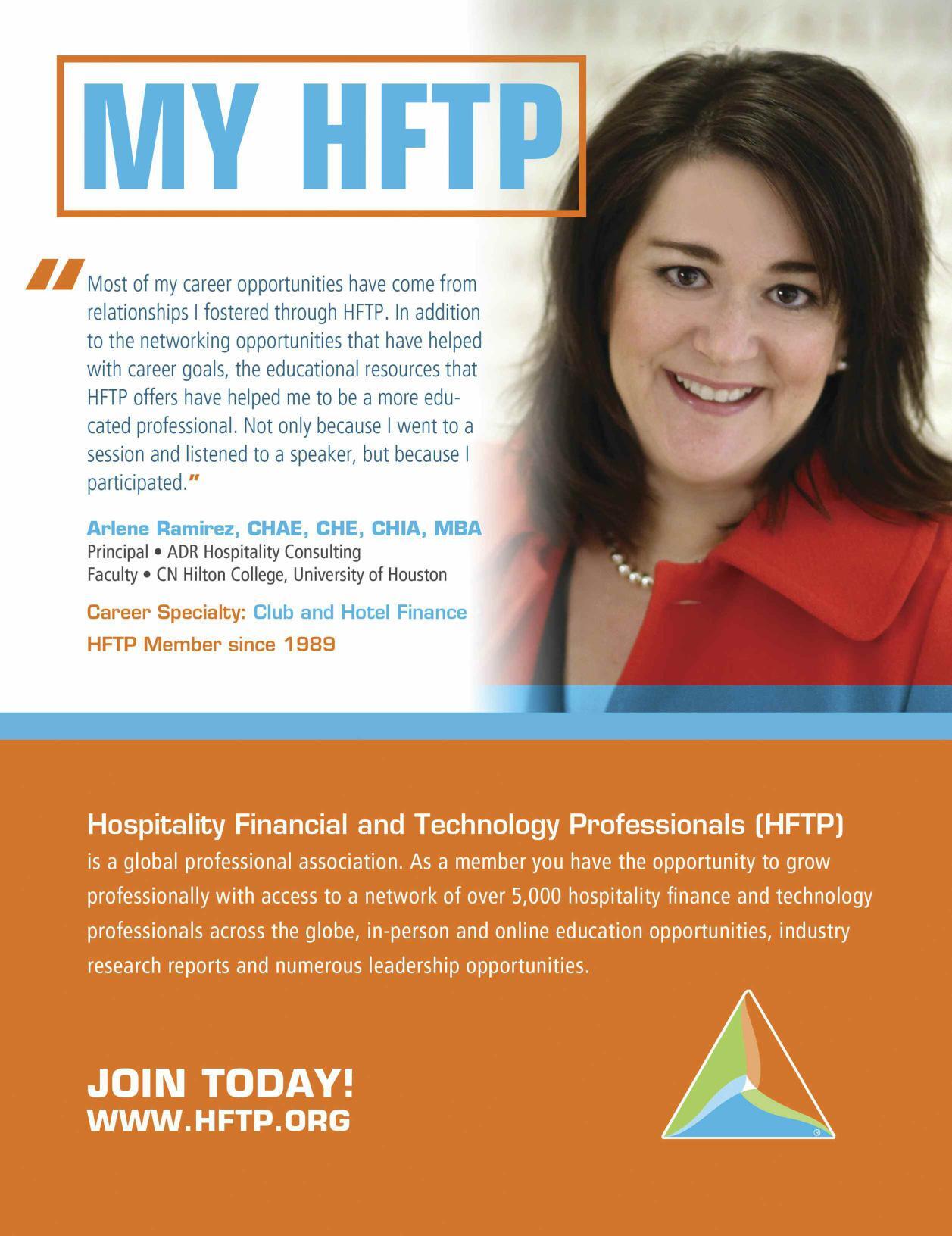

by biLL aMiCK
A number of noted golf courses and clubs have a par 3 course along with their famous golf course including Augusta national Golf Club, Pine valley Golf Club and Pebble Beach Golf links.
Each has shown that a smaller course can be beneficial to a variety of people, including its owners. Not all conventional-sized courses can nor want to have a smaller course, but some might, so perhaps it’s wise for those to consider this because of the resulting value. Special benefits accrue because of an along-side par 3 course.
It’s a wonderful facility for new players to begin under somewhat similar conditions without interfering with the established play on a main course. We all know that beginners holding up regular players can quickly lead to a major crisis.
Those shorter and easier holes are not so intimidating, a real feature for anyone who initially is mainly trying to get their golf ball headed in the desired direction.
Such a course can certainly be played in much less time than 18 or even nine standard holes. Both of those type rounds can be too much for many early golfers to handle. Yet these courses are also played by the Rules of Golf for a score while golf etiquette can also be encouraged and learned.
It’s a convenient place for lessons for both instructors and their students. And if a new player accidentally damages the surface of a green, it is much less of a crisis than it would be on a regular course.
There are additional advantages for an experienced player. It’s a convenient way to warm up for a round under nearly similar conditions. When there is a wait to get off the regular first tee, then this course could offer a fast round as an interesting time-occupier during that wait.
When available time is short, it is a way to play golf quicker than the two-to-two-and-a-half hours even a nine

regular holes would require, and it’s an excellent place to practice or sharpen anyone’s short game.
These courses can serve for playoff after a regular round or just a “mini-round.”
It is also great for some senior golfers who still want to walk yet find longer holes are too tiresome a journey and/or just too difficult.
Along with the additional revenue the course may provide, it can utilize a lot of the current maintenance equipment, the same maintenance center and some of the maintenance crew already staffed for an existing bigger course.
Mangrove Bay Golf Course is an 18-hole public course owned and operated by the City of St. Petersburg, Florida. Alongside its heavily played fairways, which I designed, is their nine-hole Cypress Links.
This par 3 course is ideally suited for beginners, used regularly for the local First Tee program for youngsters, an opportunity for a quick round by golfers of any skill level, played by a lot of women, and a walkable course for some people advanced in the years of their golfing career.
On the other side of the sea is the Children’s Course, a 9-hole par 3 along side the 18-hole West Links in North Berwick, Scotland, and managed by The North Berwick Golf Club. This smaller course opened in 1888.
An ideal situation can be a conventional golf course and a par 3 layout providing golfers with joys and enjoyment on either course. These easier and faster-to-play courses provide huge advantages for beginning, learners and experienced – yet not highly skilled – golfers. It’s a great way of adding more fun for almost everyone! BR
For further information contact ASGCA Golf Course Architect Bill Amick at amick@iag.net or call him at (386) 767-1449.

Here is what our clients are saying about our Strategic Planning process.
“We would like to thank Jack Sullivan from Kopplin & Kuebler for the outstanding job he did for our strategic planning process. When we decided to develop an extensive strategic plan it was easy for us to decide whom to use and looking back we certainly picked the right individual! His expertise made this process of developing such an extensive document seem much more manageable.
We now have a clearly defined direction for the bright future here at Shoal Creek. What was extremely valuable was his ability to provide us with the road map, but also ways to keep us on target and hold the board, along with managers, accountable for our future. This isn’t just a document that was developed, it is our future! We are greatly looking forward to our follow-up sessions in the coming years.”
Michael D. Thompson, Club President Chris Graham, CCM, General Manager Shoal Creek, Shoal Creek, AL


“We specialize in strategic planning and consulting services as well as GM/COO, Golf Course Superintendent, Executive Chef, Director of Golf, Assistant General Manager, and Clubhouse Manager searches.”
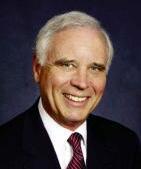



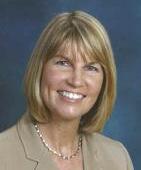



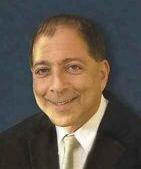




Recently, many general managers have asked about using a consent agenda for their club’s board of directors’ meetings.
Specifically, they ask what items are appropriately included within the consent agenda.
General managers who use a consent agenda effectively can reduce the board meeting’s length significantly. If you couple that with effectively managing the committee’s monthly schedule, the general manager can be a hero for the club’s board.
A consent agenda (which would be a portion of the board’s meeting agenda) with references to tabbed items is included within the board packet. sample resolutions adopting this consent agenda show an example of resolutions that could be incorporated into the board meeting minutes to match the example consent agenda.
the sample resolutions show that an item on the consent agenda may be approved With a correction or follow up item, so the consent agenda does not mean the items must be accepted as is.
For example, a director preparing for the board meeting in advance might notice a typo and bring it to the general manager’s attention before the meeting. Or, the board may approve the proposed revised membership documents but ask the general manager to look at the rules to see if any corresponding changes are needed.
Consent agenda (see board packet)
1. approval of Minutes from the March board Meeting (see tab 1)
2. approval of Committee reports (see tabs 2-10)
3. approval of the revised Membership agreements (see tab 11)
4. approval of schedule for 2016 board and Committee Meetings (see tab 12)
Sample Resolutions for above example (to put in the Meeting Minutes) the board reviewed the Consent agenda items and adopted the following resolutions:
•resOLveD, that the minutes of the March board meeting are approved, subject to the corrections discussed at the board meeting; and
•resOvLeD, that the board accepts the Committee reports presented to the meeting in the board packet; and
•resOLveD, that the revised Membership agreements are approved, and the General Manager is instructed to follow up with the Club’s attorney on any related updates to the rules that may be required; and
•resOLveD, that the schedule for the 2016 board and Committee meetings is approved as presented to the board meeting.
Let’s start with the committee schedule. General managers can schedule the monthly cycle of committee meetings to line up effectively with his well-prepared board packet. When committee meetings are scheduled shortly after the board meeting, and the committee generates its minutes and report promptly thereafter, all necessary information will arrive on the general manager’s desk in plenty of time for him to prepare the next board meeting’s agenda and board packet.
The reports that do not require board action are included in the consent agenda. Items that require board discussion or a significant board vote are included in the regular agenda.
Importantly, committee reports that are late are not included in either the agenda or the board packet, and that committee will soon learn to be on time if they want their information presented to the board. (As an aside, if the committees are each chaired by a director, the motivation for timely committee reporting will be significant.)
Any item that should be easily reviewed before the meeting, such as the coming year’s schedule, is a candidate for the consent agenda but items that the board should discuss to fulfill its fiduciary duty or that otherwise require board discussion should not.
Appropriate items for the consent agenda include approval of minutes from the prior month’s board meeting, approval of committee reports that do not include proposed action items for the board’s consideration,


More and more private clubs across the country are making fitness a priority for their members, and that’s being shown through an increase in the number of wellness committee at clubs.
In a recent survey by America’s Healthiest Club members, 78 percent of private clubs indicated they have a formal fitness committee. Another 19 percent have a functional wellness committee that focus on member programming, amenities and the calendar of events. Interestingly, only eight percent said the committees address employee or workplace wellness initiatives.
Brad Cance, general manager of Bethesda Country Club, Bethesda, MD says the club has a fitness committee for the members and ‘JumpStart, a separate committee comprised of key department heads for the employees.
“Wellness is engrained in our club culture and we leverage the club’s shared resources i.e. chef and certified fitness personnel,” Brad explained.
“There is a clear distinction between member and employee wellness needs even though both committees contribute to creating an exceptional member experience.”
In over 2,000 interviews with clubs leaders in the past couple of years, we’ve discovered private clubs without a manned-fitness/wellness center often have tennis, golf or aquatics committees to address member needs. Most do not have formal committees to address employee wellness. Why is it so important to form a wellness committee?
1. Recruitment: Many of the coveted “younger” members are looking for an experience that most “traditional” golf clubs don’t offer.
2. Retention: Active and healthy members use the club more often and retain their membership longer than inactive and unhealthy members.
3. Rising health care costs: The current model is broken and unstainable. If clubs want to be the employer of choice in the community they must find ways to offer benefits that attract and retain talent while controlling costs.
4. Member experience: Members appreciate relevant, cutting edge programming, events, activities and technologies and they make great advocates.
The wellness committee’s role is to provide input to the board as it relates to improving the
member experience that focuses on health, wellbeing, longevity and vitality and to evaluate trends inside and outside the gates. Wellness committees work best when the fitness director is intimately involved in providing expertise and data to make strategic decisions.
Marty Miller, fitness director, Mizner Country Club, Delray Beach, FL has been instrumental in helping the fitness committee make the decision to expand the current fitness center to a wellness center.
“From the onset, the committee first noticed an increase in commission payroll and the nearly 500 percent growth in top-line revenues and the 10 percent reduction in net operating loss during the last four years. In addition, the committee became more aware of key trends and demographic interests of new and existing members. The result? Approval to move forward with the wellness center expansion,” Miller explained.
Craig Surdy, general manager of The Reserve says, “Our fitness advisory committee is well-traveled and has been exposed to some of the finest facilities and cutting edge ideas at high-end resorts around the world. The committee members provide a wealth of knowledge and are a great source for ideas and best practices, which makes my job easier.”
A club’s wellness committee is also much more than a think tank presenting good ideas to the board. “Our wellness committee represents the Polo Club brand in the community every time they volunteer their time, make generous donations to the club’s foundation, local charities, hospitals, food banks or other community efforts.
“Our wellness committee members are our best advocates,” expressed Brett Morris, general manager and COO of the Polo Club of Boca Raton.
It is good practice to have written role descriptions for wellness committee members and also provide adequate direction. Good support and collaboration helps the wellness committee members work better as a team! BR
Rick Ladendorf is the president of Prevo Health Solutions, a wellness solutions provider and Executive Producer of the AMERICA’S HEALTHIEST CLUB© wellness rating program. Contact Rick Ladendorf at (949) 933-5470 or rladendorf@prevohealth.com



Recognizing the need to attract new players and engage families, and the various ways clubs can create programming will drive activity and business.
As we begin the New Year, it’s important to take stock of trends in the U.S. marketplace and how clubs can respond to these shifts.
One of the biggest issues facing our nation is the inactivity pandemic, a deadly and costly problem. In a survey of 300,000 people, inactivity was found to be responsible for twice as many early deaths as obesity, according to the American Journal of Clinical Nutrition.
Designed to Move, an initiative to encourage healthy activity, cites the fact that inactive adults pay $1,500 more per year in health care costs, and more people die from inactivity (5.3 million) each year in America than from smoking (five million).
The Physical Activity Council (PAC) states that 82.7 million (28.3 percent) of Americans were totally inactive in 2014, an all-time high. What’s worse is that the percent of children active three times or more a week is down. This shows a decline over the last five years among core participants (6-17 years old) in sports such as foot-

ball, basketball, baseball, volleyball, soccer and tennis. With the percentage of Americans participating in sports getting smaller, PAC estimates a $20 billion loss in sports and fitness revenue between 2014 and 2020.
So how does tennis fit into the equation? While tennis is hurting from declines in participation like many other sports, there is some good news.
The Tennis Industry Association State of the Industry report states that the total number of tennis players increased 1.3 percent to 17.9 million in 2014.
Players under the age of 18 grew seven percent and youth tennis participation saw overall increases with a four percent gain in among 6-12 year olds and a nine percent gain for children 1317 years old. However, the age category with the largest decline is the 35-44 range, falling 5.6 percent and play occasions in 2014 dropped 4.5 percent to 443 million.
Organizations across the industry are looking to combat increased inactivity and declining participation with initiatives that marry fitness and wellness into tennis programming. The USTA’s Junior Team Tennis program allows youth players to compete with others on their skill level, and “Rally the Family” aiming to focus on family engagement, will be rolled out this spring.
Other ways to mix up your tennis programming is to offer a different take on tennis. Pickleball has become especially popular among those aged 55 and older. This game’s more low-impact nature favors the elderly and those with health or injury problems that make tennis more cumbersome.
And POP tennis’ smaller court, smaller racquet, slower ball and shorter game make it easier for anyone to play, which makes an excellent segue way for people to learn tennis. Additionally, platform tennis has gained steam, particularly in cold weather climates such as the Northeast and East Coast.
Tennis not only provides a fun activity that all ages can enjoy, the game is also a fun way for kids and families to stay active and healthy. Incorporating tennis activities into your fitness programming will attract those seeking a way to stay fit in a fun way.
Stop by and see me at the USPTA booth at the CMAA World Conference trade show in San Diego, Calif., in February. I look forward to meeting you and talking tennis. BR
John Embree is CEO at the United States Professional Tennis Association and can be reached via email: john.embree@uspta.org or 713-978-7782, ext. 117.
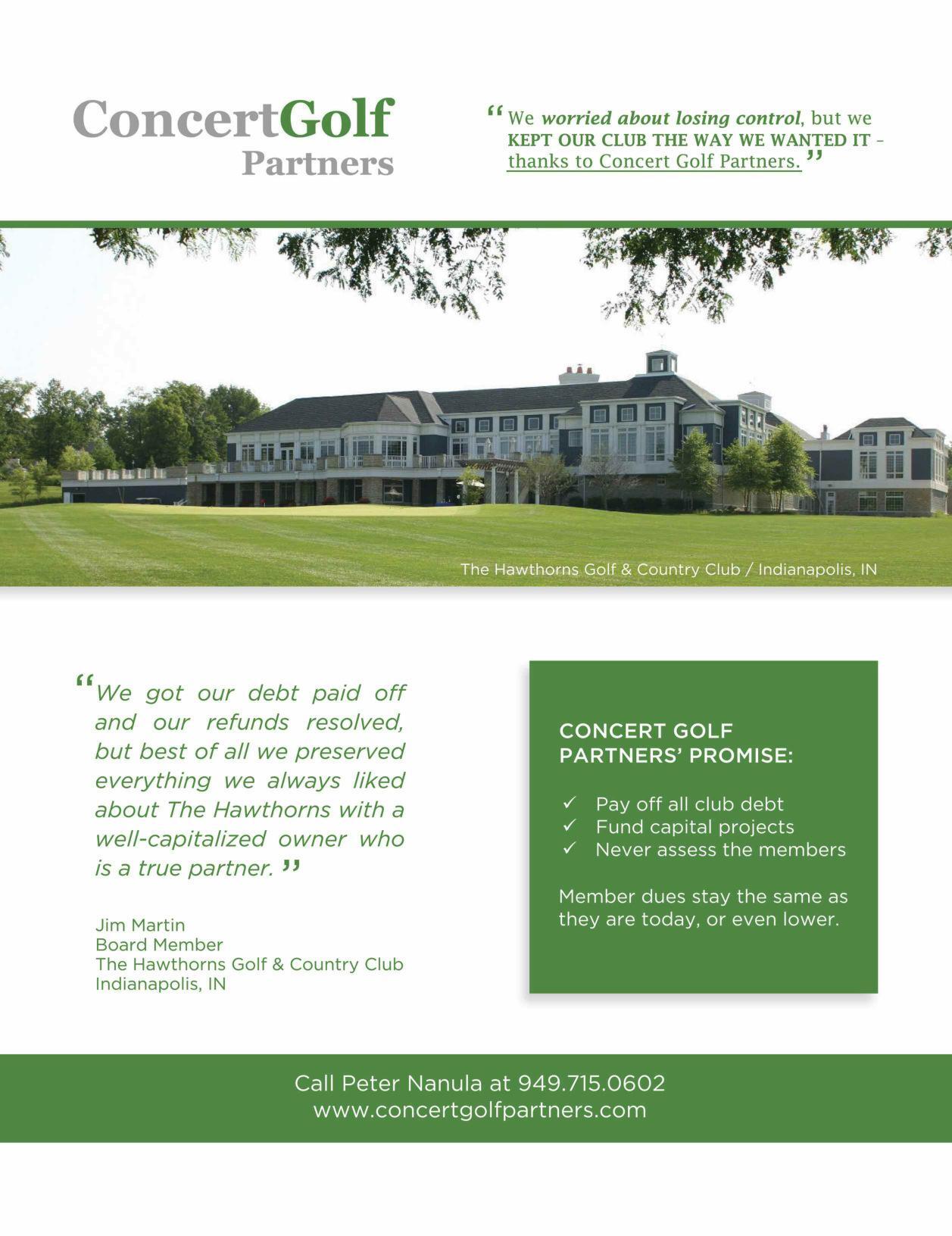
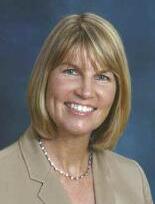
Perhaps you’ve read the recent articles about the kitchen staffing crisis in America.
“Not Enough Cooks in the Restaurant Kitchen” (New York Times article by Kevin Pang, 10/2015) and “Where Have All the Cooks Gone” (Chicago Tribune article by Julia Moskin, 8/2015) are among them.
It’s been a recurring theme this year when speaking with executive chefs at conferences, as well the numerous phone calls I’ve received from executive chefs around the country. There’s a growing crisis in our private club kitchens and in restaurant kitchens across America because of a shortage of qualified kitchen personnel from cooks to executive sous chefs. With a record number of restaurants opening and other culinary employment alternatives (upscale supermarkets, catering facilities, upscale retirement and assisted living communities, and even food truck ownership, etc.), the competition for qualified kitchen labor is fierce.
Also, with the economy picking up there are more job opportunities that pay higher rates than traditional private club kitchen wages, and offer more work/life balance.
Add to this the growing Millennial workforce that’s more interested in: work/life balance, knowing more about the business they work for, autonomy, as well as having been raised to believe “everyone is a winner.” (RestaurantHospitality.com article “4 Tips to Engage a Millennial Staff” by Megan Rowe, 11/2015).
Moskin in her Chicago Tribune article wrote: “Cooks joining the profession now are more particular about the kitchens they want to work in, better equipped to move from job to job and from city to city, less willing to work long hours for low wages and more impatient to rise.”
So how do private clubs attract, engage and retain qualified kitchen labor? It obvious to me that investing in the staff from a compensation and personal development standpoint is an important strategy. Pay your team higher wages than your competition, offer them benefits and offer them more work/life balance. And get that word out.
What is that you say? You can’t afford it? I don’t think you can afford not to if you want to
deliver the quality food and beverage experience that your newer, younger members demand. Is your club known as a preferred employer in the area? If not, why not? Look into what it takes to develop community approval and make it so.
Check out the employer awards that the Detroit Athletic Club has earned over the years: “Detroit’s 101 Best and Brightest Companies to Work For,” “Crain’s Cool Places to Work,” and “Detroit Free Press Best Places to Work For.” The DAC advertises this on their website as well – they get the word out.
We’re not talking just about increasing compensation for line cooks and sous chefs either. Private clubs now more than ever need to “compete with the streets” to engage their members and attract them to dine at the club rather than area restaurants.
Private clubs need executive chefs who bring leadership, talent, creative menus and presentation, financial expertise, compassion, empathy, mentoring and vision to their culinary programs along with a personable demeanor and a “the answer is yes” attitude towards member and guest service. Often we are contacted by private clubs who want to “raise the bar” in their culinary programs because their newer, younger members are eating out more often at trendy area restaurants and everyone is a “foodie” now.
The F&B programs at private clubs are vitally important to member engagement because everybody eats. F&B and fitness are the new main attraction for the whole family – even more so than golf.
Clubs will not be able to attract talented individuals at the same compensation rate as their previous chefs. If employers want to “raise the bar” on their culinary program they need to be willing to “raise the bar” with compensating their culinary team.
Private clubs today need to invest in their executive chefs and their culinary team. The time has come to put your money where your mouth is.
Lisa Carroll is a search executive and consultant with Kopplin & Kuebler, LLC, a consulting firm providing executive search, strategic planning and data analysis services to the private club industry. She specializes in executive chef searches. The company has offices in Scottsdale, Jupiter, Atlanta, Denver, Cleveland, and Naples. Lisa can be contacted at (561) 596-1123 and at lisa@kopplinandkuebler.com.


The history of membership committees and secretaries is long and colorful.
However they’ve been known most frequently for their role as gatekeepers and insulators, rather than the hunter/gatherer role most membership committees are charged with in modern times.
In this series, the role of the membership committee is examined and several best practices outlined. Clubs today face many challenges in their quest for relevance and sustainability.
Fortunately, these challenges have now focused many great industry minds on sound membership strategies and processes. When applied judiciously, these practices can and will provide a successful and sustainable membership result.
Obviously, there are many different kinds and types of clubs, but here is a general overview of how the committee should lay-out their strategy.
Market Demographics 5, 10 & 15 Minute Drive Time (Freestanding and Residential Clubs)
• Population, age by income and net worth
• Competitive analysis (brand, pricing, condition & market relevance)
5 year Annualized Historical Analyses (graphs are best)
• Membership totals by category
- total new members by category
- total resigned members by category
- Golf rounds, restaurant covers and gross revenues by each department
Member Profiles
• age segmentation (use census as a segmentation template) and tenure of membership
• Families with children by age segmentation (<7, 7-12, 13-17, etc)
• age and family profile of new members over the past five years
• zip code segmentation utilizing members residence address
Due DiliGenCe
Pricing, categories of membership, events, programming, capital spending, and nearly everything that is priced or processed in the club benefits from a thorough due diligence of the club’s market community. In the discovery process, remember that clubs serve two communities – their existing members and those they hope to attract as members.
Both are infinitely definable both demographically and on their respective wants and needs. Here’s a very short list of items that all committees should have available as they consider developing membership plans and strategies and of course, demographic charts may vary based upon the type of club. (see inset)
The significance of this data is obvious as it provides a clear overview of the club’s market as well as a potential roadmap to make the club more relevant to a broader cross section of the market.
Once armed with this intelligence, conjectural conversation at committee meetings will be replaced with an accurate and predictable, data-driven planning process. Now, and only now, should any kind of planning take place in terms of determining where your membership strategy might go next.
MeMBeRSHiP STRATeGy
Here are some fundamental components to consider as you develop your membership strategy….
Set goals and objectives – In the due diligence process hopefully you will have learned about the club’s marketplace and the internal trending and profiling of the club’s membership. This should lead to some conclusions relative to strategy, leading in turn, to the tactical processes required to meet the club’s objectives.


Have you ever heard the saying: “if you don’t know where you are going, then perhaps you are already there?” This applies to the quality levels to which your club aspires.
The notion of quality is often a nebulous, primarily because it is relational — everyone has their own idea of what quality is. We pose the rhetorical question: “What is your idea of quality?”
From a management perspective, a club cannot get through a single day without dealing with the concept of quality. However, every encounter is coupled with some additional qualifier or challenge, whether it be operational, financial, political, etc.
Quality is like a neutron that always has an electron or two hanging on to it.
How does these questions of quality apply to the board of directors? Quality, in this perspective, is the desired outcome of the members’ interest in their memberships.
Membership in a club implies exclusivity, convenience, privilege and higher quality than what is available outside. The board’s job is to preserve and protect the members’ investment and to act in their best interests, therefore, quality is of paramount importance to the board ‘s purpose.
To maintain quality it must first be defined. This is also the role of the board. Quality in a club is often confused with the current culture and status quo. Sticking with the “energy” analogy, quality is also like a moving car. It only goes moves forward when you apply the gas. When you let up on the gas, it slows down and eventually stops. Coasting is a slow form of stopping.
The board’s role is to define the “quality” levels to be pursued and maintained. Management’s role is to deliver that quality. Many clubs have this in reverse, leaving management with the nearly impossible task of defining quality, dayto-day, on the fly.
Point high! Constant and consistent application of upward pressure is necessary to not only achieve quality but also to simply maintain it. It’s a perpetual process, and you need to always point higher than the status quo.
How do you point high? It’s the same question as: Whose version of quality do we use?
This is vital. Most managers wrestle with the question on a daily basis, and, out of necessity, it often becomes their version. To point high, the board should begin by defining the vision and core purpose of the club. Then, add some metrics (such as the results of member surveys, industry benchmark data, usage statistics, etc.)
The next step is to create the “operating standards” that will define the details of the vision. Look at the club’s “vision” as if a photograph, and the “standards” as individual pixels within the picture, which provide clarity, definition, color, tone, etc
Begin this process at the bottom of the organization by providing a clear vision, and let the details build from the operative levels upward through management, to committee/task group and then the board. As the details (i.e., the pixels within the photo) are added, the picture gains clarity, tone and definition.
This is where collaboration begins – with the suggested details (“standards”) in place. The board members must determine if the picture the details represent is what they want to see.
They must ask: What is absolute? What is critical? What is unnecessary? What is preferred? What can we afford? What can we deliver? What is right and what is not?
Ultimately, the board needs to determine: What does excellent versus good look like? And then mandate it.
As I said, point high! BR
To learn more about how to develop and manage your club’s standards of operation, contact Bob Bodman, President of Club Resources (800) 2676758 or via email: Bob@ClubResources.com
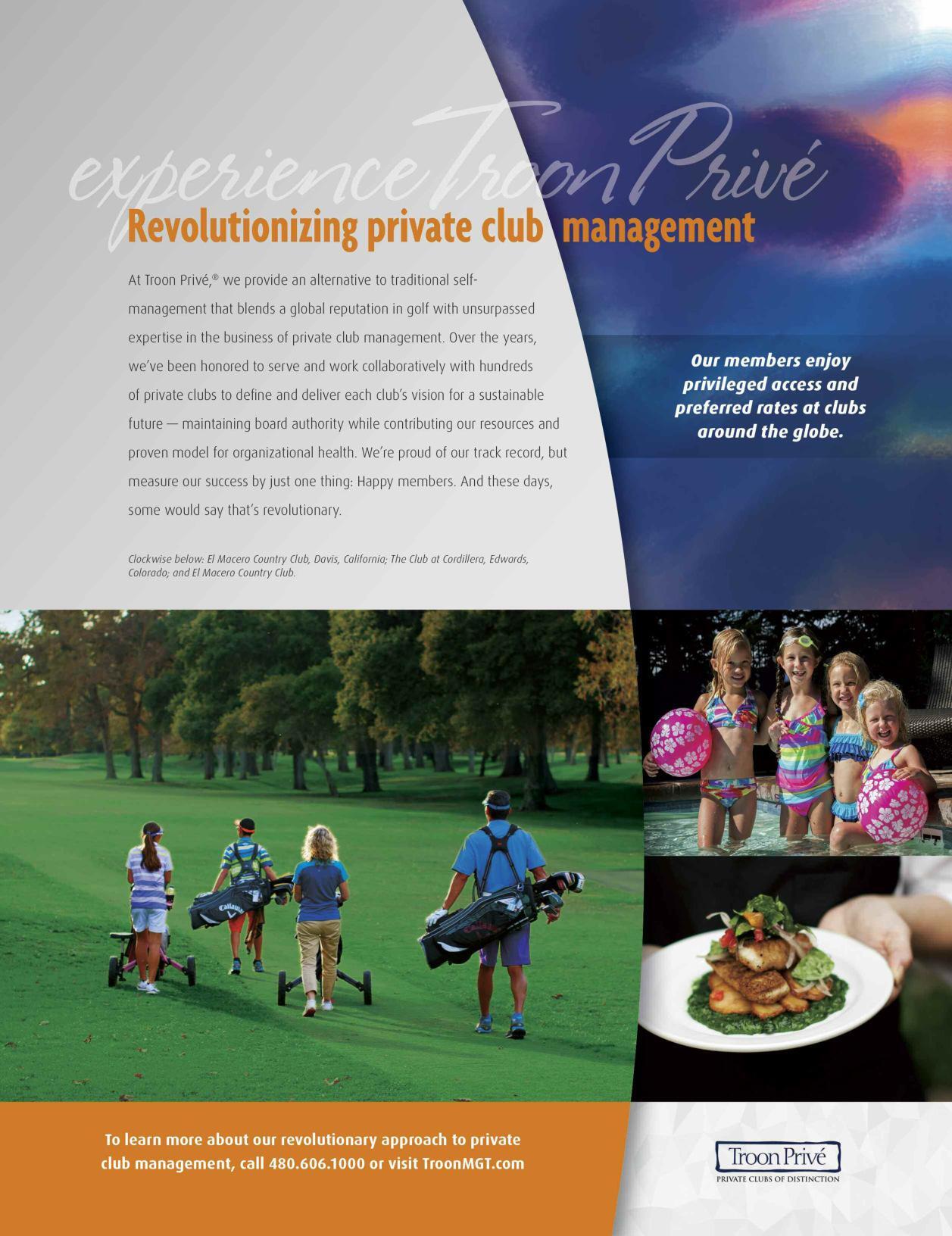
and approval of upcoming meeting schedules. The general manager can include in the meeting agenda resolutions approving all of the items on the consent agenda.
Items that require discussion by the board in order for the board to fulfill its fiduciary duty should not be included within the consent agenda. I’m often asked whether approval of the club’s financials or the treasurer’s report can be included in the consent agenda.
My view is that financial information should not be included in the consent agenda because financial oversight is an important part of the board’s fiduciary duty. Instead, the meeting minutes should reflect that the board considered this financial information, asked questions of the treasurer and general manager and then adopted appropriate resolutions.
As the board becomes accustomed to using the consent agenda, the board members should come to the meetings prepared. Board members who previously showed up at the
from Membership Committee |42
Here’s an example: Assuming that you found your membership to be aging and declining, and the marketplace to be full of young families, the membership committee’s goal may be to attract 50 new young families over the next 24 months.
Great, except that the club experience is like stepping off a time machine into the 1960s. Not exactly young family attractiveness, right?

The point is that once realistic goals are in place, based upon the proper due diligence, many other things may need to happen throughout the club in order for the plan to have any chance for success. This involves a systematic and synergistic engagement of all departments along with the board and various committees.
board meeting and then began to read the board packet will no longer be able to do so. The meeting chair will call for comments or discussion of any consent agenda item, call the question and move on. Directors should be encouraged to contact the general manager before the meeting with any small corrections, so that these completed before the meeting begins.
Board members will begin to address small corrections in advance and to alert the general manager of items that may require correction or discussion, so the president can run the meeting very efficiently. This allows the general manager to organize the committee schedule and put all reports and requests into an effective board packet with an appropriate board agenda. Coupled with a consent agenda, this can make board meetings much shorter and more efficient. BR
Robyn Nordin Stowell is a partner in the law firm of Sherman & Howard L.L.C. in Scottsdale, Arizona. Robyn may be reached at (480) 624-2736 or by email: rstowell@shermanhoward.com.
The term, “everybody markets” in today’s challenging membership arena, is absolute and essential in building and nurturing a brand that is relevant to the two communities the club serves – existing members and those a club hopes to attract.
Determine the target market – Using our example to attract 50 young families over the next 24 months, the target has been identified. But, how do you get to them? If the perception of the club is ‘octogenarian’, work may have to be done to rebuild the club’s brand through generational programming and take more time to change the age perception.
If you have developed a truly eclectic and inclusive interdepartmental programming process, referrals, club events and other similar vehicles to introduce younger members and ‘showcase’, the club will be more immediate in receiving good results.
Member events that offer guest participation are still the best ways to engage a target market, but obviously the opportunities are as wide as your imagination. The important issue is that through due diligence you now know who to target. How you do that can be part of the committee discussion.
In the next installment, processes for creating greater relevance to a broader cross section of your market will be discussed. BR
Rick Coyne is CEO of the Professional Club Marketing Association. He can be reached via email: rcoyne@clubmark.com
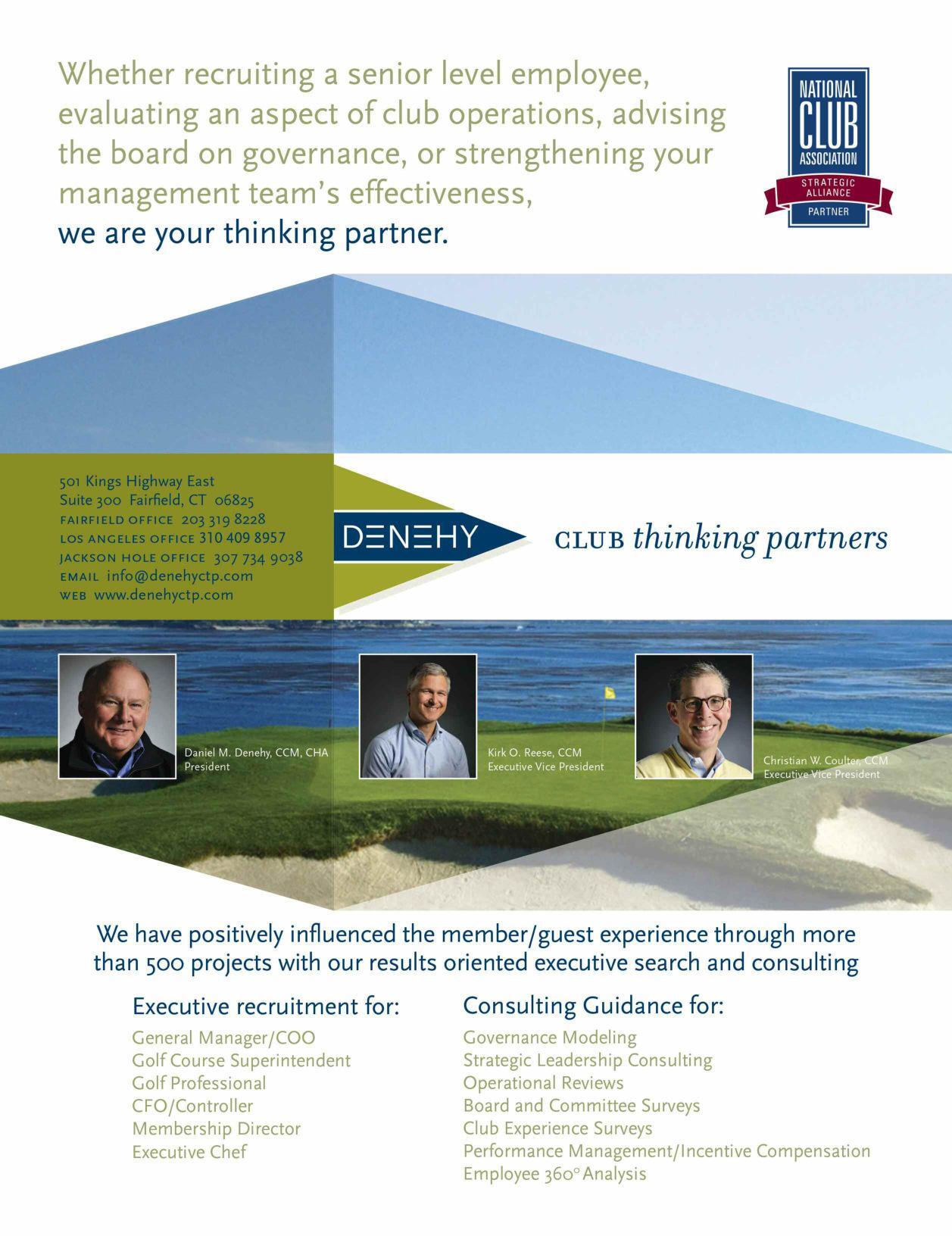
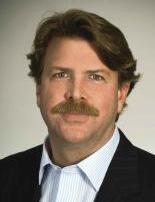
As a clubhouse designer and stylist, i always enjoy discovering new approaches and trends that can aid our club partners to enhance their club’s value proposition and member takeaway.
During the past several years, we have renovated seemingly a dozen underperforming club dining venues into very successful casual dining social bar operations. In recent months, we started receiving calls from an array of golf, yacht and city clubs desiring the next great dining/social venue concept to transform their dwindling formal dining business.
“Creating intimate environments paired with exquisite offerings and exceptional service will never die or fade away”
historical legacy and brand DNA. In addition to inspiration drawn from my favorite dining and social establishments, our team works closely with our many forward thinking club partners, specifically the general managers and culinary team leaders. Together we pair our club-centric aesthetic with their vision for unique menu offerings of small plates, seasonal farm-to-table artisan dishes, seafood, classic steaks and the latest uber club burger artfully aligned with complimentary fine wines and spirits.
The resulting venue and offerings collectively blur the lines between your father’s classic club dining room and what is fresh, relevant and in demand by today’s club member demographic.
THe STAnWiCH CluB
GReenWiCH, CT
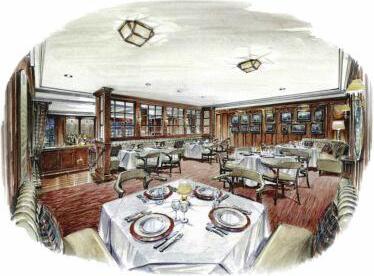
In our quest to come up with the next new member draw, we drew inspiration from several of my favorite New York and Chicago classic dining and social establishments. The result was a club specific hybrid venue that is essentially a blend of a classic club dining venue and the new social and dining hot spot in town.

The architectural backdrop for the hybrid venue is classic club. Most with wood paneling or a combination of wood paneling and upholstered inset wall panels which creates a warmer décor and better acoustics. To keep it fresh we use “transitional” décor touches of hand rubbed antique brass fixtures, fittings along with tufted leather upholstery and plush fabrics. To pay homage to each club’s unique and distinguished history we incorporate framed artwork and photographs that reinforce the club’s
“As club managers, we need to remember that when it comes to dining options, clubs are not competing with other area clubs, but are competing with Main Street restaurants. Creating character, providing an intimate but casual setting, and crafting unique menus are some of things we need to do to keep the membership coming back.”
Guy D’Ambrosio, GM/ Coo
The Stanwich Club
Creating a new alternative to the ubiquitous formal dining experience with food and an ambiance that has a vibrancy while remaining true to your club’s unique brand and historical legacy will have members dropping in multiple times a week. BR
Craig J. Smith ASID is a partner/co creative director of C2 Limited Design Associates, an award winning interior design and clubhouse styling firm with studios in historic Fairfield, Connecticut and Williamsburg, Virginia. Craig can be contacted via email csmith@c2limited.com or via telephone (203) 259-2555 ext. 312.
In December 2015, C2 Limited Design Associates was named BoardRoom magazine’s Interior Design Firm of the Year for the third consecutive year.

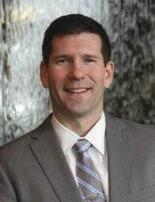
Club leaders frequently struggle to determine the proper time to execute aesthetic enhancements throughout their clubs.
In the past, many clubs have taken a piecemeal approach to interior design, hiring different designers to renovate one room at a time. Often this is only after someone has noticed that a space is a decade past its prime, resulting in a mismatched aesthetic, excessive spending, and a club design that is devoid of character.
Interior enhancement is a method of planning that solves this industry problem. From the big picture to the tiniest details, this type of interior planning examines all aspects of the design and offers definitive guidelines that specify which projects a club should undertake over the next five to 10 years – and when those projects should be implemented. These guidelines also identify efficient financial models that can fund renovations over time, giving clubs a clear picture of what projects their money is being funneled into at any given time. In many ways, interior enhancement is a kind of interior design master plan that establishes a uniform aesthetic, reflects a club’s culture and carries that culture into the future.
“their professional insight and guidance aided in the development of the groundwork for a comprehensive plan.”
Mark bado, General Manager the Kansas City Country Club
Creating a comprehensive Interior Enhancement Plan prevents ever-shifting club leaderships from tackling projects on impulse, or muddying the club’s design aesthetic and conceptual direction, all while potentially wasting money. It also ensures that true specialists are creating designs that suit the club’s exact purpose, rather than hiring a friend-of-friend or a
residential designer that is unfamiliar with creating spaces that can endure heavy use.
Recently, Chambers partnered with The Kansas City Country Club to develop an Interior Enhancement Plan that progressively renovates each space, allowing the club to augment their aesthetic in a financially feasible way. “Their professional insight and guidance aided in the development of the groundwork for a comprehensive plan,” says Mark Bado, The Kansas City Country Club’s general manager. Chambers also took the opportunity to design spaces rooted in the club’s historic love of Polo, as well as its rich Scottish heritage
This is yet another advantage to Interior Enhancement Plans. They allow designers to incorporate local elements into the space that echo a club’s culture, location and history, rather than regurgitating cookie cutter club-esque designs that look outdated within a few years. Unfortunately, club design often ignores the illustrious legacies that clubs are so proud of, but clubs actually have an advantage over other public places because of their long histories. Generation after generation have lived, worked, and played inside club walls. There is a vibrant energy to work from there, a distinct atmosphere that can be teased out with thoughtful design. Ultimately, it is that sense of authenticity that makes private clubs so exciting to work with as a designer.
Quality Interior Enhancement Plans truly enrich the member experience overall. They invite members to develop an emotional bond with their club without foregoing cohesion, freshness, or functionality. These plans create continuity between members and the space they occupy, allowing them to truly feel at ease in a place that has been tailored to their needs and attitudes. And that is exactly how members should feel when they set foot in their club – like they are being welcomed home by family. BR
Charlie Turner, ASID, NCIDQ, is director of interior design at Chambers. For more information, contact him at (410) 727-4535 or via email: cturner@chambersusa.com.


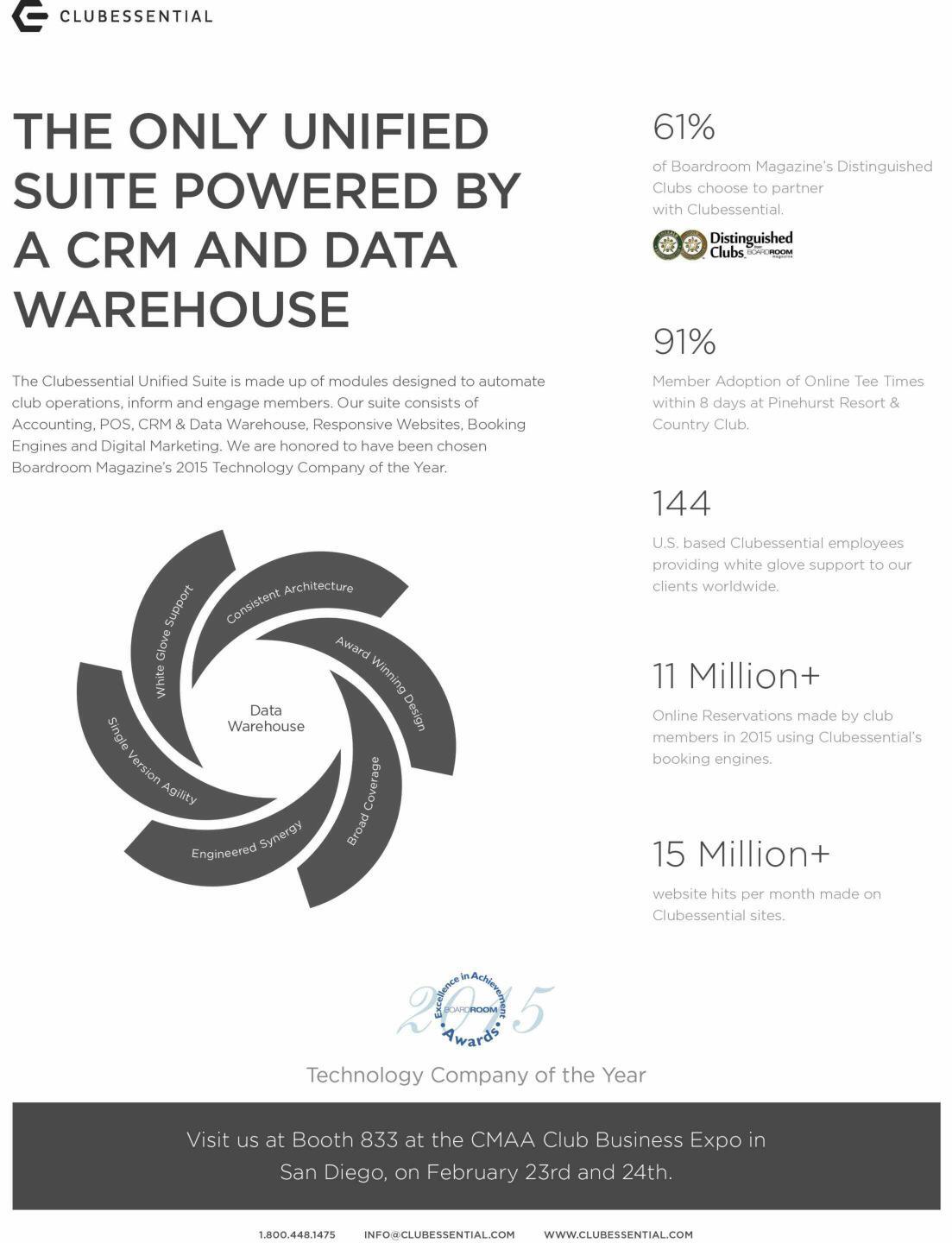
Carolina Country Club is a full service, very active private club facility with 1,250 total members. Located in thriving Raleigh, North Carolina, the clubhouse is handsomely furnished in classic fashion with traditional furnishings and antiques. Although the club has always enjoyed successful casual bar and dining venues, club management believed they were losing too many diners to the local, diverse restaurant culture. In an effort to bring those diners back, the club decided to create a restaurant in a club with a new and exciting area for dining and socializing.
The club commissioned a design team consisting of their long-time interior design partner, Ferry, Hayes & Allen Designers, along with Chapman Coyle Chapman Architects - both from Atlanta, Georgia. The team was charged with creating a totally new concept for casual dining in the club. The comprehensively renovated areas include a new casual dining entry, BISTRO 1910 (bar and dining), Founders’ Private Dining Room and expanded, separate dining patios for families and adults.
The core of the renovation is the new BISTRO 1910, the name of which commemorates the founding year of the club. The design team replaced an existing linear bar with a U-shaped bar that can service up to 15 members and guests who may order from the full menu. The team also developed a small display kitchen within the bar to expand overall food service production capacity and provide diverse menu options. A variety of seating options are offered throughout the room, including bar and banquette seating, along with dining, bistro and community tables.
The new facilities opened to the membership in August 2015. Revenue improvements to date include:
• 52 percent increase in adult casual dining covers
• 9 percent increase in the average check for food
• 84 percent increase in average per person beverage charges

Like BISTRO 1910, the Founders’ Private Dining Room was created from existing dining spaces. This flexible room is located to allow for overflow from either the new bar area or an existing Grill Room. It can also be used for casual private dining events.
To finish off the new rooms and enhance the restaurant in a club ambiance, Ferry, Hayes & Allen introduced transitional furnishings, neutral colors, and simply-lined decorative light fixtures. These furnishings were intended to complement the existing, traditional pieces found throughout the clubhouse, yet offer a comfortable and current design style.
In addition to room design changes, the club also included new tabletop designs, menus, staff uniforms, beverage service and selections, as well as extended hours. The chef incorporated innovative twists on the local cuisine into the new menu. He also wanted to present fresh concepts like small plates, or tapas, that are prepared in the new display kitchen. Lastly, a selection of draft and craft beers were also added to the menu to complete the restaurant dining makeover. BR


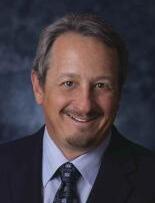
Considered one of the most prestigious clubs in the u.S., Southern Hills Country Club in Tulsa, oK was established in 1936.
Their Perry Maxwell-designed Championship Course was the first to host four PGA Championships, and has hosted three U.S. Opens. Southern Hills offers 27 holes of golf, a fitness center, four indoor and eight outdoor tennis courts, swimming and diving pools. They have an extensive food and beverage operation, consisting of a fine dining restaurant, two grills, a lounge, pool-area restaurant and 10th tee halfway house.
According to Nick Sidorakis, CCM, general manager/COO of Southern Hills, “We felt it was time to move past the numerous spreadsheets into a comprehensive F&B system for better control and less associated labor. After looking at a few systems, we chose the FOOD-TRAK System because of the company’s great reputation and experience in the club industry as well as their strong approach for implementation. They built our database, trained our staff and came on-site to supervise the start-up, and we are very pleased with the result.”

Sherri Scott, purchasing manager for Southern Hills is their FOOD-TRAK team captain. “Our primary concerns were inventory control, barcode capabilities, purchasing control and streamlining operations,” says Scott. “The FOOD-TRAK team made the implementation process practically seamless. We conducted our
first inventory March of 2013. The first month, we used both FOOD-TRAK and the old system for inventory comparison. April 2013 we began using only FOOD-TRAK for inventory, purchasing and transfers. It was a very easy transition.”
Instead of bringing the software in-house and operating it on their own systems, Southern Hills chose to take advantage of the FOODTRAK Cloud Service. “The hosting solution offered with FOOD-TRAK made perfect sense for us,” says Sidorakis. “We have no need for servers or IT assistance, the system can be accessed from anywhere, and they handle backups and updates automatically.”
Southern Hills, in an effort to reduce labor associated with inventory and procurement also embraced the idea of mobile technology and scanning for their club. System Concepts, Inc. (SCI), developers of the FOOD-TRAK System offers the ability to use iPads and other mobile pad devices along with their line of FOOD-TRAK Mobile Partners – ruggedized and sealed handheld scanners that can withstand freezer temperatures and hot, humid environments.
In concert with their initial objectives for labor savings, Southern Hills makes extensive use of barcode scanning. “FOOD-TRAK cut inventory time by more than half,” observed Scott. “The Mobile Partners simplified inventory and transfers.” They also utilized many of the system’s hundreds of reports to help monitor and control the operation. The reports can be viewed from anywhere on any browser, tablet or Smartphone. “The reporting capabilities are exceptional,” says Scott.
A strong advocate for the use of automated F&B management systems in clubs, Southern Hills has been using the FOOD-TRAK system for almost three years, and is confident their objectives have been met. “FOOD-TRAK has given us more control. With ever-rising food and supply costs it is hard to put a dollar value on that,” concludes Scott. “It has been one of the best decisions we’ve made for our F&B operation.” BR
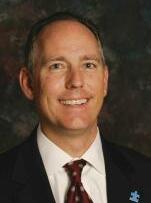







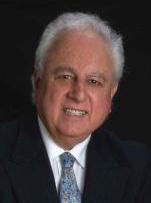







These top executives have taken their clubs to a higher level by implementing a better approach for managing club food and beverage departments. Building on a foundation of best practices, checks and balances, and integrated business flows, they incorporated leading-edge food and beverage automation and reduced labor by tying all their systems together.
The controls, disciplines and reports produced by this approach make it possible to run food and beverage departments at peak efficiency, substantially reducing clerical labor and food costs. Innovation. A better way to do business Just what you would expect from leaders at this level.


Most chairs are designed to fill a space. Gasser chairs are designed to elevate it. For over 70 years, we’ve been designing, building and perfecting the art of commercial seating, using only the highest quality materials.
When you buy a Gasser chair, you’re making an investment in style, innovation and durability that will be a better value over the long run. Artfully designed, beautifully executed and built to endure, Gasser chairs don’t merely perform, they dazzle.
ARTiSAnSHiP THAT RunS DeeP in ouR FABRiC
The beauty of a Gasser chair is more than skin deep. Look closer and you’ll discover that it runs through the entire company. From design to construction to customer service, it’s a forte that’s been 70 years in the making, and runs deep in our fabric.
CRiTiCAlly ACClAiMeD DeSiGn AnD WoRKMAnSHiP
You make them feel welcome. We make them feel comfortable. Beyond just looking good, Gasser chairs offer unparalleled comfort and support. It’s this fusion of form and function that ensures a virtuoso performance every time.
A FlAiR FoR DeSiGn THAT DeFieS WeAR AnD TeAR
More than just standing out, Gasser chairs are designed to stand up to virtually anything that can be thrown at them. Made from only the highest quality materials and built to last, Gasser chairs retain their panache long after others have fallen from grace.
CuSToM SoluTionS To leT youR iMAGinATion SoAR
Your rooms come in all different shapes, colors and sizes and so do our seating solutions. At Gasser, we’re not one to provide cookie cutter solutions to complex challenges. Let your imagination soar and let us custom design something specifically to your needs.
CHeCK uS ouT online
Now certain products can be rotated full circle, providing a 360° view of the product. Models that offer this feature will have the 360° icon displayed above the model image on the ‘seat type’ category listing page.

It was in the mid-forties that the three Gasser brothers, Louis, Roger and George, decided to combine their talents and set out on the next phase of their lives. With a few ideas and very little money, they set up shop to work with a relatively new material at the time, aluminum. Tapping into some of the local expertise available in their industrial hometown area of Youngstown, Ohio, they began providing services to local companies, such as assembling aluminum storm windows and screens, welding aluminum beer kegs, and even fabricating custom parts for a prototype helicopter
Driven to develop their own product line, they began designing and manufacturing aluminum-frame dinette sets. With minor success selling these chairs and tables close to home, a young George Gasser loaded a few chairs into the back of his car and headed to Chicago to exhibit at the National Restaurant Show. Attendees were intrigued by Gasser’s highly durable, lightweight chairs and, at the close of the show, George left Chicago with a nice order, several good leads and a whole new market to develop.
The brothers realized that if their young company was going to succeed, however, innovative design alone was not going to be enough. It was during this period in the company’s history that the key components of their business – enduring work ethics, sound engineering principles and meticulous attention to detail – were established.
Today, Gasser Chair Company remains a family owned business. The second and third generations of the Gasser family, teamed with some of the finest skilled people in all aspects of the business, are guided by the founders’ original principles. Together they proudly continue the tradition and philosophy of developing innovative solutions to customers’ seating requirements and skillfully manufacturing the finest quality seating.
Many companies market themselves as industry leaders; Gasser Chair is one of the few that can back up that claim. From the earliest days of their business, product development and improvement were the constant challenges. And, not surprisingly, it was simply listening to customers that provided the opportunity for many of their successful innovations. BR
For more information please visit www.gasserchair.com

if you’re thinking that it’s time to upgrade, you are not alone. After years of a stagnant economy, many clubs are capitalizing on the opportunity to upgrade their facilities and attract new members. Moving forward without a thoughtful plan can lead to wasted time and money. Here’s how to take your club to the next level!
The first step is to consider your club’s needs. Do you need to make simple upgrades or establish a long-range master plan? A master plan is created through a series of steps that identify the club’s overall deficiencies (e.g: clubhouse, golf, pool, or fitness facilities). A roadmap is then created for a phased renovation and/or new construction that can be carried out in a fiscally responsible manner.


For smaller scale projects, a master plan may not be necessary and simple upgrades can make a big difference. Either way, hiring a designer that specializes in country club projects will make the process seamless and enjoyable.
WHy HiRe A DeSiGneR WiTH exTenSive CluB exPeRienCe?
Clubs are unique because they are expected to function in a variety of ways: a gathering place, restaurant, luxury spa and fitness center, event space and more. The ultimate goal is to deliver beautiful, functional spaces that feel like a home away from home. All too often, clubs take a band-aid approach to update their facilities. Without professional guidance along the way, this approach can lead to an inconsistent overall experience. The designer should take the time to learn the history and culture of each individual club. With a combined 44 years of experience, the team at HINT | Harris Interiors thrives on working collaboratively with managers and members to bring the club’s vision to life. We understand that the needs of today’s clubs are changing and we provide design options that both current and prospective members will love. Our job is to identify the projects that deliver the most value for your club and its members.
As a current client said “I could not have hired a more caring, hard-working, talented group of people” – Ron Gillette, general manager, Country Club of Charleston. BR
HINT |Harris Interiors is master planning and clubhouse interior designer based in Atlanta, GA. For more information please call (404) 492-5997, email kelley@hintatlanta.com or visit www.hintatlanta.com

The Washington Athletic Club (“The WAC”) was founded in 1930 and over the last 85 years has become not only an iconic landmark of the Seattle skyline, but also one of the most prestigious clubs with one of the highest memberships in north America.
The WAC has received the 5 Star Platinum Club of America award every year since the award’s inception in 1997, and in 2014 was named the best athletic club in Washington State and one of the top five nationally. The 21-story clubhouse houses a 109-room boutique hotel for members and guests, three restaurants, a full-service day spa and wellness center, as well as state-of-the-art fitness facilities.
In 2006, The WAC found itself in a predicament when looking to replace their antiquated property management system. Speaking with Paul Lowber, CFO of the Washington Athletic Club, he says he remembers having to decide if they would stick with standalone systems across the property for membership, hotel, spa, fitness, F&B, group catering and retail or if they should look to replace everything with a fully integrated system. “We liked the idea of a single member database across the property, rather than silos of information,” Lowber explains. After an extensive RFP process, The WAC selected ResortSuite to manage all of their major operations on property including memberships, hotel, restaurants, spa, catering, and retail. “The robust Oracle platform ResortSuite runs on, the single-member database, and its capabilities in each module were key attributes in our final decision.

We knew we would be one of ResortSuite’s first large private city club clients, but we had executive commitment from Frank Pitsikalis (ResortSuite Founder & CEO) and the team to work together to continue improving the system to serve like-minded companies.” Throughout the past nine years, Lowber says streamlining The WAC’s multiple areas of operation has increased efficiency amongst staff, and that ResortSuite continues to make significant improvements to its product with each passing year.
Since The WAC went live with ResortSuite in 2007, ResortSuite has made major inroads into the high-end private club world, continuously enhancing modules like ResortSuite CLUB, SPA and GOLF to be considered best-in-class systems, yet fully integrated with the rest of its powerful suite.
With a count of over 12,000 members in their rolls including Olympic athletes and politicians, The Washington Athletic Club continues to strive to provide the best in personalized member service. The WAC very recently launched their new website and using the ResortSuite WEB booking engine, members are now able to look up real-time availability and book a room online as well as view their member statements through the Member Portal.
“We love that our members are now able to authenticate themselves online to make room bookings and view their historical and real-time member statements. We look forward to customizing the booking engine and including additional booking functionality,” says Lowber. “Our goal is to continue to learn and train our staff in order to utilize ResortSuite to its fullest potential, both now, and as our club moves into the future, and realize our vision of providing exceptional and personalized member service.” BR


“if it takes a lot of courage to admit that you don’t know all the answers, just image how hard it is to admit that you don’t even know the right question.”
Steven levitt and Steven Dubner, authors of Think like a Freak
As club leaders steer the boat, they are faced with challenges every day. Some are handled with ease, and others require more thought and input. Key Performance Indicators (KPIs) can help club leaders (paid and volunteer) understand whether the club is on the right track, and if it’s not, KPIs can more easily identify where to make improvements and focus more attention.
Like Key Result Areas (KPAs), which focus on results of the club’s vision, KPIs focus on bringing about improvement to reach the club’s vision; helping club leaders reach desired results in key areas of the club such as golf, membership marketing, food and beverage, accounting and finance and human resources.
But with the amount of data that’s generated at a club, it’s important to choose the right measures and indictors. In other words, ask the right questions. KPIs must be aligned with the club’s core values, mission and vision. Get this right, and business performance will improve. Get it wrong, and focus will shift to delivering results on a specific measurement that has no overall positive impact on the club.
As Steven Levitt and Steven Dubner said in their latest book, Think Like a Freak, “If you ask the wrong question, you are almost guaranteed to get the wrong answer.”
Club KPis are likely to include some of
number of fitness classes
So, what is a KPI? What’s the difference between a measure and a metric? And because you can measure it, does that make it a metric? And because it’s a metric, does that automatically make it a KPI?
A measurement is a number, such as members, rounds of golf or total revenue, but until you make a comparison, it’s just a number. A metric is typically a combination of two or more measures. For example, rounds of golf over time or number of dinners in a month. Metrics help illustrate whether the values are good or bad, which helps with benchmarking and budgeting. A metric becomes a KPI when it’s put in the context of the club’s vision and supported with percentages or ratios.
KPIs are tools paid management can use to communicate the club’s vision to the board and other team members or stakeholders. Five or six KPIs create a valuable roadmap for management to use, ensuring that everyone is moving together in the right direction. Departments, and even individuals within the club have their own KPIs. But it’s important that they understand the context of what they are being measured against and how it fits within the club’s vision and goals.
Member usage
Member retention
Member recruitment
Market share
Member attrition
rounds of golf
number of spa bookings
number of diners
return on investment (rOi)
employee satisfaction
Member satisfaction
Member experience
If you are measuring numbers that aren’t in line with your club’s vision, your KPIs won’t help you identify where to make improvements or focus your attention. Essentially, you are asking the wrong questions. BR
Heather Arias de Cordoba, associate editor with BoardRoom magazine, can be reached at heather@boardroommag.com or (949) 365-6966
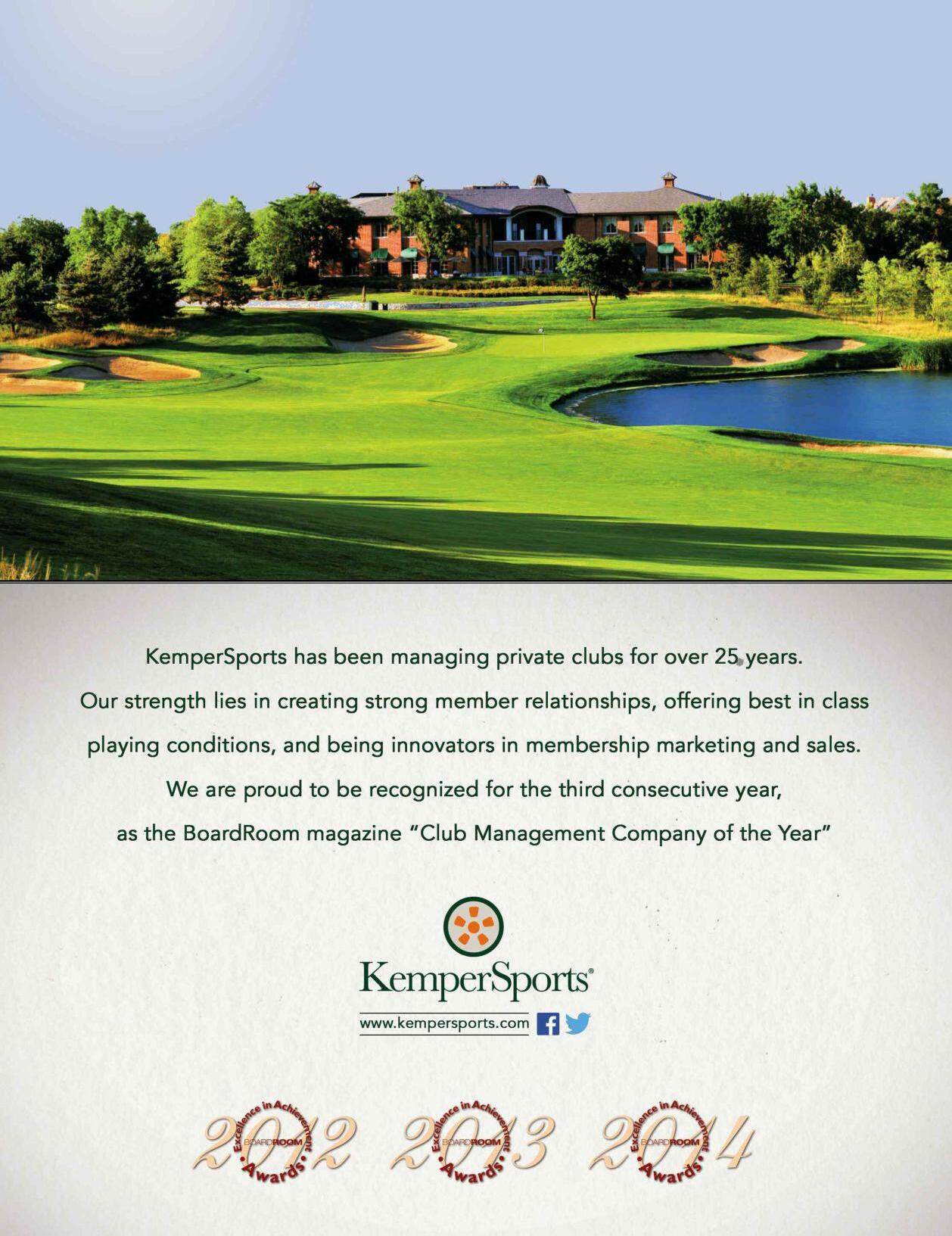
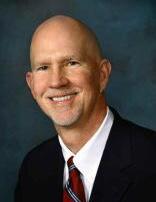
“Chris, i’d like to really take a tour of the club, look under the hood, kick the tires. you know, really get to know what i’ve got here. oh, you don’t need to walk around with me, just get me a set of keys and i can handle the rest. oh, i’d like to speak individually with each of the direct reports. you know, so i can get to know them and really understand how they tick and what i can do to get them motivated. How’s tomorrow work for the tour? Just leave some keys with Amy, in the office.”
Chris had been the GM for several years and knew Bob fairly well through their work together on the board of directors. Bob was once the vice president and had recently assumed the role of president.
As a recently retired owner of a small plumbing company, Bob was smart, energetic, and highly motivated to let his club friends know that he was in charge. With over 20 years of club membership, Bob was well known to everyone.
Even though Bob had been a member for decades, the role of president was new to him and came with a different set of pressures.
First and foremost was peer pressure – the desire to do a great job in the eyes of his friends.
Secondarily, and most likely the cause of Bob’s sudden interest in the detailed workings of the club, there is the pressure that people place on themselves when their confidence level is lower than usual. On a scale of one to 10, Bob was a 10 when it comes to the plumbing business.
When it came to club management, however, Bob was a three. As a result, he naturally defaulted to what made him successful in the plumbing business – hard, detail-oriented work. Since he had only a year to become an expert, he needed to hurry.
Bob’s behavior is not unusual. When we are in an emotional state that causes us discomfort, we naturally gravitate towards whatever makes us feel more comfortable. Managers often find that first-time presidents like Bob tend to be very detail-oriented until their confidence increases.
Once they have been in the position for a while and have become more comfortable with it, their interest in the details diminishes. In the meantime, however, Chris should be taking the pulse of the other directors to see how they feel about this new tone.
If the fellow directors agree that Bob’s behavior is not generating a good environment, there
are techniques to be used to bring Bob’s direction in line with the preferred governance.
As usual, a manager directly attacking a director is not a great strategy. Instead, it’s best to allow director allies to do some of the heavy lifting.
Heavy lifting includes getting Bob to understand that micromanaging is not productive in the long run. In the “Harvard Business Review” article “How to Stop Micromanaging Your Team,” Rebecca Knight suggests that micromanaging hurts morale, establishes a tone of mistrust, and limits your team’s growth.
While micromanagers might like the idea of being “in the loop,” their behavior ultimately proves detrimental to the organization. Director allies who have Bob’s ear should encourage him to become aware of his behavior and take some simple steps to bring it under control:
• Understand why you do it. Micromanaging often comes from a place of insecurity. To help, think about the reasons you shouldn’t micromanage instead.
•Prioritize what actually matters. Determine which tasks truly need to be done by you. The real work of leaders is to think strategically, not to do their team’s jobs for them.
• Talk to your team. Be clear about when you want updates on their work, so they can help ease your anxiety. Ask them how you can change your behavior to better support them.
• Step back slowly. Tell your employees you trust them to make decisions. And try not to overreact when things don’t go exactly as you’d like.
Given that micromanaging isn’t an ideal governing model, then, what would an optimal model look like? To arrive at an answer, we conducted a survey of CMAA managers and presidents asking what percentage of their board of directors’ club-devoted time is spent in each of the following areas: operational, fiduciary, strategic, and generative.
As defined in the survey, “operational” referred to “daily functioning of service, golf course, food and beverage quality, specific Member enjoyment activities, and handling of complaints and compliments.”
“Fiduciary” referred to time spent “ensuring that the club is faithful to its mission, accountable to performance standards, and compliant
with laws and regulations. “Strategic” referred to setting the club’s priorities and course, and “generative” referred to planning periods during which the board “thoughtfully frames the problem or situation at hand before moving to choose strategies, make decisions or develop solutions.”
According to Harvard professors Richard Chait, William Ryan, and Barbara Taylor in Governance as Leadership (GAL), the optimal governance model splits resources equally among the fiduciary, strategic, and generative categories.
Operational was not a category analyzed in GAL, but was included in the survey because of its central role in club business. The breakdown of GM survey responses resembled the optimal GAL model more closely than did the presidential responses. Based on the survey, presidents seem to dip into operational more often than even the GMs recognize, which may be because of the “off-line” discussions that directors have with their peers.
Our survey also included the demographic question of predominant occupation of the president. The results are broken out in order to compare the presidents’ responses to the GM’s perception of the time the president devotes to the club.
When we filtered for occupation, the small business owner and entrepreneur increased their operational interest to 32 percent each! Attorneys dropped to 15 percent operational interest.
With this understanding, a GM may be able to predict the operational interest of a new president based on occupation alone. Such predictions are certainly not exact, but it might allow a GM to reasonably anticipate that a small business owner such as Bob would be interested in the details of the club.
portive will get immediately communicated to other directors, who are very unlikely to take Chris’s side.
Chris might want to start out with a breakfast or lunch to talk about the day’s goals. Chris can structure the tour so that all the club areas are thoroughly scrutinized. A meeting with direct reports should be held, with Chris present, so that they can show their level of collaboration and expertise. This is an opportunity to show how professional the organization actually is. While Bob means well, he’s taking both the directors and the management team down a difficult road, and it’s incumbent on the GM to alter the course. If not, the situation will become untenable, with unpleasant results for everyone.
Many managers interviewed in our survey stressed the value of keeping leaders informed, guiding the directors towards generative and strategic issues, having standard decision making procedures as part of the board operations manual, and being patient.
Because Chris knows Bob and his history, Chris can avoid being caught flatfooted by preemptively asking Bob
Though Bob’s micromanaging has the potential to become problematic, denying Bob his tour might not be the best method for discouraging his intensity. Instead, Chris might make this an opportunity to give Bob the needed confidence he’s searching for by orchestrating the tour himself.
Bob needs to get comfortable, and Chris can help Bob get comfortable by building his confidence in Chris, setting the stage for a solid managerial future. Deliberate time, patience, and respect at this juncture will pay dividends in the future, so Chris should see this as a career opportunity, rather than an excruciating day of hand-holding.
Chris should also remember that communication between directors about their manager is swift, so controlling the frame of that communication is beneficial. Bob is perceptive, and any sign that Chris is being anything less than sup-
if he wanted a tour, and setting up discussions with the direct reports. This kind of deliberate openness allows GMs to stay ahead of the situation and keeps the relationship with the president productive and positive. BR
MacDonald Niven, CCM, CCE is the general manager at La Rinconada Country Club in California and can be reached at (408) 402-7474 or via email: macniven09@gmail.com.

There is no script or playbook when becoming the liaison for the board of directors, the members and the golf course superintendent concerning golf course conditions.
The best chance for success is clear and concise communication between all parties.
Clear and concise communication includes addressing misconceptions with factual information to both the members and superintendent. It takes building a relationship with the superintendent that is open and honest. You are the voice of the members and are there to work with the superintendent to create the conditions desired.
The golf course superintendent is the professional managing all aspects of golf course maintenance. The club’s greens committee chairman is likely an avid golfer and a successful leader who cares deeply about the golf course.
The successful greens chairs know how to articulate to the superintendent what the expectations of the membership are, while being able to communicate to the membership the resources needed to accomplish their desires.

Here is a collection of practices to build this relationship so the club can be successful. One thing we stress here is that the greens chair is representing the membership as a whole not just a few. The key is to build a rapport and trust between the chair and the superintendent.
Here are our best practices to becoming the best green committee chair at your club.
• Develop a set of quality maintenance standards that can objectively address course conditions. This will help determine if expectations are realistic and the club has the necessary resources.
• Take a day and spend time shadowing the superintendent to understand “a day in the life of a superintendent.” This should not be scheduled, but an impromptu visit that allows you to understand how the job goes well beyond “growing grass.”
• Conduct a green committee meeting at the maintenance facility. This can show the good and the bad that exists in your facility. Is this a place you would want to work? Is it safe? Is it adequate for the work and storage that is needed?
• Create a “field day” on the course. Topics could include: why practices such as aerification, verticutting or topdressing take place. Having a “Demo Day” to show the equipment needed to operate the course.
• Spend time with the maintenance leadership team. Learn how the team is being developed to provide for the long-term success of the club.
• Work with the superintendent to create an agenda for the green committee. Share successes and failures but focus on the WHYS. Work together to create a plan for more success.
• Avoid making comparisons with other courses, as no two golf courses are alike.
• Consider using course maintenance consultants. These experts will provide an independent evaluation of the course, and the resources necessary to meet the standards. Consultants are used in every industry, and should be viewed as an asset not the enemy.
These are the key guidelines we see at clubs that are creating the course conditions desired by the member! BR
Dean Wochaski is president and an agronomist with Golf Maintenance Solutions. He can be reached at (757) 427-1712 or via email: dean@golfmsolutions.com



it’s always a good idea some resolutions for the year ahead, as we come back from our conferences with many ideas and new programs to implement for our clubs.
So it’s important to set the stage appropriately for new directions to keep our clubs and golf courses up to speed with the current trends in golf course management. An annual meeting with the general manager and the golf course superintendent is imperative to meet the needs of the membership.
Additionally, the appropriate club members/committee should be a part of that discussion to set the proper direction.
Never lose sight that to expect significant changes on the golf course will require potential changes to staffing and budget. All too often a club wants to be like the club down the street that has twice the budget and manpower to accomplish their goals. Resources need to match expectations.
In the last several years we’ve seen a resurgence in clubs updating and upgrading their golf courses. The golf business is highly competitive for the pool of potential members and people want to join a club that is the best value for them. The golf course is a major component of the reason people join a club. Therefore having the course standards and architecture current is very important.
Remodeling a golf course can range from a full rebuild down to the addition of a few forward tees or bunker remodeling. The selling of these programs takes some time and skill so it can take several years to plan and sell such programs. The smaller the upgrade the less expensive the cost and the time allotted to do it.
PoTenTiAl uPGRADeS
Turf reduction is a hot trend in many parts of the U.S. Because of drought and overall water conservation many golf courses have elected to take 10-15 percent of their turf out of irrigation. These areas can become waste areas or planted to low water use vegetation. Quite a few water agencies offer rebates for conversion to drought tolerant plants or waste areas.
Bunker renovation is one of the best value propositions for course upgrades. Over time, bunkers become old and tired. They lose their shape and often lack drainage. Additionally quite a few bunkers are positioned in places when a 220-yard drive was a long hit before newer technology was around. It is surely time to evaluate this feature of your golf course, and it can also be a time to bring back the classic bunker designs with the original architect’s intent.
Tee boxes can be added, leveled and resurfaced. Again this cost is not significant. The game needs new players who can come from juniors and ladies groups when we provide proper length. New tees can also keep our seniors playing longer and the game needs as much participation as our courses can offer.
While these items are obvious upgrades don’t forget infrastructure as well. Irrigation systems can be a million dollars or more. With the cost of water today (and limited availability) it is prudent to consider a modern irrigation system. Proper spacing and distribution of water is important to provide top notch playing surfaces.
RiGHT TeAM
When considering any course renovation or upgrades be sure to put together the proper team. Undoubtedly a professional golf course architect should be engaged to prepare a master plan. Staff members including the general manager, golf professional and golf course superintendent should work with a small group of members to establish the goals of any project/upgrades.
If projects are well planned they will be well executed. Take the time to look at your golf course and make it the best it can be with a timeline and budget that will fit the needs of your membership. BR
Bruce R. Williams, CGCS is the principal of Bruce Williams Golf Consulting as well as Executive Golf Search, which specializes in headhunting for golf course superintendents and industry positions (www.EGSinc.net). Bruce may be contacted at Bruce@WilliamsGolfConsulting.com or (310) 991-9176.
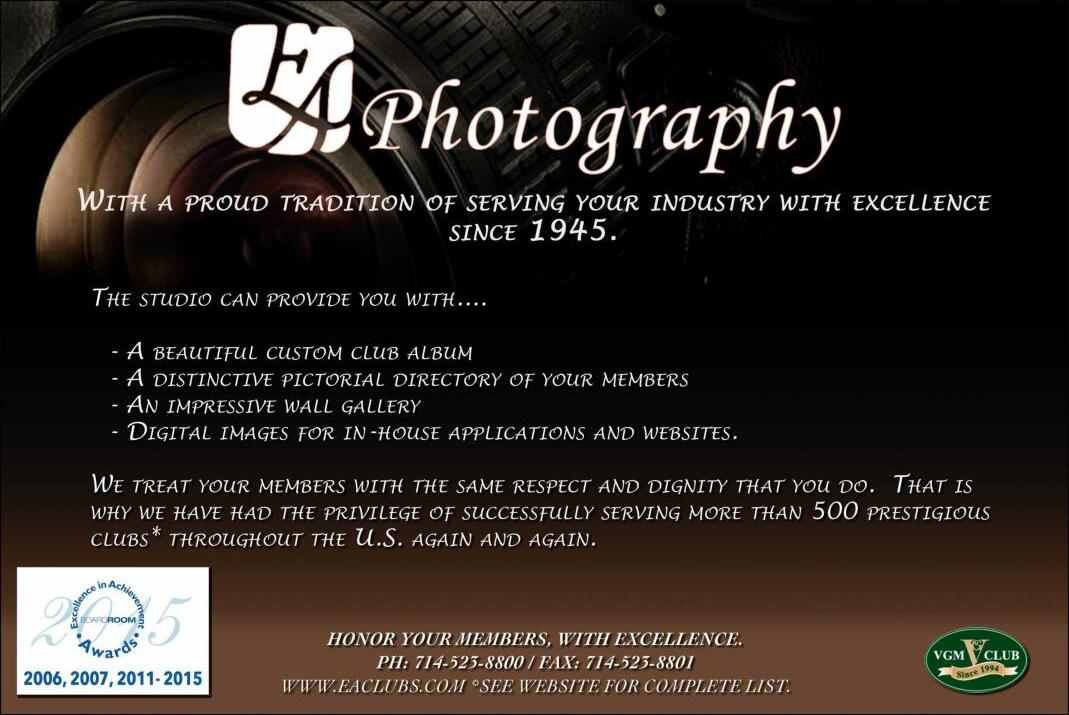



As a youngster, i played my fair share of team sports. Baseball was my favorite, but in high school i focused on wrestling, and enjoyed some success, winning an individual state title in Arizona, while my team took top honors as well.
As I’ve grown older, I’m staying active with individual sports – running, cycling, triathlons, mountain climbing and fitness training. I miss the team concept sometimes, but have learned that I still depend on others to be at my best.
A superintendent’s career can at times feel solitary as well. But, they have supportive teammates almost everywhere they turn – at their facility, within their local chapter, and as a member of the Golf Course Superintendents Association of America. I feel like part of a winning team as the CEO of GCSAA, and it’s our goal to help superintendents feel a part of this team too.
Superintendents push themselves every day to be their best. They work as part of a team within the golf course management staff, and as part of a bigger team at the facility, providing input and insight into different facets of the business.
Each time I attend a major golf championship, I’m reminded just how far superintendents go to help each other. Take for example, the PGA Championship in August where more than 100 volunteers came to support their fellow GCSAA members in making the golf course at Whistling Straits as perfect as possible. They stayed in college dormitories, worked 14-hour days, and 60 volunteers hand-raked 1,000 bunkers each morning!
Chris Zugell, CGCS at Whistling Straits, was also impressed.
“We couldn’t do it without all of the volunteers. They are extremely valuable to us being able to bring a major championships to Whistling Straits,” said Zugel. “There is a camaraderie within this profession that is second to none.”
All of those who worked on the golf course became a part of the larger team working on behalf of the PGA of America to showcase the PGA Championship.
Yes, a superintendent’s hard work can sometimes go unnoticed, even at their home golf course. But superintendents have a role in golf that is most important – they manage the
largest asset of the golf facility. Their expertise is what drives membership, play and revenue.
“The Golf Course Superintendents Association of America and all golf course superintendents are probably the most important single entity that we have in golf,” said Arnold Palmer, offering a King’s endorsement. “The conditions and the golf course’s beauty, the environment, the wetlands, everything depends on their perseverance and their knowledge and the work they do to maintain the golf courses.”
GCSAA encourages support throughout the entire golf course management staff, and offers memberships for superintendents and equipment managers alike. And GCSAA invites all to take advantage of specialized resources and educational opportunities.
At GCSAA, we have more than 90 GCSAA employees working hard for superintendents and their profession. We care for and encourage their success. That is why GCSAA continues to:
• Deliver vital professional development tools through weekly webinars
• Offer more than 500 hours of continuing education at the annual Golf Industry Show
• Work with allied organizations to raise our professional profile within the golf industry
• Elevate the golf course management profession through a carefully crafted promotional campaign
• Use scientific research to show professional progress in key environmental areas
• Celebrate the best of our profession with recognition and annual awards, and
• Advocate for this profession and the entire golf industry.
John Morley, as the first president when GCSAA was founded in 1926, quickly saw how much we all depended upon each other for success.
“No life is, or can be, self existent,” he said. “We depend upon each other.” BR
Rhett Evans is CEO, Golf Course Superintendents Association of America. For more information please visit www.gcsaa.org
Many times in the past i’ve expressed the fact that your golf course greens need adequate oxygen to really thrive.
And what we need to understand is that there’s always a reason and always an answer why a club’s greens suffer from a lack of oxygen, as in the case of a client’s recent difficulties.
At this club, the relatively new (10-year old) greens have struggled quite a bit over the past four years. The owners, a father and son team, along with the superintendent, had tried everything that they could think of and actions some consulting experts had recommended.
Some greens were rebuilt and others had additional drainage installed. The greens were aerified, verticut, top dressed frequently, and fans to increase air movement were even installed. The owners spent a tremendous amount of money, and the superintendent and his staff put in many long frustrating hours…all to no avail.
The members’ patience had worn extremely thin and members wanted answers why the greens had not improved. Was the superintendent capable of doing his job? The owners know that the superintendent as an extremely loyal, intelligent, hardworking and capable person, however the condition of the greens strongly suggested otherwise.
The struggling greens, not up to the members’ expectations, placed the owners in a very difficult position. They’ve been as frustrated as the superintendent with the whole situation.
Recently, while working with the team, we discovered that the drainage tiles installed at the time of construction were not functioning properly and had not been working properly since the original construction.
It’s really quite remarkable that the greens had the quality of turf they had, considering the fact so little oxygen has been available to the plants over all the years.
The drain tiles are being located and repaired by the superintendent and his staff, and the problems of the past will not be the problems of the future for this club.
The owners expressed tremendous loyalty toward their superintendent. Their concern for his mental well-being and erosion of self-confidence has been truly heartwarming.
Their loyalty and willingness to care and support their superintendent and staff while searching for
answers will enable this club to move forward in the future with success and pride.
To reiterate, what we need to understand and never forget is that there is always a reason and there is always an answer. Yes, sometimes it is the superintendent but most often it is something else. There is always a reason for stressed turf on any golf course. You just need to keep searching. BR
Dave Doherty is CEO and founder of the International Sports Turf Research Center, Inc. (ISTRC) and holds three patents regarding the testing of sand and soil-based greens. He can be reached at (913) 706-6635 or via email: daveistrc@hotmail.com www.davedohertyistrc.com
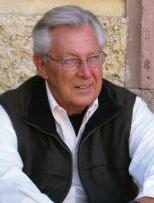
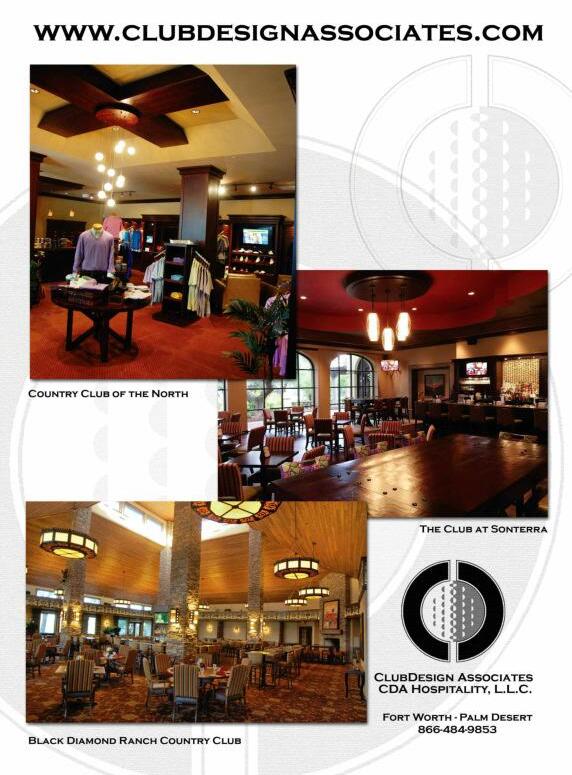


Lynne LaFOnD DeLuCa
yes, the beginning of the year craziness has begun, because for the Catering departments, this marks one of the busiest times of the year.
They’re knee deep in engagement season, corporate events year long and planning for the launch of springtime events.
And the devil is in the details and that includes both the planning and the execution. Before events, the catering directors are, most probably, solely responsible for their success – booking the event, getting the contract signed, securing the deposit, setting the appointments to plan the menus, ordering specialty items or services from your creative partners, preparing the BEOs, and creating the floorplans.
Then comes the magic of making it all happen. . . and that’s NOT about one person’s responsibility. It’s all about the team.
Your food and beverage operations team, including your culinary team, is now responsible for following those plans and delivering the dream, so take great care to ensure that they have all the tools and information they need.
Weekly F&B meetings are a great place to raise any challenges the team may foresee with the set up, timing or inventory issues. How these meetings are conducted and the attention placed on the details will elevate the importance of each of the many details that together will create a great event.
Make sure that the communication between your catering director, chef and F&B director is stellar, ensuring that how they are communicating the information (via the BEOs and updates) makes sense to them and their teams so there is no confusion.
Extra emphasis on the importance of following the BEO and floorplan to the very last detail is always a smart idea. Encourage them to ask “seemingly” simple questions during the F&B meeting to make sure everyone is “thinking smart” – things like, “We have two dinner events happening with the meal periods one
hour apart and both of them have food stations with paired cocktails at each station. How is our inventory for glassware?”
Or, “Has maintenance been made aware of the fact that the restrooms should be checked every hour?” Or, “Let’s just confirm who is ordering rentals and specialty linens…”, etc.
Things that may have been challenges in the past can be discussed in advance using this more positive method of communication. You can also use these meetings to talk about the event afterward and determine what could have been done better and what was so great about it in order to learn from those mistakes and victories.
A great team is not built overnight. It is a process, involving the different skills of each individual, varying personalities, mutual respect and leadership, which involves bringing out the best in each employee, allowing them to learn, contribute and feel the satisfaction of accomplishment.
It is about encouraging communication and collaboration. It is also contagious, so remember that in leading a team, you are also teaching them to be leaders themselves.
The desire to “win” as a team, to learn from each other and make each other better along the way truly changes lives. Not only for those on the team, but for the events hosts and guests as well. We always say there are no “do-overs” in events.
We have one chance to plan and execute the perfect event for our members and guests and this starts well before catering director walks the event host on a tour of the club. It starts with the training and collaboration of a great team. BR
Lynne LaFond DeLuca is the executive director of the Association of Club Catering Professionals and a private club industry consultant. You can reach Lynne at Lynne@TheACCP.com, or visit the website www.TheACCP.com.


by anDrea CurthOys
To see a world in a grain of sand
And Heaven in a wild flower
To hold infinity in the palm of your hand And eternity in an hour. – William Blake
Have you ever raised your hands in the air and thrown your head back and on the count of three, laughed whole-heartedly with 500 others? Have you ever made a fist and shaken it high above your head while repeating the “Intellectual Property Cheer”?
Well if you’ve ever listened to a presentation by Gregg Patterson, you most likely have. Why does he do it? What’s it for? What is it about Gregg that makes people want to shout out loud and leave a room pumped up to make a difference in the club world?
I can tell you what it is and why this one man, this club manager, this family man, this friend has been so successful and has affected tens of thousands of club professionals to build better careers and more meaningful lives.
I get asked again and again, “Is he like that all the time?” My standard answer is… ”What do you think?”
When Gregg speaks, he speaks from the head. His breadth of knowledge, his intellect and his thoughtfulness are the backbones to his presentations. His words ring true in many people’s ears and his candid and honest outlook on life are refreshing.
When Gregg speaks, he speaks from his heart. His passion and enthusiasm are unmatched. His other-oriented attitude of wanting to help people is evident without a doubt. When Gregg speaks, he speaks from his soul. It’s the essence of who he is.
“We are in the Happiness Business!” Life is too short not to be, right? This is one of Gregg’s most famous mottos. He means it and lives by it. Gregg has spent the last 34 years providing goods, services and programs to his members at The Beach Club that have displayed just how much his team and he are truly in the Happiness Business.
CONTINUED PAGE 78
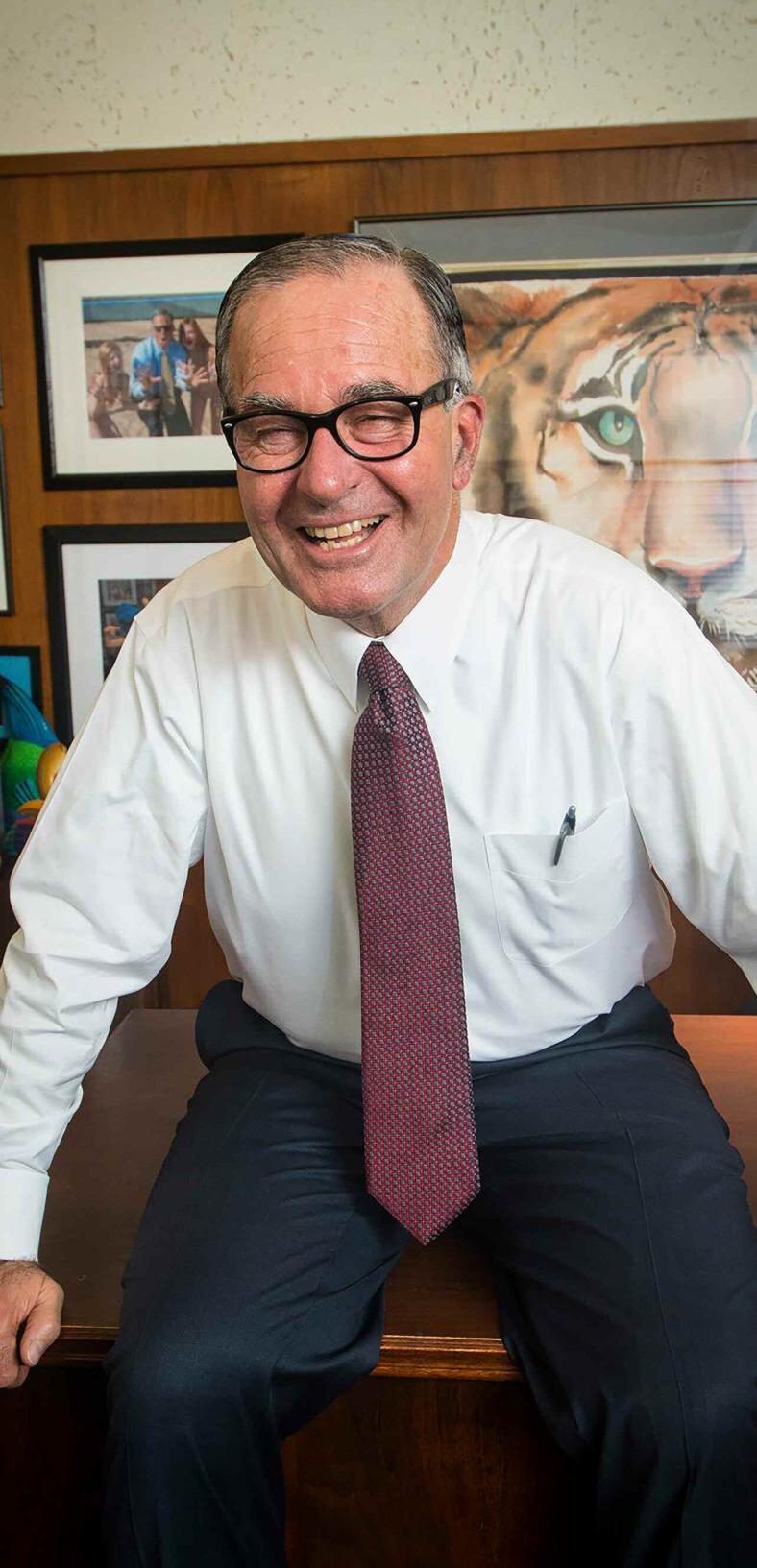
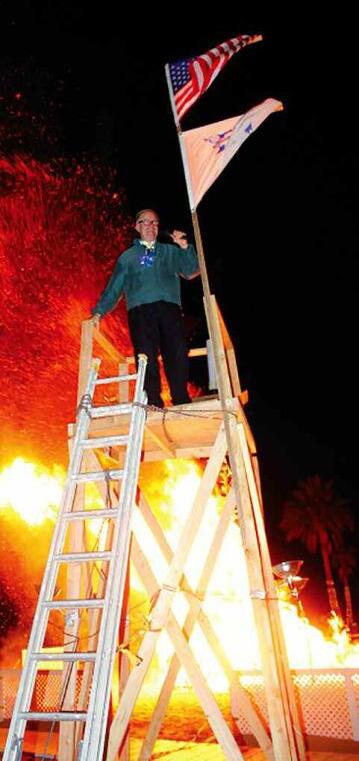
FROM PAGE 76
“The Extravagannnnnzzzzaaa!” This is an awesome part of being in the Happiness Business. Whether it’s calling BINGO numbers, throwing prize-filled tennis balls and water balloons off the roof, burning Christmas trees on the beach or playing Santa for a cumulative 60 hours in eight days – Gregg generates excitement and energy amongst his membership.
We as club professionals have heard much about the extravaganza experience. Gregg has influenced hundreds of club managers to take regular, plain, ordinary goings-on and make them ‘wow’ experiences that create memories, lasting a lifetime. Playing Santa is something Gregg encourages club managers to do. Many won’t. Why not? Too embarrassing? Too much effort? Why so? Because it gives your members the Buzz, the Love and the Glow
“The Buzz, the Love and the Glow.” The Buzz. That’s the energy transfer that your members get from you, the enthused manager.
The Love. That’s the feeling we, as club professionals, give to our members through developing strong member-member and member-staff relationships.
The Glow. The Glow comes from putting 100 percent of your efforts into giving of yourself to your club members, to your spouses, to your families and to your friends.
Gregg has given the industry the Buzz, the Love and the Glow with his contributions to monthly publications, teaching at a well-known hospitality college, speaking at CMAA World Conferences, leading BMI programs and serving as a mentor to many people, young and old.
“It’s all about Community and Relationships.” That’s it. That’s all. Period. The club industry and our jobs as club professionals are to create community and relationships.
How many times have you heard Gregg say this? He’s right. The point is to develop a cohesive culture that stimulates the members’ desires to make personal connections with one another. Gregg has been teaching us this for years now and those of us who understand this are having the time of our lives working at our clubs, providing experiences for our members that unify the community into one big happy family.
“We are Family.” This Pointers Sisters’ song is Gregg’s favorite to play at the end of every large event to signify what The Beach Club represents. Gregg has also brought together many of us working in clubs only, to form a tight knit family of club professionals who support each other’s successes and failures.
Gregg Patterson is being recognized as the 2015 recipient of BoardRoom’s Award of Dedication for his service to the private club industry.
Patterson, who retired from the Beach Club of Santa Monica at the end of January after an illustrious general manager’s career, is moving on!
“We give the BoardRoom Award of Dedication to those who have contributed considerable time and talent to the club industry, and that certainly defines Gregg Patterson,” professed John Fornaro, publisher of BoardRoom magazine.
“What Gregg has done over the years has been a significant benefit to everyone in the industry from management to the members of clubs themselves, and of course club general managers. He’s had an outstanding career as a general manager and although he’s retiring from the Beach Club, there’s no question in my mind he will continue to contribute to the private club industry around the world in many other ways.”
A passionate man, Patterson has devoted his life to club service. Yet he’s found the time to indulge in his own ‘passions’…reading, writing (he’s been a regular contributor to Boardroom magazine), bicycle touring around the world, often with his wife of 35 years, Elaine; playing paddle tennis, flying his airplane, and as a licensed minister, performing wedding and funeral services for family and friends.
Gregg Patterson’s a ‘rare find.’He’s been the general manager at The Beach Club since 1982 – 34 years, longevity that’s a rarity in the club industry – where he worked with members, boards and committees to enhance the value and reputation of The Beach Club in the Los Angeles community.
Gregg’s interests and responsibilities are widespread. He is a senior associate with Kapoor and Kapoor Hospitality Consultants, where he teaches certification courses in
leadership and marketing for the Asian American Hotel Owners Association (AAHOA).
He served as an adjunct professor in the Collins School of Hospitality Management at Cal Poly University, Pomona for 14 years, and currently teaches at various Business Management Institute programs and is a Visiting Professor at two universities in Gujarat, India.
Building on his experience as a club manager, Gregg has been a featured presenter at various club management seminars, assistant manager conferences and hospitality forums around the world, including Canada, Ireland, England, Spain, France, Denmark, Scotland, Germany, Hungary, Indonesia, China, Thailand, Singapore, Korea, Sweden, Germany, Norway, the Netherlands, France and Colombia. He has conducted management development programs on a variety of topics for many organizations.
Patterson was awarded the 2002 Gary Player Private Club Educator of the Year Award by BoardRoom magazine, the Club Executive of the Year by the Club Management Association of America in 2015 and the Lifetime Achievement Award by the Asian Pacific Hospitality Summit in 2015.
Gregg earned an M.P.S. degree from Cornell University School of Hotel Administration and a B.A. in British Imperial History from Colgate University, serves on the board of trustees at Maine Central Institute in Pittsfield, Maine and has been active in the Southern California Chapter of the Club Managers Association of America.
His retirement from The Beach Club may signal the end of his active career as a club manager, but Gregg Patterson isn’t going off quietly into retirement. He’ll continue his club work around the world, while indulging in his ‘own passions.’
As Gregg enthuses: Life is good – and endlessly entertaining!!!
Once a Chautauquan, always a Chautauquan. If you’ve ever participated in this pre-conference workshop, “The Bicycle Chautauqua” where you ride and reflect on the club world, you know that it is a profound experience. What exactly goes on during this workshop?
Aside from riding 20-40 miles a day, each day of the three-day workshop, a topic is given to think about during the ride and to discuss after the ride at the “Budweiser Debrief.”
Together this sort of mastermind group, led by Gregg, shares their thoughts and experiences to help and learn from one another. The Bike Chautauqua that has grown in popularity each time it is held at the CMAA World Conference has become a true “tribal” experience.
“Tribal Magic.” This is the activation of the philosophies we’ve learned that help to better our careers and to make our clubs vibrant, thriving communities. Tribal Magic is an attitude of “anything’s possible.”
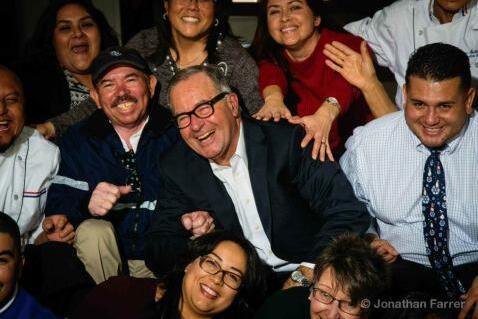
We must explore and venture out of the box. We need to be creative and adventuresome. Tribal Magic is the connection that we have to one another that allows us to support each other’s professional needs and personal emotions that come from working in the club industry.
Tribal Magic is Gregg’s speaking and writing business that he will continue to build after leaving The Beach Club. He will continue to spread the Gospel of Clubdom.
There you have it. The Man. The Myth. The Legend.
Gregg has influenced the club industry like few others. He has given his heart to the industry and to those who work hard in it. He has help thousands find their way through tragic times and joyous ones alike.
He’s helped shape the position of club manager into one of dignity and honor. Gregg is a dedicated husband to his lovely wife Elaine who has put up with the late nights, long hours and missing weekends and holidays.
Gregg is a friend to many and to me. He has been my life mentor for the past 24 years that I’ve been at The Beach Club. He has taught me all of the above and more. He has taught me to enjoy life to the fullest and that it is possible to do so while working in the club industry. He has encouraged me and hundreds others to be true to ourselves, to have courage and to take on life with eyes wide open and a heart even wider.
To answer your question, “Is he like that all the time?” The truth is, whether he’s quiet, exuberant, contemplative or on-stage, he IS like that all the time.
Stand Up! Stand Up! Put your hands in the air! Lean your head back! And on the count of three, laugh! One… Two… Three – Ha Ha Ha Ha! BR
Andrea Curthoys, a long time colleague and friend of Gregg Patterson is assistant manager at the Beach Club of Santa Monica.
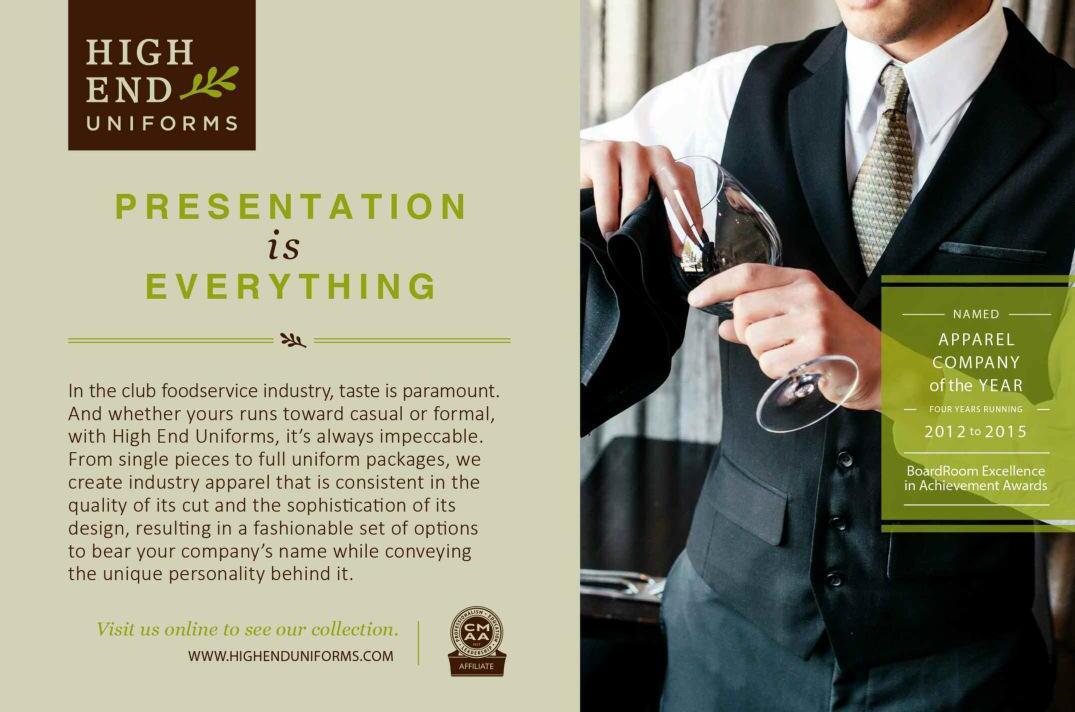
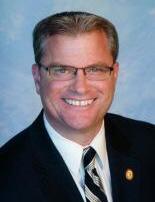
While there is no one size fits all version of a wine committee, here is a brief guideline that may help you create one for your club.
Forgive a horrible pun, because nobody wants another ‘whine’ committee, but its homonym counterpart – THE wine committee –can prove very useful.
A properly put together wine committee has many advantages. It includes a member-based sense of ownership, and is influential in establishing or improving a wine program that brings joy to the members and generates revenue for the club.
Individual committee participants ideally serve as ambassadors who promote wine-themed events including festivals, wine dinners and other special occasions. Committee appointees also are useful in taking the palate-pulse of the membership – perhaps more in touch with in-speak amongst their peers than that of club management.
Yet, the fear of every club manager reading this is the transfer of too much power from club leadership to a small group of members, each with their own very strong opinion on how much to charge for the house cabernet sauvignon served by the glass. It is therefore important to know where you want to go before you try and get there.
Have pre-established inventory levels and budgetary limits, as well as desired cost/profit margins for a la carte, banquet and club event wine sales. Build your committee upon this foundation.
Your first inclination for committee construction may be to find participants who have the most wine knowledge about wine regions, styles and popular labels. Instead, consider focusing on a group of passionate individuals across many demographics including age, gender, membership status, club utilization and general wine acumen.
With the latter, this particular demographic should span from novice to relatively well informed. The most important attribute you want in a participant is passion, not knowledge.
As one of my most valued mentors taught me long ago, “People don’t care how much you
know, they want to know how much you care.” Always remember that wine is personal. People constantly say that they are not wine connoisseurs, but that’s not true. We are all connoisseurs of what we like – because of this we’re never wrong.
Every committee member’s palate is as important and relevant as the next. So, if you effectively create a committee that serves as a microcosm of the larger membership palate, you will have succeeded in creating a team with the best chance of facilitating a wine program that is most representative of potential wine consumers.
This approach will also negate the likely formation of ‘cliques’ where only privileged individuals get to participate in what undoubtedly will be your club’s most popular committee.
With your newly formed group of purple tongues, assign a committee chairperson to serve as liaison to the housing committee and/or board of directors and hold meetings once per month. Your wine by the glass program could be an area of immediate influence. Conduct blind tastings of wines donated by wineries/wine distributors who wish to have representation on your bythe-glass list. Any wine chosen by the committee should have a corresponding notation that designates it as a wine committee selection. This can be accomplished with a ‘WC.’As the membership builds confidence in the committee and its respective offerings, a more elaborate base of likely wine purchases from the members should continue to grow. This is particularly useful when a sommelier is not available on the floor.
When passion translates to actions that result in improvement, everyone wins. BR
Steven Poe is a master sommelier and currently works as beverage director at Big Canyon Country Club, Newport Beach, CA. He can be reached via email:spoe@bigcanyoncc.org



This is our third annual roundup of Technology vendor news and you’ll find brief reviews of 24 club technology vendors participating in the 2016 CMAA Business expo in San Diego.
Each review includes a snapshot of what the company offers, along with a preview of new technologies to be introduced at the Expo. We hope you find these reviews helpful in planning your visit to this year’s Expo!
Buz Software – Booth 447 Integrated suite of club management software (membership administration and billing, accounting, F&B and retail POS, time and attendance and data mining), plus tee time/court reservations and club web site.
NEW – Responsive websites - enable members/visitors to enjoy the club’s website from any device - computer, tablet or smartphone. In addition, Buz will be featuring its new program registration system for clubs offering summer activities for families.
Cedar Creek Systems – Booth 939 Cloud based Procure-to-Pay and Inventory Management platform for country clubs. Consolidates a club’s suppliers, departments and budgets into one online marketplace that manages the procurement process from the point-of- purchase through payment. Automates business processes, creating efficiencies and controls while reducing food, beverage and operational costs.
NEW – Capital budget management module provides online project and budget creation which helps clubs manage and control capital improvements. Provides higher transparency and accountability regarding capital expenditures and renovations.
CorTec/ChefTec – Booth 220 Software for club foodservice operations, including inventory management, recipe and menu costing, purchasing and ordering, waste tracking, production management, nutritional analysis, and event management. Mobile solutions technology available to streamline inventory taking, ordering, receiving and requisitioning. Interfaces with POS systems, club management software, accounting software and food vendors. NEW – Event management functionality, providing the capability
to create menus for specific events and quickly alter them as needed, generate detailed quotes and final invoices, manage client and venue information, and cost out non-food items and staffing in addition to food costs.
Clear Sky Software – Booth 746 Back office food and beverage inventory management systems to control inventory, reduce labor, lower costs and increase profits. Complete inventory control solution that includes interfaces to club management software systems, bar code scanning, touch screen kiosks, training and support.
NEW – Now available as a hosted solution. All inventory applications including food and beverage, housekeeping, tableware, and retail/golf pro shop are now available as a hosted solution.
Club Benchmarking – Booth 544 Online business intelligence tool developed specifically for the club industry. Provides comprehensive insight into a club’s financial and operational performance and a full suite of filters for peerset benchmarking. NEW – Financial forecasting feature for predictive management capability and an executive dashboard report that delivers 15 KPIs and associated benchmarks.
Clubessential – Booth 833 Unified suite of products including accounting and POS, CRM and data warehouse, digital marketing, public and private websites, booking engines as well as a banquet/catering module. NEW – A cloudbased banquet and catering module - a “commercially robust” product that has its roots in some of the busiest venues across the nation. An affordable option to use the same product as the greater hospitality market.
ClubPay – Booth 419 Club-centric suite of outsourced applications including payroll, integrated HR management, time and attendance, biometric time clocks, compliance tools and online applicant tracking. Handles tips, multiple departments and pay rates. ACA compliant with benefit tracking tools. NEW – Automated reports to meet IRS requirements.
Club Software, inc. – Booth 413 integrated suite of club management software modules for membership, accounting, POS, reservations, website,
etc. hosted in the Cloud or on premise. NEW – Website software integrated with the club back office package. Also a new Cloud POS designed for any tablet the club prefers. With electronic signature capture and immediate upload of ticket (with the signature) to the club’s website.
Clubster – Booth 713 Full-featured private social media platform, designed exclusively for private clubs. Cloudbased with native apps for iPhone and Android. Customized social platform with push notifications, upload and share documents, club news, events and promotions, private messaging and more.
Clubsystems Group – Booth 419 Club management software, services and support including fully integrated back office and POS software, websites, email marketing, and mobile solutions. NEW – Seamless AP integration to CSI globalVCard payment processing, providing easy management of electronic payments to vendors, while generating approximately one percent monthly cash back rewards on every payment made.
ClubTec – Booth 713 Enterprise club management software for membership, accounting, POS, reservations, website design and hosting. NEW – F&B POS features include cascading menus with more specific menu item grouping, new color coded menu buttons for easier visual display and identification of “like” item types, a simplified modifier correction process and streamlined inventory management.
Course Driver – Booth 128 Provides a custom branded golf app for iPhone and Android featuring GPS, food & beverage ordering, scorekeeping, handicap tracking, live satellite weather, events calendar and more. Not just a member app, it also offers a marketing system for prospects too. NEW – Geo-marketing technology, which allows custom offers and messages to display at key areas of interest around your club.
expert Club Software – Booth 107 Complete cloud based club management package, including G/L, A/P, A/R, member billing, F&B, golf and racquets pro shop, spa and retail shop, hotel reservations, catering, time keeping, reservations for dining, court, tee, and lessons, with web and mobile site. NEW – Equipment tracking in pro shop POS (Clubs/Racquets), document retention, online departmental payroll approval, POS favorites and order history, member mobile ordering, ACH payments.
FooD-TRAK – Booth 615 Food and beverage inventory, management, and procurement system. Focus on implementation, training and on-site transitioning from procurement to inventory control to culinary tools. NEW – More advancements to mobility tool. Used instead of, or in addition to laser scanning mobile computers, club clients can use popular and inexpensive pad devices such as Apple
iPad and Android Samsung Galaxy to collect and enter their data right on the spot. Contributes to labor savings and improves overall accuracy.
ForeTees – Booth 611 Full suite of club management software, using responsive web design technologies, delivers website solutions and online reservation systems including tee times, courts, dining and more, all complemented by a native mobile app. NEW – ForeTees brings the power of Salesforce.com to the industry with a new cloud-based back office solution – Club62. This new product offers membership, accounting and POS services that are fully integrated with the existing family of ForeTees online services. (ForeTees acquired Club62 in October 2015.)
Gatekeeper Business Solutions - Booth 331 24/7 access to cloud-based system for clubs with modules for time and attendance, accrual management, scheduling, full service in-house payroll with G/L interface, or option to outsource payroll. Time data collection includes biometric fingerprint clocks, hand scan terminals, prox card readers and web clock for desktop, tablet and smart phones. NEW –Eligibility, affordability and IRS filing and reporting for compliance with the Affordable Care Act.
Groupvalet – Booth 641 (No, they don’t park cars.) Cloudbased group and activity management system designed to increase member awareness, engagement and participation. Includes group management, online booking calendars and integrated marketing features for clubs. Can be used for golf (which integrates with GHIN and GolfNet), tennis, pickleball, cards, committee and board meetings, tournaments and general marketing. Members can create their own groups and invite other members. NEW – Bookings can be made or accessed via the mobile app and clubs can run ad campaigns within the notices to member groups.
iBS Club Management Software - Booth 202 Integrated club management solutions (food and beverage, banquets and events, online dining reservations, accounting, membership, and websites). NEW – Refined accounting module. Poolside, cloud-based point of sale. Online dining reservations integrated into the point of sale.
Jonas Club Software – Booth 419 Club management and online solutions software, services and support. Fully integrated back office and POS software applications include accounting, point of sale, membership management, event & activity booking, website & email marketing platform. NEW – Mobile App gives clubs the ability to offer members their own club branded app directly through the Apple and Android stores. The app integrates directly to Jonas Club Software allowing members to book tee times, view statements, register for events and even receive push notifications from the club directly on their mobile device.

The term “Cloud” obviously wasn’t branded by a salesperson so the uphill battle to educate people on exactly what it is continues.
Fortunately, services like iCloud, Google Docs and Dropbox have increased concept awareness on a personal level but somehow this hasn’t yet translated to private clubs embracing the idea on an industrywide scale.
Many clubs have their own app, use IP phones and one would assume nearly all benefit from online banking – services accessed via the Internet, and therefore cloud-based. Until recently clubs operated solely on the premisebased model (onsite server), but that’s changing.
There are various types of cloud-based services. The two types clubs can benefit from most are Software-as-a-Service (SaaS), (i.e. QuickBooks Online or Salesforce.com) and Infrastructure-as-a-Service (IaaS), which provides clubs access to the physical hardware or virtual machines along with managed services such as security, backups, client support, etc.
Has your IT provider discussed cloud-based solutions with you? Have they explained how these offerings can potentially improve upon your already existing process?
Some cloud-based services disrupt the local IT provider model so they’re resistant to present anything that could limit the amount of hardware, software or time they can sell. This is understandable but unfortunate for the club.
The hosted model (IaaS) eliminates large and unexpected IT capital expenses (i.e. servers) so the pop the local provider generally receives every 4-5 years vanishes. Along with it, there’s less to license, backup or maintain moving forward.
Keep in mind you will always have technology issues and many of them will require onsite work to repair or replace something.
Having a strategy in place is key, so you can react quickly reducing the amount of lost productivity, cost and ultimate impact on the club and its membership.
Of course, there are pros and cons to both and neither is ideal for all. Let’s take a closer look at several:
Pros of onsite servers:
1. Physical control of your server.
2. Private data is in-house without potential third-party access to your information.
3. No reliance on the Internet to access your system.
Cons of onsite servers:
1. Requires a capital investment in hardware and infrastructure.
2. Requires dedicated IT support as well as space in a server room or coat closet.
3. Susceptible to data loss during a local disaster or theft.
4. No uptime guarantee.
Pros of cloud-based servers:
1. No onsite server or large unexpected IT capital expenses.
2. Easily budget as billing is generally based on usage, similar to a utility.
3. Connect from anywhere, with any device and at any time with an Internet connection.
4. Data can be backed up in a secure datacenter on a regular basis.
Cons of cloud based servers:
1. The user experience is bound by the speed of their Internet connection.
2. Depending on the service provider, third party providers could have access to your data.
3. Without Internet access, there is no access to your systems.
A solid Internet connection with good speeds is a must for cloud-based services. A backup connection is also recommended. Whether you have an onsite server or one in the cloud, improving your connectivity is something all clubs should be shoring up, because you will only become more reliant on it. Now is the perfect time to review your clubs technology plan and understand how you can increase security, better protect your members, reduce costs and increase productivity. BR
Boyd Carr is director of sales with Fortessa Hosting, Inc., a cloud-based hosting company focused on helping clubs reduce their exposure to IT. Boyd can be reached at bcarr@fortessahosting.com or (949) 284-8808.
MembersFirst – Booth 326 Website design (SEO, conversion optimization, systems integration), with online tools to power content management, email marketing, social networking, mobile marketing, reservations (dining, tee times, lessons, camp, etc.) and marketing campaigns (newsletters, social media, adwords, and video production).
NEW – Now a member of the Jonas family of companies. Will be sharing more details on integrations with the Jonas platforms. Also, improvements to the tee sheet, content management system, and overall reporting, with new professional services focused on helping clubs attract new members through social media, search marketing, and use of the latest inbound-marketing tools and best practices.
ResortSuite – Booth 807 A truly integrated club solution offering a full
suite of best of breed modules. Typically deployed in clubs at activitybased hotels/resorts and complex private clubs. Modular offerings for membership, spa, golf, F&B, rooms, catering, retail and ski - can be deployed together or integrate tightly with other hospitality solutions – with true hotel DNA. NEW – Online activity scheduler for members to book golf lessons, tee times, classes, services and activities.
Signera – Booth 803 Offers digital signage for in-club communication. Custom designs, Showcase Elite framed monitors and integration with most club software for one-entry dispersion of information. NEW – POD sign designed for meeting rooms, menu boards, community channels and light signage needs. Additionally new offsign applications (i.e. integration with club website and web-enabled workout equipment) will be displayed.
Booth 801 Integrated club management software solutions (membership, accounting, POS, reservations, website, marketing, lodging, data mining, etc.). Also interfaces with third party solutions for a “best-of-breed” approach, if desired. NEW – TAI Evolution: One code set that works on a PC, Mac, Tablet, Web, Smart Phone, etc. Browser-based, cloud ready, SaaS ready.
uncorkd – Booth 646 iPad beverage menus. Intuitive and easy to usecan be a dynamic showcase for wine, spirit, and beverage selections. Promote events on club’s menu, utilize beverage database to educate members and update menus in realtime to streamline beverage management. NEW – Mobile inventory, detailed beverage analytics and automated vendor ordering to save time and help track orders. BR


Acronyms are labels.
They’re sometimes thought of as a lazy marketer’s way out because they give businesses an excuse to put a lot of consumers into a single box. But let’s be honest here. Acronyms are also kind of cute and can be fun to use. Think about it.
There are:
DINKS (duel income, no kids) SINKS (single income, no kids), and HENRYS (High earners, not rich yet).
Then there are SENILES (self-employed, no insurance, low expectations), TWERPS (tightwad with early retirement plans), NERDS (Nice earnings, ridiculous disciplined) and LOHAS (Lifestyles of Health and Sustainability).
i’m a firm believer that every touch point a member has with their club is an opportunity for the club to collect a data point to better understand and segment its membership. For instance, if Mrs. x buys a tommy bahama golf shirt for her husband’s birthday, having that data point in the club’s computer system gives the pro shop a great marketing message the next time a new shipment of shirts comes in.
Clubs use these acronyms too. Some have even created “customized” acronyms for segments of their own members. We have good friends who spend winters at a gated golf course community in the Southwest. According to them, the local club nickname for older “snowbirds” is Q-tips because they have white hair and wear white tennis shoes. And, even though they are not acronyms, the past-65 market is often categorized as seniors, elderly, older adults or retirees.
But do those in the acronym box like being there? Not from where I sit. The vast majority of today’s consumers don’t like to be pigeonholed. They like to be thought of as individuals, as unique, as one-of-a-kind within the market segment.
This is why customization or personalization are two leading consumer trends – across all market segments. This includes your members. While they may fit within a given acronym label, they resist being classified because they always assume that anyone who is using the term is definitely not in that group, don’t really understand them, and is trying to sell them something.
Many people think that market segmentation began with the advent of the Internet, or at least with the advent of television. In reality, you have to go all the way back to Aristotle’s Ancient Greece to witness the birth of dividing consumers along one characteristic or another.
And if we fast forward to the Roaring 20s, the long-time President, chairman, and CEO of General Motors Corporation, Alfred Pritchard Sloan, Jr., announced that GM would build a car “for every purse and purpose, with a different brand of car for each segment of the market.”
Market segmentation had arrived.
With the arrival of high-powered computers and big data, businesses from Amazon to Zara have jumped onto the segmentation bandwagon with gusto. Using sophisticated algorithms, they are now able to quickly and precisely define and subdivide large consumer groups into identifiable slices that have similar needs, wants, or expectations. Their goal, just like Aristotle’s, is to design a marketing mix that precisely hits the hot buttons of these targeted consumers.
Do you KnoW youR MeMBeRS?
But what about your club? I doubt that big data and high-powered statistics are part of your daily operations. But the more information you can gather about each member, the more cost-efficient you can be in developing programs/events and promoting them to the right target audience.
I’m a firm believer that every touch point a member has with their club is an opportunity for the club to collect a data point to better understand and segment its membership. For instance, if Mrs. X buys a Tommy Bahama golf shirt for her husband’s birthday, having that data point in the club’s computer system gives the pro shop a great marketing message the next time a new shipment of shirts comes in.
And there are probably a lot of Mrs. Xs out there. Think about the “customized” promotions you get from Groupon or your favorite retail outlet.
There are myriad ways that you might segment your membership. But, basically, there are three ways of identifying specific member groups with common characteristics. The most common, of course, is by demographic traits. These are quantitative individualities such as age, gender, family status, where they live, and tenure as a club member. You probably have all this information in your data bank. The question is if and how you are using it.
The next way is by psychographics. These are the qualitative attributes of your membership and are commonly referred to by the acronym IAO –interests, attitudes, and opinions.
Are you members more old school or Avant-guard? Are they formal or casual? What about adventurous or not? These traits are somewhat more difficult to measure, but you can get a good handle on them through surveys and focus groups. You just have to be sure that the questionnaire designer or group moderator is skilled in drawing out the members’ IAOs.
The third segmentation method –purchase behaviors – is also quantitative and can use information already in your data bank. You know who your active members are, how often they come to the club, how much they spend and on what.
Keeping up to date, accurate data of members and how they use their club allows you to segment those who come to given events, buys certain
naturally, no member characteristic exists in isolation. they exist in various profiles which the marketing industry calls lifestyle segments. this brings us back to the need for every club to gather and input as many data points about each member as possible.
products/services ((Here is where Mrs. X fits in.), and spends at various levels. You will then be able to target segments with future similar offers.
Naturally, no member characteristic exists in isolation. They exist in various profiles which the marketing industry calls lifestyle segments. This brings us back to the need for every club to gather and input as many data points about each member as possible.
The more you can classify specific member segments most likely to be interested in what your club has to offer, the more cost-effective your marketing dollars will be. And don’t forget that having this information
can be used to “clone” your membership by identifying and promoting to potential members who share similar traits and characteristics. In other words, knowing your DINKS, SINKS, and HENRYS will help you keep your membership pipeline filled.
Your Bottom line will thank you. BR
Bonnie J. Knutson Ph.D. is a people watcher. A professor in The School of Hospitality Business, Broad College of Business, Michigan State University, Dr. Knutson is a member of the Country Club of Lansing and the Michigan Athletic Club. She can be reached via e-mail: drbonnie@msu.edu


sPeCiaL tO bOarDrOOM MaGazine
These kids have been cooking up a storm!
The goal at The Landings Club, a BoardRoom Distinguished Emerald Club of the World in Savannah, GA, is to provide first-class service and unique programming opportunities to members of all ages; this includes a variety of youth programs.
Inspired by the plethora of talented chefs working on the island willing and able to connect with children, The Landings Club Senior Executive Chef Matt Roher created a Junior Chef Camp for ages 7-12.
“All 20 spots were claimed within two weeks. Because of growing buzz and requests for enrollment, we added another week of Junior Chef Camp later in the summer, which also sold out,” explained Gunnard Cunningham, director of club operations at The Landings Club.
“By using our own chefs to lead the Junior Chef Camp, we delivered a rare behind-the-scenes culinary experience in a real, working kitchen,” explained Roher. “We have access to six executive-level chefs in specialty areas including sushi and pastry. Our club had all the components of an engaging, thoughtful program in place; our chefs simply needed to collaborate and execute.”
The four-day summer program attracted 20 students per session; the goal was engaging as many junior chefs as possible while maintaining an atmosphere intimate enough for students to learn, ask questions and get hands-on experience.
During the camp, students were given tours for a rare glimpse of kitchen operations. “We covered all the kitchen basics,” said Roher, “including safety and station overviews, the walk-in freezers (always a big hit) and observed our a la carte breakfast team in full swing.”
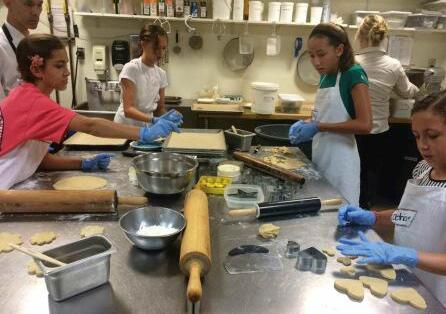

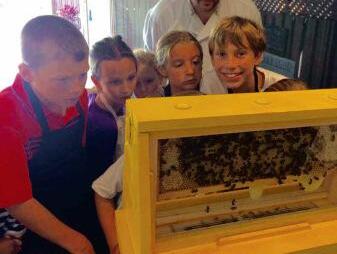

“We provided various cooking demos including whole fish fabrication, making fresh caramels and baking hands-on simple breads.” All young chefs returned home with culinary treats they created to share with their families.
The charge for camp was $65 per student, and the young culinarians prepared an extensive meal for their parents at a chef banquet held the last day.
Steven Freund, The Landings Club Executive Director added, “The inaugural Junior Chef Camp, created and hosted by our culinary team, was a tremendous success. The camp inspired our youngest members with unprecedented access to a variety of chefs who shared their knowledge and passion in a working kitchen; plus, they made new friends and received a rich experience right here at our club.”
The Junior Chef Camp was so successful, in fact, that The Landings Club is already planning this summer’s camps. BR



“if you hide it, they will come.”
And with those catch words enthusiasts at The Reserve Club, a BoardRoom Distinguished Emerald Club of the World in Indian Wells, CA are off on a world-wide treasure hunt called geocaching.
A road trip through South Dakota and a stop at Cabela’s, triggered Lisa Masters love for geocaching. And for the club’s wellness director and LPGA head golf professional, it became a question of how to introduce this phenomenon to The Reserve membership.


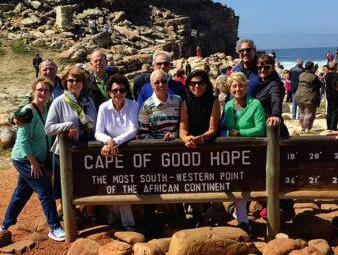
Geocaching started in 2002 with GPS enthusiasts in Seattle, and today it’s grown to include thousands of geocachers and more than 2.5 million active caches (hides) around the world.
For many, the journey begins with a sense of adventure, love and respect for nature and of course a few navigation tools. Starting with the free geocaching app, a pen for logging the finds, a few treasures to share and the book The Complete IDIOT’s Guide to Geocaching, Masters found her first cache within 350 feet of the Cabela’s front door.
With her first success, Masters set out to learn as much as she could about geocaching. “Where are geocaches hidden? Are there different types? How do I log my find? How do I hide a geocache? The excitement of this new adventure was consuming,” she related.
Masters asked the question: ”How do I get The Reserve members involved? She solved that by adding geocaching to The Reserve H.A.W.K. Wellness Program. Already members in the first half of their 2015-16 hiking season have logged over 40 miles of hiking, tracking and experiencing their FTF (First Time Find).
“In just a few short months, we have had more than 50 members participate in this outdoor, adventure activity. The wellness program also includes geocaching workshops. This allow participants to become familiar with geocaching rules, learn how to use a navigation device – a hand held GPS or and app on a SmartPhone – as well as providing an opportunity to experience geocaching with a group of enthusiasts, “ Masters added.
“My most fun memory was taking a ‘travel bug’, a trackable, physical geocaching game piece, to South Africa on a Reserve Club golf trip and safari, logging it in South Africa and returning it back to America where I dropped it in a cache on top of a mountain in Indian Wells.
“To this day, I can check on that ‘travel bug’ and see where it is and where it has been. In fact, geocaching has been one of the most rewarding experiences we have shared at The Reserve Club,” Masters suggested enthusiastically.
So if your club is looking for wellness and fitness activities, go to geocaching.com for more information, download the geocaching app, and get your members involved. Just like Lisa Master has done at The Reserve Club. BR

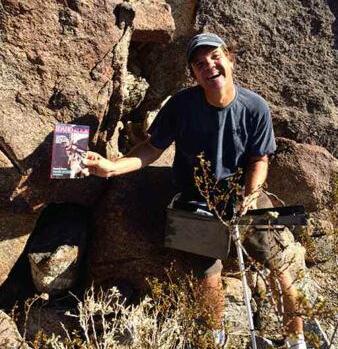

The Clubs Managers Association of America Ceo Jeff Morgan has just completed his first year on the job. Here’s his perspective on the industry in 2016.
What are the biggest challenges you see for club management in 2016?
Our members and the clubs they manage are facing increased regulation like the proposed changes to the Department of Labor overtime rules and the expansion of the waters of the US. Beyond these external challenges, our CMAA members have indicated that hiring and retaining staff is their biggest challenge.
Millennials are now the largest segment in the U.S. workforce. What effect do you think this will have on clubs?

CMAA members and the clubs they manage are being challenged to adapt to this new age of a multi-generational membership and workforce. In addition to the Millennials, we have Generation Z – those born in the 1990s –who will soon be on our hiring horizons.
With the variety of multigenerational memberships and employees in today’s system, clubs can no longer abide by traditional rules of leadership and management. Like many organizations and companies do, clubs can achieve a real strategic advantage by embracing the diversity among generations to create a flexible environment that values all people and keeps them engaged, involved and motivated, without fear of being judged, “fixed” or changed.
How is CMAA helping its members to address this challenge?
To arm our members, CMAA is focusing on this issue at our upcoming World Conference on Club Management in San Diego, CA, in February. Features will include generational expert and
Millennial Jason Dorsey, a TED-style talk led by Millennial members in a session where the members will choose the speakers. Further, CMAA will host a dedicated networking mixer for emerging CMAA leaders under age 35 on Wednesday, February 24. What is on the horizon for CMAA in 2016?
After conference, CMAA will be releasing a new strategic plan, capitalizing on a year of data gathering and member feedback. This will include expanded industry research. CMAA has hired an in-house researcher who will focus on club specific topics and conduct continuous research and publish CMAA reports regularly throughout the year. This effort will soon be joined with a national committee of member volunteers to assist in targeting our research projects. I am very excited about this initiative and think there is a great deal of value we can provide to CMAA members as our research competency grows.
Further, CMAA will expand its competency based certificate programs. Our first certificate program launched in April 2015 on the topic of Accounting and Financial Management. Early adopters have been helping us produce content in line with manager’s needs.
In 2016, we will release an additional certificate with the goal to develop an online certificate educational program for each of our 10 competency areas over the next several years. This is a big undertaking, but will assist CMAA members who want a deeper dive into a particular competency and augment our online learning opportunities like the manager in development program. Both of these programs will complement CMAA’s certification process, as the hallmark of the club management profession.
What has been the best part of your first year with CMAA?
It has been a pleasure to meet so many incredible CMAA members at chapter meetings, Business Management Institutes and industry events this year. I’ve had great conversations about their pressing needs and challenges and had the great opportunity to visit their clubs. To date, I’ve visited 40 percent of the CMAA Chapters and will continue to engage with chapters in 2016 and beyond. BR


by Dr. rOnaLD F. CiChy
i am the owner of my club. i joined my club because there was a value in doing so.
I continue to participate in social activities and events at my club because my needs are satisfied, my wants are taken care of and satisfied, and my expectations are exceeded.
These satisfiers, particularly when they are anticipated in advance of having to ask or request, turn me into a passionate advocate for my club. In a club setting, “me” and “I” are valid sentence starters. They are indicative of the owner-member status of each individual.
This status is unique in all of hospitality businesses in that others (e.g., hotels, restaurants, public golf courses) are more likely to be transaction-based rather than ownerbased. A hospitality business transaction takes place when a person simply purchases a product or service. As an example, playing 18 holes at a public course in a resort area and never returning there again. That’s transaction-based.

Relationship-based, on the other hand, is a member-tomember connection that only improves with continued practice. The individual owner-member is the start, the foundation for the collective owner.
The collective owner is represented by a subset of the membership, those who are influential in the strategic direction of the club. These influentials are elected members of board of directors, as well committee chairs and
members of each committee, who are responsible for being fiduciaries and stewards, that is, thinking and acting like the collective owner.
The collective owner is rooted in individual owners. The collective owner grows by the frequency and strength of the interactions of the individual owners as they connect. That’s why participation in a club is essential. Participation in social events and activities connects owners, so how does the owner member find out about such club offerings?
In our latest research, we discovered that the two most frequent ways members receive information about social events and activities is through visiting the club’s website, and by receiving email blasts from the club. Facebook and LinkedIn also are emerging social media tools in use by private club members.
Could it be that individual owners simply want club information easily accessible and that the club website serves this purpose well, along with email blasts? With other forms of social media the connectivity may make the receiver feel the need to reply. Perhaps some members simply want or need or expect a break from communicating through their cell phones or laptops or tablets while in their club.
Could it be that the owners want to disown the devices even for a small amount of time when they visit their club?
This techno-turnoff is a way to be more peaceful, deliberate, focused, and mindful of the present moment, bringing a sense of relief and relaxation.
When GMs/COOs are asked for a show of hands as to how long their clubs have been in existence, approaching 100 years is a very prevalent response. A club, which has been in existence for nearly a century is an institution – an exemplar hospitality business because it continues to serve a worthwhile purpose for the owners, staff members, community, managers, and leaders of the organization.
The club is the hub of relationships.
People bring their most important life experiences (e.g., weddings, birthday celebrations) to the club and their club creates and delivers a celebration of the occasion.
This is an awesome request and an awesome responsibility to deliver for the owner-members. This trust and confidence are all based on the relationship with my club. BR
Dr. Ronald F. Cichy, O.M. is a professor in The School of Hospitality Business, Michigan State University


There is a lot more to a stacking hardwood chair than meets the eye; let’s look at the history behind our very popular Claremont stacking chair (see photo in ad).
The technology that allows our chairs to stack six to eight high and come with a 20-year warranty was developed 15 years ago, building chairs for university dining halls. We presented our first stacking chair to the club market in 2006 with our King & Prince chair. This Chippendale chair was elegant and easy to stack and comfortable. Two years later Kevin Callahan of the University Club in Providence asked us to enhance the look and add a curved top-back for extra comfort. The new University Club stacking chair became our go-to chair in the club market, and was chosen by Chevy Chase Club, Essex County Club, Del Paso Country Club, and five other fine U.S. clubs. Then in 2013 Jason Asbra of Claremont Country Club surprised us by saying our University Club chair was not elegant enough.
We found a more elegant Chippendale non-stack chair, and applied its design elements to our proven University Club chassis. In just two years, our new chair the Claremont, is in eleven clubs.
In addition, we now offer the same great chair in a narrower version to get 10 chairs around a 60-inch round table, and in a slightly wider version for those clubs looking for maximum comfort.
Fine clubs are learning that they don’t have to give up comfort and elegance to bring a stacking hardwood chair to their banquet or dining spaces. There is a lot more to a stacking hardwood chair than meets the eye.
The Claremont, and our other chairs like it, can be seen at this year’s CMAA Conference and Expo in San Diego, booth #606. BR
For more information please call (978) 827-3103 or visit www.eustischair.com
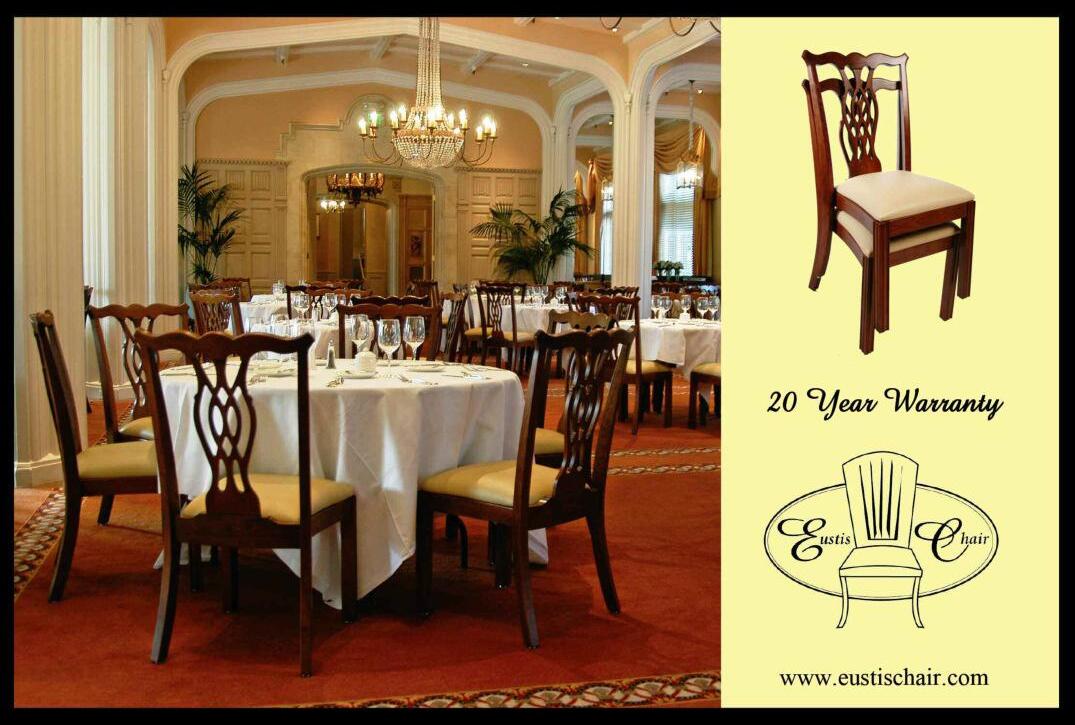
JGRA enjoys a respected reputation as a full-service architecture, interior design and master planning firm.
Many of our valued, long-standing client relationships are built on an initial master planning assignment; from a campus-wide facilities assessment to an in-depth study of phased expansion and renovation of a clubhouse. In some cases, however, a master plan has followed a more focused capital project, which exposed the need for a more strategic view of club facilities.
Collaboration is the cornerstone of all our work, beginning with an understanding of our clients’ culture and goals and evolving into specific planning and design recommendations. Having completed projects for more than 60 club clients in the northeast and beyond, we recognize some key common elements to a successful outcome:
• Identify improvements, which reflect member stated goals
• Maximize functionality of space ~ clubhouse circulation and operational needs
• Develop design vocabulary, which respects present architectural style but reflects contemporary lifestyles
• Establish an implementation plan, which matches the priority of individual projects
• Include a project budget, which identifies all hard and soft costs and can be used to:
• enlist member support
• develop a funding strategy
• guide long-range strategic decision making BR


Did you know that KECamps is the leader in operating country club day camps nationwide?
If you have been looking for a new way to add a fresh, friendly and functional service to your club atmosphere, it’s time to focus on the kids! Positioning your club as familyfriendly is the way to keep your members engaged and prospective members interested, and offering a variety of child-related activities throughout the year is a wonderful way to get started. To truly round out the experience and provide families with a consistent and quality option, an allaround summer day camp is the way to go.
Offering a summer camp at your club will have minimal impact on your day-to-day operations while providing measurable rewards. The children enrolled in the program will be more likely to sign-up for golf and/or tennis lessons and clinics throughout the year after their exposure to these sports at camp. The parents of the campers will be much more likely to use the club on a more frequent basis as they will be there when dropping-off/picking-up their children. And finally, you can feel confident that you are offering a service that is truly worthwhile, convenient and FAMILY-FRIENDLY!
KECamps makes offering a top-notch children’s summer camp at your club easy by doing the work for you. Not only will camp be an exciting option for your current membership, but it will work to engage prospective members as well. KECamps will provide you with an outstanding day camp experience for your members, both parents and kids alike!
The KECamps program includes recreational golf and tennis, swimming, athletics, arts & crafts, kids fitness (such as martial arts or yoga), fun with foods, group games, super science activities, special events, Wacky Wednesday theme days, and weekly Thankful Thursday community service projects all geared toward campers ages four to 10. We work with you as a team to customize the camp program to suit your club’s individual environment and space. Operating a day camp is a large undertaking with many moving parts. That is where KECamps comes in! We handle it all: insurance, licensing, programming, staffing, payroll, administration, marketing materials, registration and customer service.
For 17 years, KECamps has been providing a truly unique day camp experience to thousands of children at our 80-plus clubs nationwide. Bring the family back to your club by offering a summer camp run by true camp professionals. BR

The unprecedented demand for club fitness amenities continues to climb.
The past five years have seen extraordinary growth in the wellness sector of club facilities. Wellness offerings have expanded from a fitness room with tightly spaced equipment to multiroom studios and complexes which often include aquatics, spa and salon services, retail shops and food and beverage offerings.

There is a notable increase in the number of clubs striving to create facilities which support an array of exercise options for men and women of varying physical activity levels and ages as well as complementary on-site services such as nail and hair salons or physical therapy. The “one stop shopping” option with services provided by familiar faces encourages members to remain active at their clubs as they age in place.

Club leadership is responding with amenities designed to provide space for convenient custom- tailored services for members. Today’s wellness facility often encompasses individualized professional coaching, group sessions, high intensity interval training, strength training, physical therapy/rehabilitation, nutrition-centric menus and technology to monitor progress.
Inspirational environments are being created with emphasis on acoustics, abundant natural daylight in addition to indirect artificial light and state-ofthe-art equipment positioned to capitalize on views of the natural environment, aquatic complex, golf course or outdoor exercise venue. BR
Brian D. Idle, president Peacock + Lewis Architects and Planners, LLC. He can be reached at (561) 626-9704 or via email: brian@peacockandlewis.com


ideas are the currency of our times and of the people who have them. A great idea has the ability to turn an industry on its head.
Look what Uber has done to the taxi industry and what Airbnb has done to lodging.
Of course, the world has always belonged to those who can look over the horizon and around the next corner to recognize a need and match it with a solution. Our business is no different.
Seeing the difficulty most people had hitting a golf ball off a tee, Ely Callaway had a simple idea: make a bigger driver with a humongous sweet spot, give it a clever name like Big Bertha and make the game more enjoyable for millions.
The difference today – in what some call the Idea Economy – is that people realize no one has a market on great ideas. They can come
it was also his [Jeff McFadden, general manager of the union League of Philadelphia] idea to assess members for specific capital needs, but refund their assessment if they recruited another member who paid the joining and member fees.
from anyone and from any direction. The trick is making sure the product or service has value for your customers and moving faster than your competition to get it in their hands.
Here are four ideas that came to our attention in 2015. The generous folks behind each one have been kind enough to share them in hopes that they spur the creative juices in more of us.
BiG liTTle SHoW
At Westchester Country Club, the Big Little Show is a decades-old club tradition. A children’s dance recital held at the end of a six-
week dance camp, the show takes place each summer in the band shell behind the massive eight-story clubhouse.
One of the most popular numbers is the Daddy Daughter Dance, where young girls dress up in princess dresses for a choreographed formal dance with their fathers. Bob James, the esteemed CEO at Westchester, says, “It’s one of the happiest days of the year and an absolute can’t-miss evening.
“We are blessed with a strong family culture that has as its foundation numerous multigenerational member families. The membership actively supports our traditional family functions and is quick to reserve for our next big Wow event!”
That a simple idea has sustained itself for more than 80 years is testimony to the value (measured in the joy it brings family members) and to the dedication of members and managers.
enviRonMenTAl iMPACT
At the 2015 Golf Industry Show, Pat Vittum, renowned entomologist from the University of Massachusetts-Amherst, received the 2015 USGA Green Section Award.
Vittum, a professor at the University of Massachusetts’ Stockbridge School of Agriculture for more than three decades, has conducted significant research on the biology and management of turfgrass insects and the effectiveness of biological-control methods.
Her research has uncovered ways to control harmful insects without chemicals or with the lowest application rates possible. It’s an idea that helps protect the environment while and increasing golfers’ enjoyment.
CReATe A viSion
When Tim Walton became the manager at Westward Ho Country Club in Sioux Falls, South Dakota, the club was working its ways through some tough times. Debt burden and declining memberships put tremendous pressure on the club.
Tim’s job was to do more with less. Tim and his board attacked the problems with a big vision. Westward Ho tapped into the energy of the Sioux Falls area to increase capital dues, retire debt, change the identity of the club and build new facilities. Dues increased by more than $380,000 and member attrition dropped by two-thirds.
Now known as the Country Club of Sioux Falls, the club has retired debt and is aggressively recruiting new members. The club is testimony to thinking big and developing a new vision for an established club.
The Union League of Philadelphia has been serving its members since 1862. Manager Jeff McFadden is an imaginative and can-do idea machine. His strategic initiatives have resulted in a robust membership program of events and activities.
Jeff had the vision to add a golf club across the river in South New Jersey during an economic downturn that was forcing many club managers to hunker down. He imagined a Floridabased club for members to enjoy during the winter.
It was also his idea to assess members for specific capital needs, but refund their assessment if they recruited another member who paid the joining and member fees. The combined effect of more dues-paying members and increased capital for future improvement needs is substantial for the Union League Club and most clubs.
Big and imaginative ideas come in all sizes and shapes. The greatness of ideas is in what clubs and their leaders do with them. Does your club foster an environment for creative thinking and new solutions to old problems? BR
Henry DeLozier, a recipient of the BoardRoom magazine Lifetime Achievement award for 2014, is a principal of Global Golf Advisors. You can contact him at hdelozier@globalgolfadvisors.com.



A wave of emotions, rumors and concerns ripple through the club any time there is a turnover of a general manager.
It becomes a daily topic of discussion among members, staff, and vendors. It dominates the conversations that result in taking away from the enjoyment and pleasure of the membership activities going on in the club.
The board wants to do its very best to acquire a top-notch general manager who will be a good fit and stay with the club a very long time. The members concern will be with the selection of a new general manager and they will have to get to know the “new guy,” with hopes the “new guy” will be the best to serve them.
The staff knows there will be change, and they hope the boss doesn’t fire them and bring in his own people from previous jobs. The vendors realize the experienced general manager will have strong opinions on preferred products and equipment, and they might lose the club’s business.
Bringing in an interim general manager immediately sends a favorable message to all that the board is acting in a positive and professional manner. Don’t let yourself or members of the club get directly involved in the operations.
With an interim manager in place, there is someone there all the time to answer detailed operational questions from all parties on a dayto-day basis. This allows the board to continue to set policy while leaving the day-to-day operations to the manager, and eliminates micromanagement by the board.
The interim manager will ensure quality operations, service, revenue capture and expense control during this time. Interim managers have a stake in the success of their actions because they rely on referrals saying they have performed in the highest of standards.
An interim manager can be there immediately, and can deliver results and enhance productivity based upon the plan in place, and works with the departmental leaders to produce products
and services that meet and exceed the expectations of the members.
Typically, interim managers have years of experience in positions of leadership equal to or greater than the requirements of the general manager being replaced, allowing the club to use the interim general manager’s experience to make the club better!
This is a good opportunity for the club to get a seasoned consultant who if given the right direction can give the club some really good/unbiased results.
An interim manager possesses the skills and qualities to be effective the very first day of the assignment, which is vital because it can take up to four months to complete all of the necessary actions to install a new general manager.
During this time, the board can also resurrect special projects that can be completed with the board’s direction. The interim manager is not embroiled in the relationships of the club and therefore can make ideal recommendations to the board without being involved in many of the club’s day-to-day cultural and political issues.
A general manager with an annual salary of $150,000 with a 20 percent bonus really costs the club closer to $234,540 a year (considering a 30.3 percent employer cost) or $19,545 per month. Interim management fees are generally within the total costs of the general manager’s compensation.
The option of hiring interim management during a change in top management also provides many more opportunities for improved excellence in all aspects of the club’s operations.
This allows the club the time to continue making improvements that all the members will noticeably see. Seize the opportunity. BR
Terry Clark is manager, Club Advisors LLC. He can be reached at (480) 685-1054 or via email: TerryClark@ClubAdvisors.com.

one of the primary objectives of GolF 20/20 is to evaluate other areas of importance and opportunity to the future of the game.
This of course is in addition to its focus on uniting the golf industry around initiatives designed to increase participation and interest in the game,
During the last two years, GOLF 20/20 has evaluated participation in the game among Millennials, and, more recently, has taken a closer look at whether or not several alternative golf experiences lead to participation in the traditional game.
GOLF 20/20 commissioned a task force to evaluate the concerns of the industry regarding interest and participation in the game among Millennials.
The task force, which consists of Millennials from both inside and outside the golf industry, studied the subject for all of 2015 and has made the following recommendations to the GOLF 20/20:
1) That golf must establish a stronger voice in reaching the Millennial audience.
2) That golf should communicate new story lines about the game in order to obtain positive publicity with the Millennial audience.
3) That golf should develop best practices to create a more welcoming environment for Millennials at the facility level.
The GOLF 20/20 Board is reviewing these recommendations with plans to implement some or all of them in 2016.
The objective is to invite and retain in the game Millennials who have not, up until now, participated in golf at the same level as the percentage of the U.S. population overall that they represent.
GOLF 20/20 is also assessing the influence alternative golf experiences have on participation in the traditional game and has commissioned a task force to study the matter.
Four different forms of golf are currently being evaluated, including: TopGolf, FootGolf, Simulator Golf and Video Game Golf.
GOLF 20/20 is seeking to understand whether or not participation in these forms of alternative golf leads directly to participation in the traditional game.
If one or more of these forms of golf prove to be a reliable entry point into the game, GOLF 20/20 will help to promote that particular form of golf as one that brings people into the traditional game.
Both Millennial golf participation and alternative golf participation are examples of how GOLF 20/20 identifies and researches areas of importance to the continued vitality of the game. At the same time GOLF 20/20 is retaining its focus on established growth of the game programs such as: Get Golf Ready, Drive, Chip and Putt, LPGA/USGA Girls Golf, PGA Junior League Golf, and The First Tee.
GOLF 20/20’s role is to identify and evaluate issues and trends impacting the game that can influence its future success from a participation and interest perspective. Further, once these trends have been evaluated, then GOLF 20/20 helps put in place initiatives to address the particular area of interest or concern.
As private club leaders, you may wish to consider what you are doing to encourage greater participation in the game among Millennials. You may also wish to evaluate whether or not any of the several alternative ways to experience golf are appropriate for your club as a vehicle to create greater participation in the traditional game at your facility. BR
Steve Mona is the chief executive officer of the World Golf Foundation. He may be reached at (904) 940-4000 or via email: smona@worldgolffoundation.org.


until recently, club operators looking to implement food and beverage procurement, inventory and culinary control systems needed to purchase systems that would run on their in-house computers.
Software options ran the gamut from spreadsheets and recipe systems to professionally implemented comprehensive systems. Costs ranged from free (spreadsheets) to tens of thousands for high-end systems.
While larger clubs can afford the bigger systems, most clubs had to go with lower cost, less capable software. Unfortunately, given the complexity of club F&B operations – multiple outlets, multiple users, catering, etc. – simple or low-end F&B software cannot provide comprehensive coverage.
“For those of us that do not have a full -time it person, the cloud is the great technology equalizer. self-hosting creates more problems than it solves.” ted thie, CeO
Minnehaha Country
Club in sioux Falls
Use of these products results in the poorly implemented, piecemeal, labor-intensive approaches and associated inaccurate reporting that’s avoided by the use of professionally implemented sophisticated systems.
The cloud has changed all that.
Self-hosted too rich for our blood?
Between the software license costs and the required professional fees for proper implementation, clubs with F&B revenues under $3 million
have been hard-pressed to justify the expense of self-hosting high-end F&B systems.
These systems are expensive because they handle multiple profit and cost centers (outlets and warehouses); they allow for multiple users, granular security settings and electronic integration with vendors, POS systems, accounting and catering systems. They typically provide mobile computing capability as well, freeing management and staff from desktops and paper forms.
With the typical on-site (self-hosted) software model, the entire investment in software, hardware and implementation fees are up front. Clubs require servers and IT staff to host and manage the system and need to pay the associated costs of electricity and cooling, not to mention the labor associated with updating, backing up and maintaining the software.
Hardware obsolescence makes server replacement every three years an additional cost. And of course operating system and database software updating and maintenance can add thousands in additional license and maintenance fees.
All told, the initial investment could be well over $25,000 in licenses, $5,000 in equipment, along with annual fees of $5,000 in maintenance and untold hours of fairly expensive IT labor. Assuming upfront costs of $35-50,000 for equipment, licensing fees and implementation, and ongoing annual costs of $10,000 for maintenance, utilities and labor, the decision to automate this critical aspect of the club business becomes difficult for clubs with more typical F&B revenues.
Using the cloud, clubs of all sizes can now afford the high-end, sophisticated software enjoyed by the larger club operations.
Craig Lopes, general manager of the Moorings Yacht and Country Club in Vero Beach Florida points out the advantages and savings associated with a cloud solution to a smaller club that is expanding.
“We were willing to go to a cloudbased system because we were confident that the software was already thoroughly developed and, therefore, they could be responsive to our specific needs without compromising functionality of the system. We have not been disappointed in either the software or the impact to our cost of sales – a reduction of at least five percent when compared to historical results.
“With the recent addition of a second clubhouse 10 miles from our primary location, the cloud-based option has now proven to be an even better decision,” Lopes explained.
Cloud system pricing is typically based on three components – software license fees, software maintenance fees and hosting costs (equipment, bandwidth, updates and backups). Because the pricing is typically done on a monthly or annual basis, costs are spread over longer time frames.
As a result, high-end systems can end up costing as little as $300$500 per month. Comparing that to the self-hosted model, annual costs for sophisticated system could end up $6,000 lower per year – assuming $4,000 per year for cloud as opposed to $10,000 for self-hosted – and that savings does not include the labor, utility and hardware replacement costs associated with self-hosting.
Assuming that a properly implemented high-end club system can save clubs between two to four percent of annual F&B revenue (pessimistic compared to Moorings’ results), the clubs with $1 million in annual F&B revenue save $20-40 thousand per year, providing, at the low end, an annual ROI on the F&B system of over $16,000 after costs. More typical savings based on over 30 years of implementing high-end club F&B systems are closer to Moorings’ five percent estimate or $50,000 per $1 million in F&B rev-
enue resulting in $46,000 in annual savings.
Given these numbers, it is hard to imagine why clubs of any size would hesitate to fill the gap in their accounting system and implement these systems.
On the financial management side, it is also worth considering the ability to expense this cost, as opposed to capitalizing it. Another financial strategy is to purchase and capitalize the licenses in advance, and simply expense the hosting and maintenance component. Since the licensing component would no longer be part of the hosting fee in this case, annual hosting costs would be even lower.
Considering the advantages and much lower costs associated with cloud computing, smaller clubs can finally fill the gap in their accounting system and implement a truly comprehensive F&B management system.
According to Ted Thie, CEO of Minnehaha Country Club in Sioux Falls, “For those of us that do not have a full -time IT person, the cloud is the great technology equalizer. Self-hosting creates more problems than it solves.
“When our self-hosted systems go down we are at the mercy of our IT company to get us back up and running. Our cloud provider has the expertise and the technology to get back up and running in a short period of time. In our business we cannot afford to wait!” BR
Bill Schwartz is the founder and CEO of System Concepts, Inc. (SCI). Based in Scottsdale Arizona, SCI is a food and beverage procurement and inventory management consulting firm and the developer of the FOOD-TRAK System, widely used in club operations around the country. Bill can be reached at (480) 951-8011 or bills@foodtrak.com.


The “Stay” interview
The time has arrived for the board’s annual review of the general manager. Mr. Long Time Manager has been asked to create a “review template” he and the board members can use in evaluating him.
For each of the past 33 years, Mr. Long Time Manager has created a different annual review template to use in doing the review – each template a little quirkier than the last, a creative opportunity to be retrospective, introspective and prospective.
This year Mr. Long Time Manager decided to create a Stay, or Be Gone Review to determine whether the incoming board should keep him, or send him packing.
“Be gone” seems a distant possibility because his tenure as GM has been a love fest for decades, and the year just ending has been a winner financially, operationally and emotionally. Members are glowing. The board’s glowing. The staff’s glowing.
And he’s still glowing…after 33 years.
But this year he thought it’d be a hoot to hand in his resignation then plead his case for another year of employment.
THe RevieW
So Mr. Long Time Manager put together a four-part review template—-
• Why You Should Beg Me to Stay
• Why You Should Open the Door and Sweep Me Out
• My “This Is My Legacy” One Liner
• Stay or Be Gone.
Fun stuff!!!
Why You Should Beg me to Stay: Mr. Long Time Manager listed lots of good reasons for the board to keep him for another year or two. He loves the club deeply and profoundly and every-
one who meets him knows it. He’s got tons of energy. He’s a happy guy. He laughs a lot. He’s a great conversationalist.
He’s a valued mentor to members and staff. He is a library of institutional memory – he knows where the bodies are buried, where the white papers are filed and where the big dogs gather.
He knows the ins and outs of the operation, intimately. He knows the facility, intimately. He knows where all of the operational holes are located. He’s an engine of creativity.
He’s a dancing monkey, who can “do business.” He knows how to build “The Club Tribe.” He has a great relationship with kids and old people and everyone in between. He makes the club tons of money. And…with his gray hair and wrinkled chin, he looks managerial
Why You Should Open the Door and Sweep Me Out: Sounds good, right? Not so fast. If the board knew “what’s bubbling” in Mr. Long Time Manager’s psyche they’d probably give him the boot, sooner rather than later, because…
He’s got the big itch for other things, knowing he’ll be food for the worms within a decade or two.
He’s lots less interested in the day-to-day details of doing business and prefers spending time connecting and reflecting with members and staff.
He’s more interested in pondering the big issues of life rather than the nitty gritty day-today details of doing club.
He’s no longer driven to increase the club’s operational efficiency, though he clearly sees where efficiencies are needed.
He’s not interested in spending another 10 years correcting and improving the stuff he know needs correcting and improving.
He’s tired of doing the “critical things that need doing with enthusiasm by a small club
manager”, from picking up cigarette butts in the parking lot to inspecting toilets for cleanliness.
He’s found that 12-hour workdays have lost their sex appeal.
He’s discovered that large crowds and chaos are less entertaining than they once were.
He thinks everyone is wonderful – when they ain’t.
He loves using the vacation time he’s earned but…
He’s tired of feeling bad “being gone” while using the vacation time he’s earned and...
He no longer enjoys answering 100 club-related emails a day while he’s “on vacation.”
He’s tired of “visibility blackmail” of feeling badly when members and staff do not see him, even though he knows he can’t be productive being visible all the time
He’s tired of inspiring supervisors and staff to do stuff they know they’re supposed to do, and having to beat them up when they don’t do it.
He’s finding it tougher and tougher to do the switch from “office time” and paper to “wander time” and people, and gets more annoyed whenever he has to make the switch.
He’s finding that he’s more focused elsewhere…elsewhere being his life outside the club.
He wants more time to write articles for publication – elsewhere – and to prepare seminars for presentation – elsewhere.
He’s happy with “things the way they are” and if it works, whether it’s a cheapo plastic lounge chair or an old but functional piece of gym equipment, he’s content to leave it as it is.
He cares deeply for the staff, and he’s unwilling to make the hard HR choices that need to be made to make the operation better.
He wants fewer “3 a.m. club moments”, waking in the middle of the night, chased by the demons of inconsequential stuff.
He’s tired of passing by members and talking fluff and wants “sit time” to talk substance.
He treasures eye-to-eye conversation and dismisses social media as a poor substitute for eye-to-eye.
He’s tired of feeling bad because he abandoned the lobby, stopped his “meeting and greeting” and motored home before welcoming that last, late dinner reservation.
He’s annoyed more easily by “little stuff” – lights not dimmed, popcorn cold, salt shakers half filled, and lets his annoyance show through.
He’s got money and options and because he has, he’s more inclined than ever to grumble “piss on them, I’m gone” when one of his hot buttons gets pushed.
And over and above everything else, he knows life is short and time’s running out………….
My This Is My Legacy One Liner: When he’s asked about his legacy he makes a very un-executive/un-COO/un-CEO statement – I helped create relationships and community and did so using The Buzz, The Love and The Glow.
Not profits. Not technology. Not cost of sales. Not inventory control. Not a new and bigger clubhouse.
He’s proud to be a Retro, in it for the people, a poet in an age of machinists, a club manager who helped make The Love happen.

Stay or Go: Mr. Long Time Manager has had a fabulous 33-year run of it. He’s feeling great. He’s happy all the time. Members seem happy. The staff seems happy. The club’s in great shape – membership-wise, facility-wise, staffwise, finance-wise, activities-wise.
But, the day-to-day business of doing club is wearing him out, taking him away from the reflective, introspective “last few miles” of an old man’s journey, denying him the opportunity to ponder and to enlarge, through conversation and reflection, the life already lived.
And, he’s got lots to look forward to before he exits this life and enters The Great Beyond. Lots of good conversations, and reflecting. Lots of writing, and reflecting. Lots of seminar-ing, and reflecting. Lots of traveling, and reflecting. Lots of “enlarging the journey” before the final bell sounds.
So Mr. Long Time Manager has come to accept it’s a great time to go!
And he will, most definitely—- Enjoy the journey! BR
Gregg Patterson, who served the Beach Club of Santa Monica as its general manager for 33 years, retired January 31, 2016. He’s also the recipient of Boardroom magazine’s Award of Dedication for 2015, for all his timeless, energetic and dedicated service to the private club industry. Gregg’s been a regular contributor to BoardRoom magazines since its inception 20 years ago, and hopefully will contribute in future whenever possible.
municating to our membership that their GM is engaged, active, available for feedback, willing to listen, and concerned with the minute-to-minute operation of the club.
“As with most important leadership positions, it also allows me to observe how the staff is interacting with the members and to identify situations or individuals that might not be conforming to our service and quality standards.
“I’m not queried about ‘what’ so much, but often about the ‘how’ and ‘why.’At Polo, we say that we work in a very ‘feedback rich’ environment, and our members are never at a loss for letting me know about their experiences – both good and bad.
“I gently remind our members that, despite what may be a difference of opinion, we can’t change the way we operate the club every time I receive
an email or phone call from a member who wants things to be different.
“We work hard here to listen to our members and explain why we do things a certain way, under the theory that an educated member is our best customer and ambassador,” Morris explained.
“Professional visibility is crucial in any job,” suggests Chris Boettcher, GM/COO at Burlingame Country Club, near San Francisco, CA.
“There are many club managers that have been fired for being irrelevant. I have taken jobs at several clubs and been told they never saw the previous guy. How does one keep their job if the employers don’t know you or have any relationship with you?
“Private club managers have to be impactful. The staff needs to know they can trust you so you have to work along side them. The members have to be able to trust their club to you so they need to know how you

work. This is not rocket science!” Boettcher stressed.
“I have always told my selection committees and those that interview me that I will be working regular hours – not necessarily regular banker hours and days but not a lot of overtime. I tell them I will be present at the club when you need me but when you don’t I won’t be around.
“For example, our biggest event at my club is a Christmas Eve dinner. More members show up for this event than anything else. I’m there to make sure it goes well and to meet and greet members. Sure, it’s a nice holiday and it would be great to be off.
“Could the team do it, or any other party without me?” Boettcher queried. “Of course. But would it be smart to be absent? I don’t think so.
“On the other hand, do I need to be at work every Monday or Tuesday morning at 9 a.m.? There are usually about three members here on Tuesdays at that time and we’re closed on Mondays, so that, in my opinion, is a waste of time,” Boettcher explained.
“Every general manager needs to be seen throughout his entire operation. He needs to ‘touch tables’, visit with members, and observe his staff. You need to see the functioning of the operation from both the members’ and the employees’ perspectives. I am rarely asked what I do because of my visibility and because of my regular communications,” says John Herring GM and COO of The Club at Admirals Cove in Jupiter, FL.
“I am regularly updating my board on significant challenges that may arise, and we have a weekly communication with our membership. This helps to keep everyone informed. I believe my board respects me and the management team.”
Terra Waldron, vice president and general manager of the Desert Highland Association in Scottsdale,
AZ, feels “chief operating officers have gained more credibility in the past several years, as the ‘go to’ expert in the realm of operation.
“Members like to know that you, and for example, the superintendent, are accessible and their thoughts, comments and suggestions are heard. Being visible allows the opportunity in a less formal setting to communicate.
“In this leadership position, I advise on having your ‘elevator’ speech ready to convey your role at any given time. Ongoing education, information is critical for the membership to begin to understand the complex fluid professional you are in the club and home owners association,” Waldron stated.
Gregg Patterson, retiring general manager of the Beach Club of Santa Monica says general managers must be seen and heard at the club because they are the visible symbol of the club…a living, breathing, walking and talking ‘living embodiment’ of the club’s values.
“They are the keeper of the flame, the trumpet of the club, the Old Testament Prophet bringing the truth about this club down from Sinai.
“People point to the manager and say, ‘She is us,’” Patterson exclaimed. “Every time a member, a guest or staff person for that matter, sees the manager, they’re reminded of the club… how it looks, how it smells, the quality of the rinks, the fluff of the towels, the pile in the rugs and the sand in the traps.
“The GM is the tip of the iceberg, the top of the pyramid, the distillate of the entire ‘club experience,’” Patterson intoned.
See PuBliSHeR’S PeRSPeCTive |108
nothing is more important to your club’s success than membership satisfaction.
Effective staff training is the best way to deliver high quality service. Until now, clubs have struggled to consistently convey core service concepts, membership expectations, and best practices to every employee.
A pioneering partnership between Reid Consulting Services and the Club Resource Center now makes online member-specific training as close as the nearest computer.

Private Club 101 and E.N.C.H.A.N.T.E.D. Service are now available at www.clubresourcenter.org.
These programs provide:
• Consistent messaging.
• Time-tested concepts based on years of experience.
• A tool for your ongoing commitment to staff development and membership satisfaction.
• A professional resource for staff orientation. Always available. Affordable. Available to all. BR
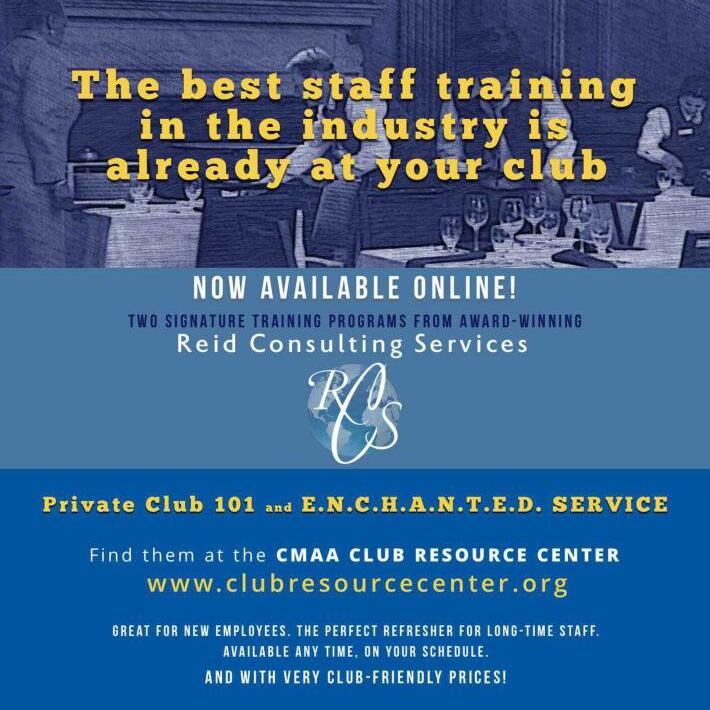
Some boards of directors are more sophisticated than others for various reasons, including the fact that some directors live inside the gates of the club and visit the club’s facilities day in and day out. They’re in the ‘know.’
lead to less involvement as a board member, and perhaps fewer questions to the club’s general manager.
Still Frank Cordeiro reiterates the point the board must see the general manager as the club’s leader, in what he views as an ever-changing scenario.
“Members like to know that you, and for example, the superintendent, are accessible and their thoughts, comments and suggestions are heard. being visible allows the opportunity in a less formal setting to communicate.”
~ terra Waldron, vP/GM Desert highland
“It’s a daily experience, they’re more activist about their community and club experiences, which leads to a desire to understand the operations of the business,” added the Polo Club’s Morris.
“Our board has a good understanding of the GM’s role as an ‘orchestra leader’, but they may not fully understand how much time I spend meeting with individual managers, talking to our line associates, and listening to members who I encounter while making my rounds during the day.
“I’m not shy about expressing my views on the issues and challenges that we face at Polo, and I’m not afraid to push back and defend my decisions and the vision that I have for the future of Polo. If there was a single thing that I hope my board knows, it’s that a lot of thought, analysis, and consultation with my management team goes into the decisions that I make,” Morris explained.
For others, perhaps a seasonal club, or a club without an attached homeowners association, it might
“The GM is the club’s leader. The COO/GM is the keeper of the club’s strategy and culture. The days of ‘board’s lead and managers implement’ are over,” Cordeiro emphasized.
“With annual turnover at the board level, the continuity, leadership and culture lies with the COO/GM. In clubs that understand this, the value of COO/GM is very high. If the club
views the COO/GM solely as an operator, the position becomes dispensable. We must elevate the value of the COO/GM in the board room!”
Then again, education is a major part of developing as a board member, and a general manager. And that’s a pet peeve for some GMs.
“There’s nothing that I wish the board knew about how we operate the club,” expressed La Rinconada’s Mac Niven. “Education, however, is an ongoing and tricky business.
“Most directors are still active; some are active with the club. Direct education tends to be off putting to most directors, so we need to be somewhat indirect about it. We try to educate when the window is open, sometimes we need to open the window, but timing, just like in the golf swing, is important.
“Our major area of education is to influence the directors to think generatively and strategically. We try to work the conversation away from the minutia and towards the big picture issues, and there are many.
“As staff, we need to help them focus on things that minor issues may cloud. A big deal is unearthing the real issue that is hidden beneath the immediate issue,” he added.
“there is a sentiment from many (boards) that we send the money and dues to our associations too regularly and that maybe we should only go to conference once every other year. how is one to stay on the cutting edge of the industry if you don’t stay informed? Ours is an industry ever changing. We can be pretty isolated from the rest of the hospitality industry if we don’t self-educate.”
~ Chris boettcher, GM/COO burlingame Country Club
And education for general managers is also an issue for many.
“My pet peeve is with board members who don’t see the value in supporting the industry as a whole,” Cordeiro comments. “Some boards discourage involvement and resources outside of the club. This is unfortunate. In my view, all clubs share in the responsibility to grow the industry.”
Chris Boettcher shares the feeling.
“Boards should get a better understanding about education. Many of their managers take time on their only days off each week to go to CMAA seminars, roundtables and conferences. Long gone are the days of the boozy-boondoggles. Any managers that do behave that way do a disservice to the industry. They need to know that it’s a real job and not just a head-busboy position.
“There is a sentiment from many (boards) that we send the money and dues to our associations too regularly and that maybe we should only go to conference once every other year.
“How is one to stay on the cutting edge of the industry if you don’t stay informed? Ours is an industry ever changing. We can be pretty isolated from the rest of the hospitality industry if we don’t self-educate,” Boettcher expressed.
And this example from Boettcher explains the need for board members to better understand a general manager’s education quite well.
“At a former club a board member was making fun of the conference I planned on attending. When I turned in my 12-page post-conference report, having had the opportunity to go to 80 education programs, and networking with the top club managers in the industry, bringing back surveys, budget template ideas and new service offerings, it’s a long story short. That shut him up!”
Certainly there are times a general manager might feel ‘unappreciated’ by the club’s board…especially as general
managers try to find ‘balance’ in their personal lives.
“Things we do as managers are a bit like a cell phone, it is (we are) just expected to ‘work,’” offered GM Niven. “There’s very little appreciation for a cell phone working, and like the cell phone when it doesn’t work (when we don’t work), well that’s when all kinds of things are called into question.
“Looking for appreciation as a measure of success might be a difficult gauge. We all hear “Hey, great party last night, you guys are great. Everything’s really great around here.” That’s a pretty superficial statement, but a bunch of those add up to letting you know that the work is getting done.
“When someone walks up to you, looks you in the eye and says, ‘You and your team did an excellent job with that project. You were under pressure, kept it within budget and gave us more than you told us you
would,’well, that’s appreciation. And those sentiments are few and far between, but when they do occur, can really last a long time.”
And perhaps this story from Mac Niven tells it well.
“A few years ago I was the new GM at a large, premier club. We had a superintendent who had, as was customary, club privileges. His daily routine was to go into the 19th Hole late in the afternoon, have a beer and talk with members.
“I went with him only once and observed what happened. He traversed the many members, shaking hands and smiling, collecting his acorns of appreciation, listening to “Greens were great today, course looks great” over and over.
“He thrived on that appreciation, he beamed, he glowed, he grew taller. And then he would get one “Man, those bunkers sucked…” He deflated

immediately, emotionally crushed, eight great comments and it took only one negative comment to completely destroy his confidence, the whole sack of acorns spilled out.
“I thought that was very interesting until the next day when he allocated three quarters of the staff to hand raking the bunkers at the expense of the rest of the course. We bought him a membership at a club near his home and that solved the problem.
“Appreciation evokes interesting emotions, with the average club having 500 members it’s the law of large numbers that somebody won’t be happy. Members, including board members, are at the club to have fun, not bolster the GM’s confidence.
“If our personal worth is measured by others’ appreciation, it will be a tough club life. I believe appreciation
is best served from one’s own perspective of the job well done,” Niven intoned.
I’ve heard similar stories. In fact, one GM relayed a story about a day when he was overseeing the lunch crowd. A new employee approached him and said, “I want your job one day.” The GM said, “Great, why?”
The new employee explained: “You’re always so well dressed, you have your own assistant, and a big office. It seems you are contented and it looks like the job is not all that demanding.”
At that point, the GM wondered if that’s what members might be thinking as well.
How visible general managers are around their clubs, how they relate to their members, how relevant they feel as the leader of the club certainly are important aspects of a general managers daily club life.

Unfortunately, many club members and even boards of directors are not clear about the GM/COO/CEO’s role, what they do every day or what they are responsible for, often because neither the board members nor the general manager have clearly articulated roles.
This has caused many fine general managers to be replaced.
To be clear: The board’s responsibility is to establish policies and guidelines and ensure that the club operates within those guidelines.
The general manager, chief operating officer, chief executive officer (call it what you wish) is the top executive responsible for the operations and management of the entire club.
Setting and communicating strategy, putting sound processes in place, selecting and mentoring key people will create the conditions that will help everyone make the right choices.
Also the general manager is often involved in intangible activities, to the benefit of the club, that go unrecognized or are unappreciated by members or boards.
The GM, as the club’s leader, must set the tone, define the organization’s culture and values, and ensure the culture and values are maintained and protected. They must also demonstrate how employees should behave.
However, I also believe the GM needs to be seen, because a general manager can easily lose their legitimacy…their relevancy, if they’re missing in action or unconvincing when they’re visible.
At least that’s the way I see it! BR
John G. Fornaro,
publisher
If you have comments on this article or suggestions for other topics, please contact John Fornaro at (949) 376-8889 or via email: johnf@apcd.com




Chris bOettCher
This is required reading for private club boards of directors!
Certified Club Manager (CCM) = 300 hours of education and a number of specialty industry requirements. Certified Chief Executive (CCE) = 400 more hours of education and more specialty learning plus an important tenure in our industry requirement.
These certifications are a worthy effort my friends. While they add up to some serious hours of extra time for any busy professional, they separate you from the rest of the pack.
They show that you really care about your profession and staying relevant in your industry. But they mean nothing the day a manager loses their job from a club that thinks they are not worthy of being there. It happens. It sucks for both parties but it is sometimes unavoidable.
It may be for a bad reason, but sometimes, they might deserve it. Whether it is the manager’s fault or not, it’s an opportunity to really make the next choice the right choice. It’s just that time - every year, club management turnover happens. It is good for some and not so good for others.
In my humble opinion, it’s best if clubs try to keep managers for a really long time.
Take a look at my friend Gregg Patterson from the Beach Club of Santa Monica who’s been at this club for 30 something years. That is brilliant! So our congratulations to Gregg on his retirement!
Ya, ya, I know some search firms like to see the turnover and movement at clubs but if you put together all the search fees from all the companies together, you probably could have afforded to retain or could have afforded to hire that club professional manager that maybe you thought you couldn’t afford.
So when the dust settles, having those designations behind your name help a lot - for both the manager looking for a job and the club searching for a manager.
Real professionals, no matter what position, know what their worth. For goodness sakes, they’re usually numbers’ people! It’s great to get a bargainbased manager if that’s what you want – under market and over worked. But professional club managers should be worth their weight in gold.
Listen, I’m a fan of Ken Blanchard and his book “Gung Ho!” and there is a part that talks about worth-while-work. Every part of the team – from
grounds crew to houseman to golf pro – are all super-important. But if you want to keep a thread of continuity from year to year with all the info and experience you can have at the helm of your ship, don’t look to the club board. These members usually rotate off every three years.
Look for a true club professional. Someone with a proven track record and integrity, and here’s the twist: Make sure they stay educated. Some clubs are good about supporting continued education and some are not. Let me share just one familiar saying: Why spend money on educating a professional and then have them just leave? Well, what if they’re not educated in their profession and they stay?
The maître d’ approach - where the head administrator of the club is really the head bus boy, is an approach of old, still alive in many shapes and forms, just like it was in 1592 at the bath house clubs in Rome and golf clubs in Scotland.
But now, when you’re managing a multi-milliondollar business that services the leaders of industry, many national leaders and high-ranking businesspeople, (and the only thing they think of all day is to get away to their club), wouldn’t you want the best? Wouldn’t you want more than the maître d’ approach? The club should be that oasis of civility and the safe neighborhood for your family. Having a cutting-edge leader in charge of making that happen for your club is crucial, because there are too many moving parts to not have a professional’s attention looking after your assets.
Think carefully about continued education. Think carefully about the years of focus and passion for the business that some of these GMs and COOs and CEOs, with letters like CCM and CCEs behind their names, have.
It’s not just fun and games. It’s not just a rewarding profession with the instant gratification injection we all get when we meet and exceed our members’ expectations. It’s also a person’s livelihood – an important part of their life and, for the passionate ones, a true craft in the happiness business… So, Lead ON! BR
Christopher Boettcher, proudly a CCM and CCE, is the GM/COO at Burlingame Country Club near San Francisco, CA and a regular contributor to BoardRoom magazine. He can be reached at chris@boettcher.com

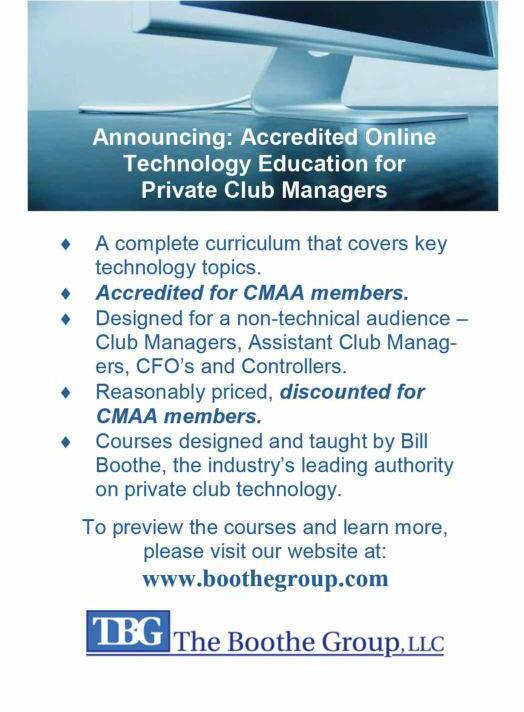
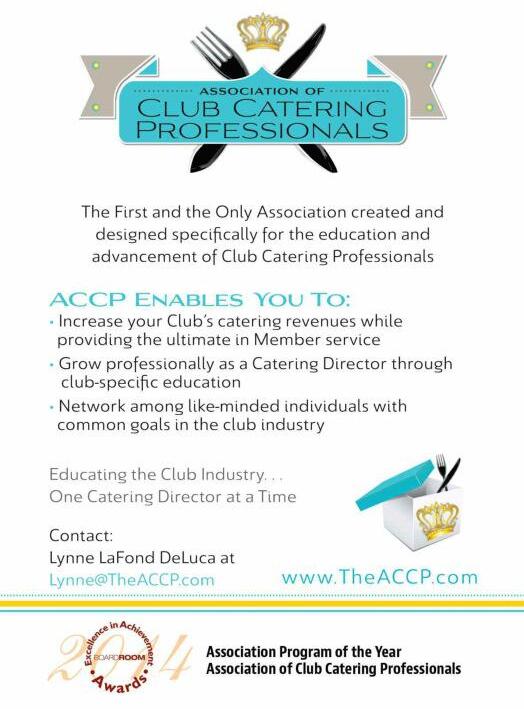
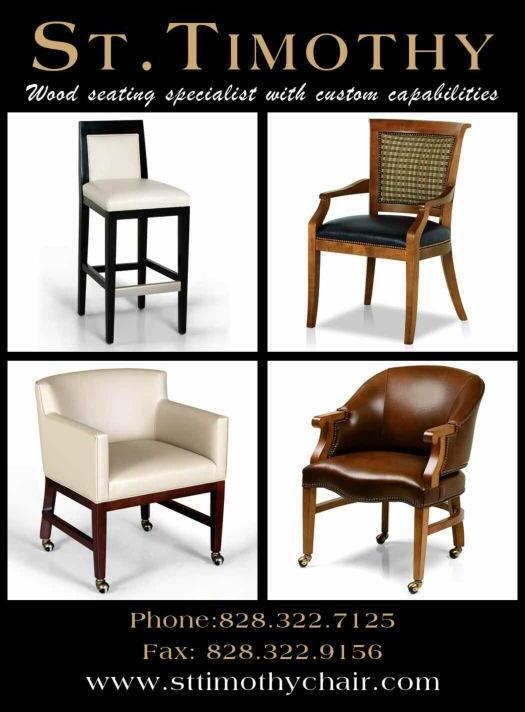





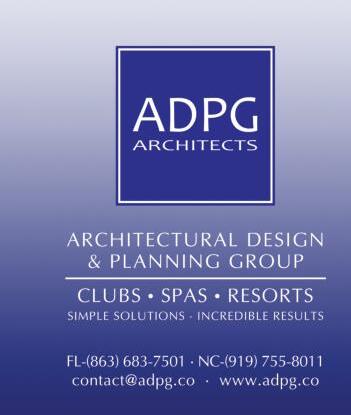












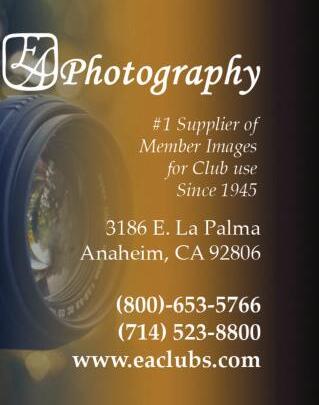


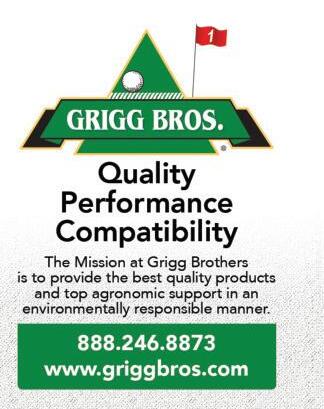

















Addison Law Firm
14901 Quorum Drive, Ste. 650 Dallas, TX 75254
Tel: (972) 960-8677 Fax: (972) 960-7719
Website: www.addisonlaw.com
Email: clublaw@addisonlaw.com
Contact: Randolph Addison, president
Club Advisory Services
Club Consultants LLC
5121 Castello Drive, Suite 1
Naples, FL 34103
Tel: (239) 643-7800 Fax: (239) 643-7803
Website: www.clubconsultants.com
Contact: Bill Wernersback, sr. mng. dir.
Club Neckties, Scarves, Emblems
Stratton-Crooke Enterprises Inc.
P. O. Box 215-H
Scarsdale, NY 10583
Tel: (800) 732-9719 Fax: (914) 725-5196
Website: www.strattoncrooke.com
Email: StrattonCrooke@aol.com
Contact: Nancy & Jim Crooke
Club Services
HFTP
11709 Boulder Lane, STE 110 Austin, TX 78726-1832
Tel: (512) 249-5333 Fax: (512) 249-1533
Website: www.hftp.org
Email: Laura.Huffman@hftp.org
Contact: Laura Huffman
Clubhouse Design
Chambers
100 Decker Drive, Suite 140
Irving, TX 75062
Tel: (972) 253-3583 Fax: (972) 259-9664
Website: cciclubdesign.com
Chambers 1800 Washington Blvd., Suite 111 Baltimore, MD 21230
Tel: (410) 727-4535 Fax: (410) 727-6982
Website: www.chambersusa.com
Email: jsnellinger@chambersusa.com
Contact: John R. Snellinger
Peacock + Lewis Architects
1295 US Highway One North Palm Beach, FL 33408
Tel: (561) 626-9704 Fax: (561) 626-9719
Website: www.peacocklewis.com
Email: Brian@peacocklewis.com
Contact: Brian Idle
Clubhouse Architect
Judd Brown Designs
700 School Street
Pawtucket, RI (401) 721-0977
Contact: Peter Cafaro
H. Anne Blakely Sciarrone Architecture
P.O. Box 357
Decatur, GA 30031 (678) 632-2663
Contact: Anne Sciarrone
Clubhouse Furniture
Eustis Chair
P.O. Box 842
Ashburnham, MA 01430
Tel: (978) 827-3103 Fax: (978) 827-3040
Web site: www.eustischair.com
E-Mail: fred@eustischair.com
Contact: Fred Eustis
Gasser Chairs
4136 Logan Way
Youngstown, OH 44505
Tel: (330) 759-2234 Fax: (330) 759-9844
Web site: www.gasserchair.com
Email: ksmith@gasserchair.com
Contact: Kevin Smith
Global Allies
625 DuBois Street, #A
San Rafael, CA 94901
Tel: (877) 208-7185 Fax: (415) 453-6042
Web site: www.globalallies.com
Contact: David Cline
Course Architects
George Golf Design, Inc.
609 Twin Ridge Lane
Richmond, VA 23235
Tel: (804) 272-4700 Fax: (804) 272-4771
Website: www.georgegolfdesign.com
Contact: Lester George, course architect
Consulting
Clubwise Consulting
3507 Dunlin Shore Court
Norcross, GA 30092 (770) 248-1047
Contact: Jerry McCoy
Email: Cmaamcm@msn.com
Denehy Club Thinking Partners
501 Kings Highway East 06825 (203) 319 8228
Website: www.denehyctp.com
Contact: Dan Denehy
McMahon Group
670 Mason Ridge Center Drive , Suite 220
St. Louis, MO 63141
Tel: (800) 365-2498
Website: www.mcmahongroup.com
E-Mail: info@mcmahongroup.com
Course Maintenance
International Golf Maintenance, Inc. (IGM) 8390
Champions Gate Blvd #200
Champions Gate, FL 33896
Tel: (800) 413-5500 FAX: (407)589-7223
Website: www.igminc.net
Email: gregp@igminc.net
Contact: Greg A. Plotner CGCS, EVP
Executive Search Firms
GSI Executive Search, Inc.
Tampa Bay Office
P.O. Box 55877
St. Petersburg, FL 33732
Tel: (727) 525-6562 Cell: (727) 366-0487
Website: www.gsiexecutivesearch.com
Email: dick@gsiexecutivesearch.com
Contact: Dick Farrell, Principal
GSI Executive Search, Inc.
Northest Office
Rochester, NY
Tel: (518) 852-0986
Website: www.gsiexecutivesearch.com
Email: dan@gsiexecutivesearch.com
Contact: Dan Farrell, Senior Associate
GSI Executive Search, Inc.
Midwest Office
231 S. Bemiston Ave. Suite 800
St.Louis, MO 63105
Tel: (314) 854-1321 Cell: (314) 452-8848
Website: www.gsiexecutivesearch.com
Email: scott@gsiexecutivesearch.com
Contact: Scott McNett, Principal
Kopplin & Kuebler
Southwest Office
7349 Via Paseo Del Sur, Ste. 202 Scottsdale, AZ 85258
Tel: (480) 443-9102 Fax: (480) 443-9642
Website: www.kopplinandkuebler.com
Email: dick@kopplinandkuebler.com
Contact: Dick Kopplin, partner
Kopplin & Kuebler
East Coast Office
132 Tulip Tree
Jupiter, FL 33458
Tel/Fax: (561) 747-5213
Cell: (407) 864-6798
Website: www.kopplinandkuebler.com
Email: kurt@kopplinandkuebler.com
Contact: Kurt Kubler, CCM, partner
Food & Beverage Software
Culinary Software Services
1900 Folsom Street #210 Boulder, CO 80302 (303) 447-3334
FOOD-TRAK®/System Concepts, Inc. 15900 N. 78th Street
Scottsdale, AZ 85260
Tel: (480) 951-8011 x 8026
Fax: 480-951-2807
Email: nancys@foodtrak.com
Website: www.foodtrak.com
Contact: Nancy Shina, director of marketing
C2 Limited Design Associates
95 Reef Road
Fairfield, Connecticut 06824
Tel: (203) 259-2555 Fax: (203) 259-2565
Website: www.c2limited.com
Email: studio@c2limited.com
Contact: Craig J. Smith
Ferry, Hayes & Allen Designers, Inc.
1100 Spring Street, Suite 600 Atlanta, GA 30309
Tel: (404) 874-4411 Fax: (404) 874-1099
Website: www.fhadesigners.com
Email: jbarret@fhadesigners.com
Contact: Jeff Barrett, executive vice president HINT |Harris Interiors
49B Lenox Pointe
Atlanta, GA 30324
Tel: (404) 403-2931
Website: www.hintatlanta.com
Email: kelley@hintatlanta.com
Image Design, Inc. 3330 Cumberland Blvd.
Atlanta, GA 30339
Tel: (770) 952-7171 Fax: (770) 933-9093
Website: www.imagedesign.com
Email: mfleming@imagedesign.com
Internet Domain
.CLUB Domain
100 SE 3rd Avenue
Fort Lauderdale, FL 33394
Tel: (877) 833-0000
Website: www.nic.club
E-Mail: info@nic.club
Insurance
GAB Robins
3300 W. Lake Mary Blvd, Suite 350 Lake Mary, FL 32746
Tel: (800) 248-3376
Website: www.gabvalue.com
E-Mail: service@gabvalue.com
Kitchen & Banquet
Spring USA
127 Ambassador Drive #147
Naperville, IL 60540
(630) 527-8600
Website: www.springusa.com
Locker Room Suppliers
Sports Solutions, Inc. 2536 Manana Drive
Dallas, TX 75220
Tel: (800) 969-8008 Fax: (214) 351-2609
Website: www.sportssolutionsinc.com
Email: sales@sportssolutionsinc.com
Contact: Laurie Schmidt
Lockers
Salsbury Industries - Lockers.com
1010 East 62nd Street
Los Angeles, CA 90001
Tel: (800) LOCKERS Fax: (800) 562-5399
Website: www.Lockers.com
Email: Salsbury@Lockers.com
Outdoor Furniture
Bambrella
6464 East Rogers Circle
Boca Raton, FL 33487
Tel: (561) 288-8655
Website: www.Bambrella.com
E-Mail: info@Bambrella.com
Xhibtz Contract Furnishing
11071 Indian Lake Circle
Boynton Beach, FL 33437
Tel: (954) 614-1505
Fax: (888) 880-9124
Website: www.xhibtz.com
Email: xhibtz1@bellsouth.net
Purchasing Group
Essensa
555 West 57th St., 12th Floor
New York, NY 10019
Tel: (866) 430-5330
Website: www.Essensa.org
E-Mail: essensainfo@essensa.org
Research & Data
Club Benchmarking PO Box 2082
New Castle, NH 03854 (603) 553-8958
Signage
Signera
20140 Scholar Drive, Suite 314 Hagerstown, MD 21742
Tel: 877-998-7446 ext. 10 Fax: 301-850-3353
Website: www.signera.net
Contact: Michael Sparks
Software Developers
Culinary Software Services
1900 Folsom Street #210 Boulder, CO 80302 (303) 447-3334
Spa
Luxury Spa Sales
6601 Lyons Road, Suite D8 Coconut Creek, FL 33073
Tel: (800) 220-8646
Website: www.LuxurySpaSales.com
E-Mail: Spa@LuxurySpaSales.com
Technology
FOOD-TRAK®/System Concepts, Inc.
15900 N. 78th Street
Scottsdale, AZ 85260
Tel: (480) 951-8011 x 8026
Fax: 480-951-2807
Email: nancys@foodtrak.com
Website: www.foodtrak.com
Contact: Nancy Shina, director of marketing

Northstar 161 Kimball Bridge Road #200
Alpharetta, GA 30009
Website: www.globalnorthstar.com
Tableware/Menus
Polar 2046 Castor Avenue Philadelphia, PA 19134
Tel: (800) 831-7823 Fax: (215) 535-6971
Website: www.the-polar.com
Email: bradk@the-polar.com
Contact: Brad Karasik
Walco Stainless/Utica Cutlery 820 Noyes St. Utica, NY 13503
Tel: (800) 879-2526 Fax: (315) 798-3757
Email: susan@uticacutlery.com
Website: www.uticacutlery.com
Contact: Susan Martin
Uniforms
High End Uniforms 5442 Gateway Plaza Drive
Benicia, CA 94510 (707) 746-7011
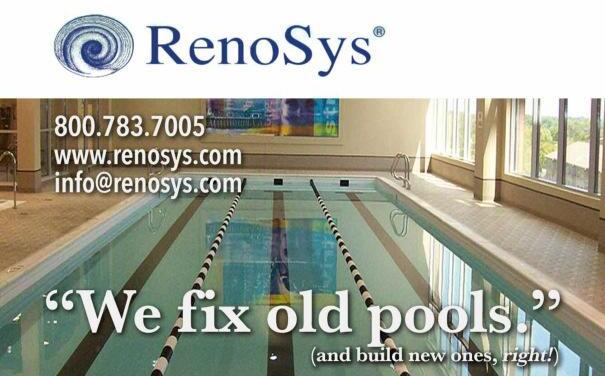
BoARDRooM MAGAzine ADveRTiSinG inDex
aCCP. .
addison Law.
big John Grills.
boardroom Distinguished Clubs.
116
11
85
eustis Chair.
Ferry, hayes & allen Designers. .
94

112 & 113 booth Group.
C2 Limited Design associates.
116
48 & 49 Chairmasters.
35 Chambers.
Cheftec. .
ClubDesign associates.
Clubessential.
ClubPay.
Clubster.
Clubtec.
Clubwise.
Club revenue solutions.
Concert Golf Partners.
Creative Golf Marketing
Daniel Paul Chairs.
Dei Kitchen.
Denehy. .
ea Photography.
epic insurance services.
50 & 51
110
73
52 & 53
91
29
28
91
106
39
13
8
75
47
71
99
54 & 55 FOOD-traK.
Gasser Chairs.
George Golf Design.
Golf Maintenance solutions.
Graybar.
Gsi executive search
harris interiors.
h. anne blakely sciarrone.
hartru.
hFtP
high end uniforms.
hilda allen.
James G. rogers.
Judd brown
KeCamps.
Kempersports.
Kopplin & Kuebler.
Mai.
McMahon Group.
PCMa.
Peacock + Lewis.
BoARDRooM MAGAzine CounTRy CluB inDex
Chris boettcher, GM/COO, burlingame Country Club near san Francisco, Ca.
brad Cance, GM, bethesda Country Club, bethesda, MD
Frank Cordeiro, GM, Diablo Country Club, Danville, Ca
Gunnard Cunningham, director of club operations at the Landings Club, savvanah, Ga
andrea Curthoys, assistant manager, the beach Club of santa Monica, Ca
John herring GM/COO, the Club at admirals Cove, Jupiter, FL
steven Freund, executive director, the Landings Club, savvanah, Ga
nancy Levenberg, member, spring Lake Country Club, spring Lake, Michigan
Craig Lopes, GM, the Moorings yacht and Country Club, vero beach, FL
David Mackesey, past president, Diablo Country Club, Danville, Ca
Larry Marx, GM, bellerive Country Club, st. Louis, Missouri
Lisa Masters, wellness director/LPGa head of golf, the reserve Club, indian Wells, Ca
Jeff McFadden, GM, union League Club of Philadelphia.
Marty Miller, fitness director, Mizner Country Club, Delray beach, FL
56 & 57
58 & 59
25
116
6
111
60 & 61
99
81
31 & 43
79
87
95
69
96
65
33
71
3
41
97
brett Morris, CeO, the Polo Club of boca raton, FL
MacDonald niven, GM, La rinconada Country Club, Los Gatos, Ca
Dr. bonnie Knutson, the Country Club of Lansing and the Michigan athletic Club
Gregg Patterson, GM, the beach Club of santa Monica, Ca
steven Poe, master sommelier and beverage director, big Canyon Country Club, newport beach, Ca
Matt roher, senior executive Cher, the Landings Club, savannah, Ga
hank salvo, president, Diablo Country Club, Danville, Ca
Craig surdy, GM, the reserve, indian Wells, Ca
ted thie, CeO of Minnehaha Country Club, sioux Falls, sD
terra Waldron, vP/GM, the Desert highland association, scottsdale, az
tim Walton, GM, Country Club of sioux Falls, sD
Chris zugell, golf course superintendent, Whistling straits, Kohler, Wisconsin
annuaL subsCriPtiOn 6 bi-MOnthLy issues inCLuDinG shiPPinG!

yeS! i WoulD liKe To SuBSCRiBe To BoARDRooM
SinGle SuBSCRiPTion @ $6900* (u.S.)
One (1) annual subscription to the boardroom magazine.
exeCuTive TRi - PAK @ $14700* (u.S.)
three (3) annual subscriptions to the boardroom magazine for the general manager, board president and treasurer. Additional copies______@ $39 each
BoARDRooM - PAK @ $29500* (u.S.)
ten (10) annual subscriptions to the boardroom magazine for each of your board members. Additional copies______@ $29 each
reGuLar PriCe: sinGLe subsCriPtiOn $129 - tri-PaK $294 bOarDrOOM 10 PaK $590
naMe On CarD siGnature biLLinG aDDress FOr CarD My CheCK (PayabLe tO bOarDrOOM MaGazine) FOr $__________________ is enCLOseD.
PLease CharGe $_____________________ tO My CreDit CarD (CirCLe One). visa MC aMex
